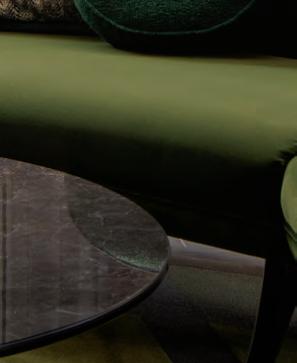Paris
Mexico


Mexico

Cambodia / Italy / California / Nepal








































































































































































- Enhance your wellbeing upcountry at Koele

THE ORIGINAL BAG


Create one aesthetic statement.
Gaggenau appliances: individually accomplished, exceptional together




It takes a different kind of energy to start something powerful. Introducing the new Continental GTC Speed. We’re starting something powerful, and so is Dossier. Congrats on your launch issue.

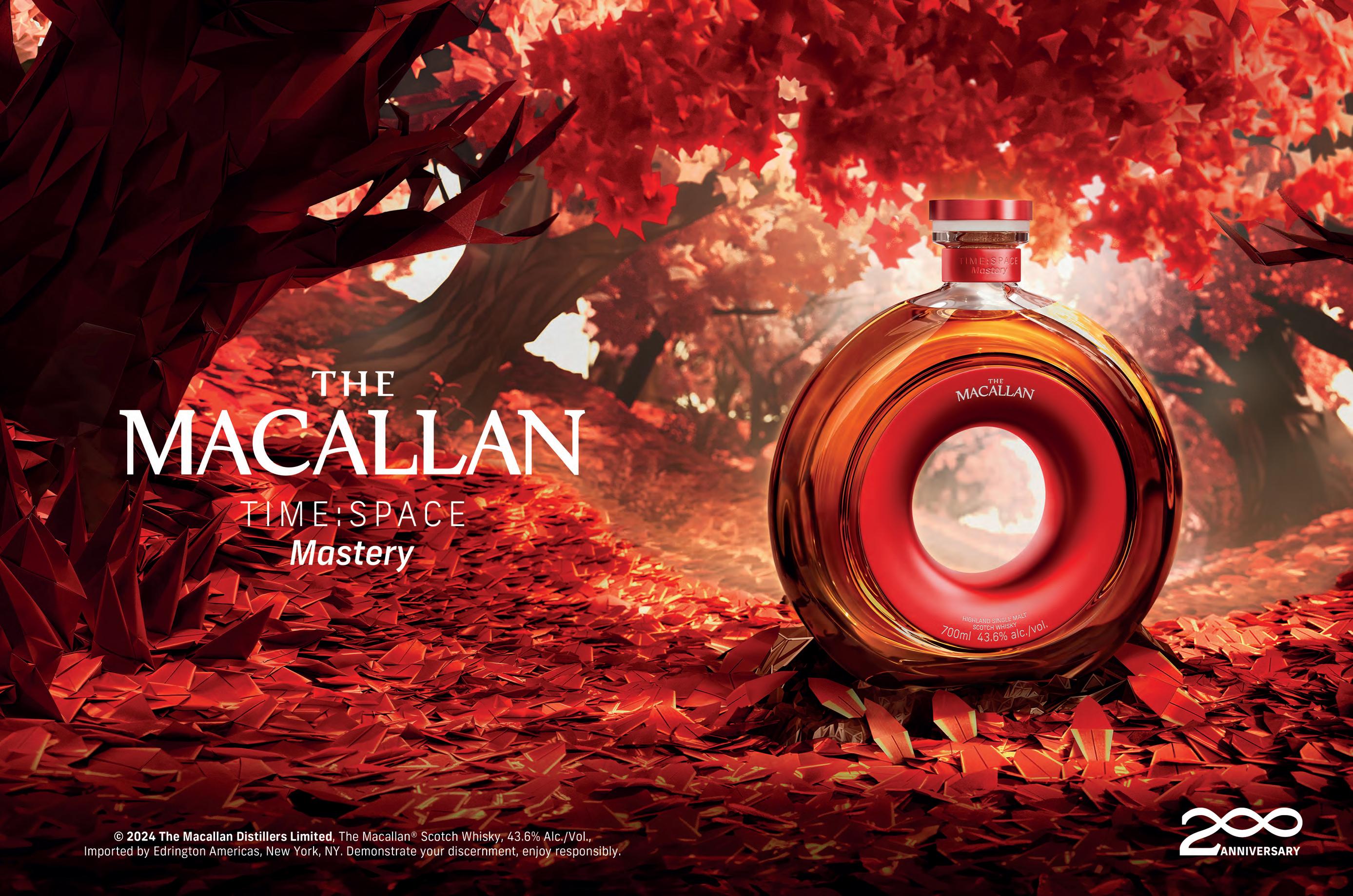

This is the second “first” issue of Dossier. The first time it launched was a long time ago — I was still in my 20s, as was most of our team. The magazine was originally conceived of as a creative endeavor providing contributors with a “white space” in which to share their expressions of the world. Its core tenet was to give equal weight to all forms of creative expression. Its first issues were put together on my kitchen counter. But Dossier outperformed its humble origins, growing beyond a print magazine to include a daily website and even a brick-and-mortar store. Despite these successes, after eight years, we closed the publication. We didn’t have the necessary foundations in place to grow it into a sustainable business.
Many of the team members and contributors who created Dossier remained my closest collaborators; several joined me when I was brought on to lead the 2020 relaunch of Departures as editor-in-chief. As an avid, lifelong traveler, I found moving into the world of global storytelling to be a revelation: travel is an endlessly wide tent that organically touches all aspects of culture. When the news of Departures’ closing reached us in mid-2023, our team’s immediate reaction was that we wanted to continue the work we had been doing, together. It didn’t take long for my business partner, Erin Dixon, and I to decide that the time was ripe to bring Dossier back from hibernation, working, as always, alongside Alex Wiederin.
In this new incarnation, Dossier will continue to draw on the creative friction that originally earned it critical acclaim. However, its aperture has widened to that of a luxury travel and culture publication that looks at the whole world. Dossier’s focus was always on culture at large, so placing travel at its center is a natural evolution. Tourism, at its best, is an industry with an enormous potential to enact positive change, and a pillar of our team’s work has been to seek out and shine light on those businesses and people who are worth talking about, thinking about, and promoting — we will continue doing that here.
I recently heard a line that really stuck with me: Luxury sits at the intersection of art and commerce. In its previous incarnation, Dossier was focused entirely on art. It was young, as were we, with idealistic notions about art and commerce being mutually exclusive. We have matured since then, and Dossier, in this new iteration, has as well. The best things are not always brand new; sometimes classics are classic for a reason.
–Skye Parrott, editor-in-chief



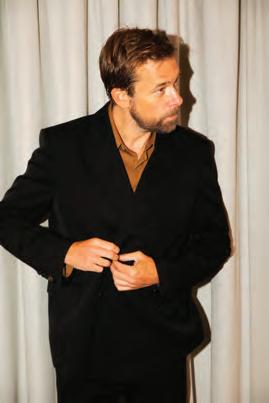

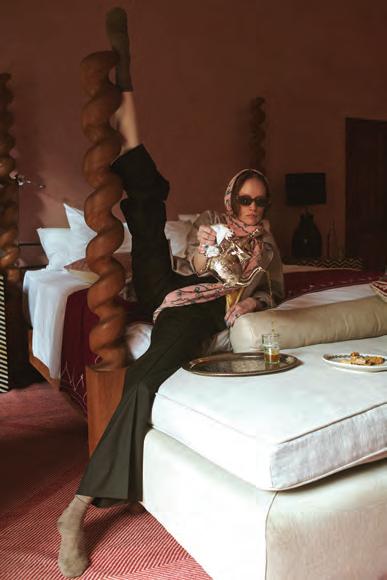


A Song at Dawn: Wander through the winding souks, vibrant streets, and exceptional hotels that have inspired prose and drawn people to Marrakesh for generations.
In the Medina: In a time of transition, Marrakesh’s craftspeople embody the international city’s history and future. Their artistry is not just a livelihood; it’s a commitment to preserving their cultural heritage.
Greater Expectations: Skye Parrott takes on the challenge of trying to understand what we talk about when we talk about sustainable travel.
Something Like Magic: Reflections from Sayulita, Mexico: as it was, how it is, and the people who make the place.
A Rite of Passage: Christopher Bollen reflects upon what it means to wear a good suit as he steps into a custom-tailored one from Gucci.
The Bigger Picture: A transformative trip to Cambodia introduces radical ideas of luxury and its potential to do good.
Object Lesson: At Hermès petit h, the legacy French house’s experimental atelier, magical thinking reconstitutes would-be waste into mind-bending wonders.
Coming of an Age: Brunello Cucinelli expounds on the winds of change blowing through our turbulent world and their potential to precipitate a brighter future.
Wherever We Go: An ode to not-so-humble hotel stationery — its multifacted personality and purpose, and the imaginative places it takes us.
Beautiful Rebellion: Deborah Turbeville’s photographs of Mexico, which epitomize the artist’s line-blurring version of reality, finally get their due in a new Louis Vuitton Fashion Eye album.
Genesis: Juan Brenner’s new photobook captures the intersection of history, culture, legacy, and potential that characterizes the Guatemalan Highlands and its young generation’s exchange with the world.



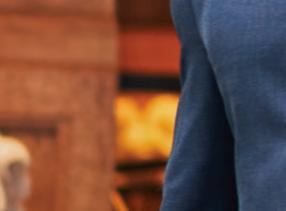


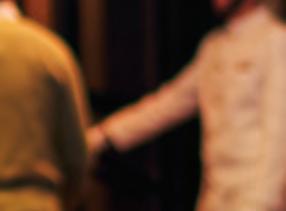













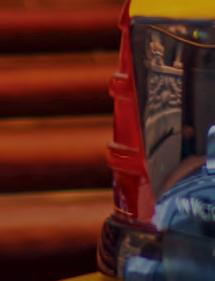

The Dossier: A collection of thoughts, ideas, recommendations, and discoveries from all over the globe.
Capital Escapes: From Paris to Rome to Amsterdam, these hotels are distinct, characterful oases that embrace their destination’s history while celebrating the best of today.

Novel Ideas: Musician, artist, and alt-rock icon
Kim Gordon goes deep on the books that have informed her life and work.
Super Natural: Czinger Vehicles and its founders are shaping the future of the automotive industry — and it looks a lot like nature.
What Lies Beneath: From wildly conceptual to peculiarly orthodox, there’s always more to Claire Choisne’s Boucheron designs than meets the eye. Memories of the Living: Artist Jammie Holmes creates visual poetry that uplifts his subjects in and beyond the moment.
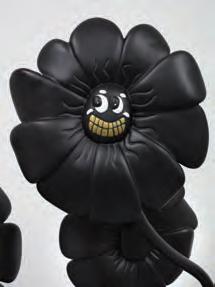
It’s That Simple: Chef Mina Stone and artist Madeline Donahue discuss the everyday art of the holiday table.
Taking Root: Combining oldworld plant breeding with modern sensibilities, chef Dan Barber’s new class of produce is nutrition-packed and incredibly delicious.
A Place Apart: Writer and cook Colu Henry finds fresh inspiration for her forthcoming book on Nova Scotia’s North Shore.
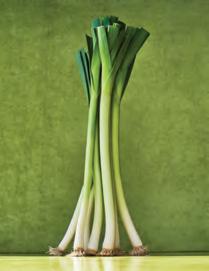

Field Notes: LaTonya Yvette shares an exclusive excerpt from her book Stand in My Window: Meditations on Home and How We Make it
Survival of the Fittest: When examined through a present-day lens, the 24 Hours of Le Mans reveals lessons for life as well as the track.
Between the Vines: A journey through three grape harvests exposes the fruit’s power to uncover hidden truths, long before it’s turned into wine.
On the Delta An intergenerational road trip through the Deep South conjures local and familial legends.
What’s Mine is Ours


At Dwarika’s Hotel in Kathmandu, a personal mission to save a piece of history becomes an inspiring preservation story.
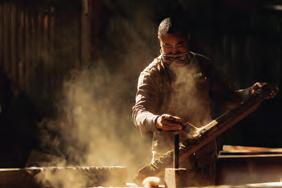
Sought and Found: From evocative scents to objects with a clear provenance to classics that get better with age, these are among our favorites.





A collection of eight gift boxes and certificates
Picture yourself relaxing among fragrant dunes on the edge of the ocean, wandering through delightful gardens infused with the scent of eucalyptus or gazing up at the pure azure of a clear blue sky–all inspiring moments that channel that almost indescribable feeling of being on holiday. Relais & Châteaux offers a range of gift certificates and boxes. Each gift box is an invitation to escape, offering experiences and stays for two people in properties that reflect the architectural and cultural diversity of Relais & Châteaux.
You find yourself perpetually drawn to the land of treasures that is Greece. Whether it’s Santorini’s colorful cli s or monuments of the Acropolis, there’s always another stretch of coast, ancient city, exquisite cuisine or superb winery that beckons. And it’s best experienced aboard The World’s Most Luxurious Fleet®
THE MOST INCLUSIVE LUXURY EXPERIENCE® TO LEARN MORE VISIT RSSC.COM CALL 1.855.573.1973 OR CONTACT YOUR TRAVEL ADVISOR









Christopher Bollen writer, A Rite of Passage
It took place in 1987, the summer between fifth and sixth grades. It was my first time out of the country and I went with my family to England and France. Unfortunately, this big trip also happened to coincide with the summer we were getting our first dog, delivered upon our return. So for two weeks, breezing through the English countryside and touring Mont Saint-Michele, I hoarded all of my film, refusing to take more than a dozen photos, to save it for the arrival of said puppy. Despite one major life moment overshadowing another, I do remember the excitement of the awayness, all the strangeness and newness of being in a foreign land that later, long after the dog was gone, would become an adult addiction.

My first significant trip was at 19 to Nepal. I had just come out of college and had no idea what my future would look like. During my time there, I lived
and worked with children in a small village close to the border with India. In the town, I met a Chinese writer called Valerie, who was struggling to finish a book on Buddhism. She told me, astonished and somewhat deceived, that after years trying to define the being, she had found that there was nothing to be defined. There’s only emptiness, and we are just one with this evolving world. Still today, almost 15 years later, I think about Valerie’s discovery.

Anne Menke photographer, Something Like Magic
In 1999, I spent two weeks at 5,000 meters with the Quechua people in the Andes Mountains of Peru, learning a lot about the importance of enjoying the process of living. The Quechua people are incredible and gentle. I remember their children herding llamas, with a smile on their faces all day long. When I returned to New York from this experience, it took me more than three days to reorient myself to my lifestyle, but the gift of living in the moment and taking in the magic of our beautiful planet remained with me.

Laura Smith writer, A Place Apart
This photo was taken in Myanmar in 2012. I’d traveled as a kid, but this was my first big travel experience as an adult,
and it forever changed my approach to new places. I was 26 and had no idea what I was doing. Myanmar had just “opened up” to tourists, so there was almost no tourism infrastructure and very little access to the internet. On a whim, I picked up the democracy activist Aung San Suu Kyi’s biography at an English language bookstore in Bangkok the day before I left. What a mistake it would have been to go without that context! It added layers of meaning to everything I experienced and challenged my beliefs about what it means to be an ethical tourist. Now I try to read deeply about places before I travel. Novels can be a beautiful way into a faraway place, too.

Nazih photographer,
My first trip to the United Arab Emirates, specifically to Dubai, marked my first adventure abroad. Although it was still within the Arab world, I was struck by the subtle yet distinct differences in culture, language, and even the facial features of people who, in many ways, felt familiar. Dubai’s opulence — the luxurious hotels, towering skyscrapers, and sheer scale of everything — was awe-inspiring, especially for someone coming from an emerging North African country. The experience was transformative and it ignited a love for travel that has only grown stronger. From that moment on, the thrill of stepping onto a plane and into a new world became addictive. Since then, I’ve explored more of the Middle East, neighboring countries, the United States, and beyond. And my journey is far from over.


Tell us about your first big trip and what it taught you.

Jess
Rotter illustrator, Between the Vines
One of my first big trips as a child was to none other than Walt Disney World in Orlando, Florida. It really was pure magic at every turn for someone obsessed with the characters, films, and music of that universe. At the time, I believed Goofy and I were married and loved to share that information with anyone who would listen. After being gifted a huge stuffed Goofy, I sat riding on the monorail back to the ’70s-looking Contemporary Resort with my husband and told my parents with a sonorous voice: Now everyone back at home will believe me.

Khira Jordan writer, Object Lesson
This is a (silly) photo of me inside St. Peter’s Basilica in the Vatican, taken by an Argentinian designer who was simi-
larly wandering around, wide-eyed. We had randomly struck up a conversation, which then led to a joyful, platonic romp through Rome. Looking at it now, this image literally documents the moment my love affair with traveling alone — and never knowing what any given coordinates have in store — began.

Avins
I was 20 years old in Chapada Diamantina National Park in the interior of Bahia, Brazil, on my way to study abroad in Rio de Janeiro. I had a lot of fear about going to Brazil — everyone kept telling me gravely to “be careful.” But I felt compelled to go. My first few weeks at a homestay in Salvador, Bahia, were rough. My host was a staunch evangelical; my Portuguese wasn’t catching on; my stomach was upsidedown. But two dear friends (and The Lonely Planet) all told me that this park was magical. I made a reservation at a pousada from a payphone, and got on a bus in the wee hours of morning, leaving the city during Carnaval by myself. Everything clicked here. All the Portuguese paid off. I hiked, swam, and climbed into an old Suburban with a gaggle of stoners from São Paulo. I fell in love with a friend for life. When I look at this picture I feel so much relief this girl found her path, and her people. This was where I learned that so much of adventure is simply about showing up.

Luis Rincón Alba writer, The Bigger Picture
My first significant trip was to visit drummers in a maroon town on the Caribbean coast of my native Colombia. They taught me that a drum holds more information than any library ever could. Since then, most of my travels (research) have focused on attuning my ear to the detailed and attentive listening required to uncover histories that remain hidden in plain sight. I teach this approach to my students at New York University’s Tisch School of the Arts where I am currently an Assistant Professor in the Department of Art & Public Policy.

Sinna Nasseri photographer, Super Natural
In 2019, I took a trip to the Amazonian state of Pará with Amazon Watch. We stayed with the Munduruku people and I photographed illegal logging and mining operations that negatively affected the region’s Indigenous communities. The experience deepened my natural inclination to live simply among those you love.



Discover world-class wellbeing retreats where you can connect with your personal goals to grow well while enjoying customized spa treatments, luxury accommodations, and exquisite fare from Sensei by Nobu
Greater Palm Springs, CA

EDITOR-IN-CHIEF
Skye Parrott
EXECUTIVE EDITOR
Erin Dixon
EXECUTIVE CREATIVE DIRECTOR Alex Wiederin
HEAD OF PARTNERSHIPS & COMMISSIONING EDITOR
Elysha Beckerman
DESIGN & VISUALS DIRECTOR Lisa Lok
ART DIRECTOR, PRINT
Michael Ricardo
HEAD OF PRODUCTION
Elissa Polls
EDITOR-AT-LARGE
T. Cole Rachel
SENIOR EDITORS
John Chuldenko
Alex Frank
EDITOR, ARTS & CULTURE
LaTonya Yvette
ASSOCIATE EDITOR & STRATEGIST
Mia Sherin
DESIGNER Nishi Patel
SOCIAL STRATEGIST Annie Lin
DEPUTY EDITOR
Jackie Risser
SENIOR EDITOR, JEWELRY & ACCESSORIES
Shannon Adducci
CONTRIBUTING EDITORS
Khira Jordan
Jeremy Malman
Maggie Morris
Mina Stone
SOCIAL MEDIA MANAGER Alessandra Berge
EDITORIAL INTERN Anna Kaplan
NEWSLETTER CONTENT MANAGER Hassan Ali
RETOUCHING AND PRE-PRESS The Logical Choice Group
SALES DIRECTOR
Gary Armstrong
SALES MANAGER Sophie Clark
PRINTING AND DISTRIBUTION The Logical Choice Group
CONTRIBUTORS
Luis Rincón Alba, Nacho Alegre, Daisy Avalos, Jenni Avins, Hisham Akira Bharoocha, Christopher Bollen, Aya Brackett, Juan Brenner, Alexandra Brodsky, Adam Brown, Cedric Buchet, Francis Ford Coppola, Elliott Cole, Francisco Costa, Bryan Derballa, Daniel Dorsa, Joséphine Dorvall, Eliza Dumais, Thomas Dupal, Matt Dutile, Camila Falquez, Stefan Giftthaler, Emanuel Hahn, Carla Hall, Mark Hartman, Sakshi Jain, Maira Kalman, Laura La Monaca, Arianna Lago, Levi Mandel, Shirley Manson, Anne Menke, Sinna Nasseri, Ilyass Nazih, Danielle Neu, Erwann Petersen, Jess Rotter, Eyal Shani, Julia Sherman, Kat Slootsky, Chad Silver, Laura Smith, Lisa Sorgini, Michael Stipe, Stephen Tayo, Hana Waxman
SPECIAL THANKS
Lani Adler, Steve De Luca, Claudia Haspedis, Zia Heller, Jay Meyer, Virginia Scott

The DOSSIER : A collection of thoughts, ideas, recommendations, and discoveries from all over the globe.

Lisa Sorgini, photographer
Orahovac is a tiny fishing village on Boka Bay, surrounded by the tallest mountains. I discovered it by chance this summer and ended up spending a month there. It remains a sleepy place, with a rhythm that you can tell has stayed the same for a long time. For me, it had an air of mystery and magic — and my daily swims in the silent bay are something I will return to in my mind for many years.
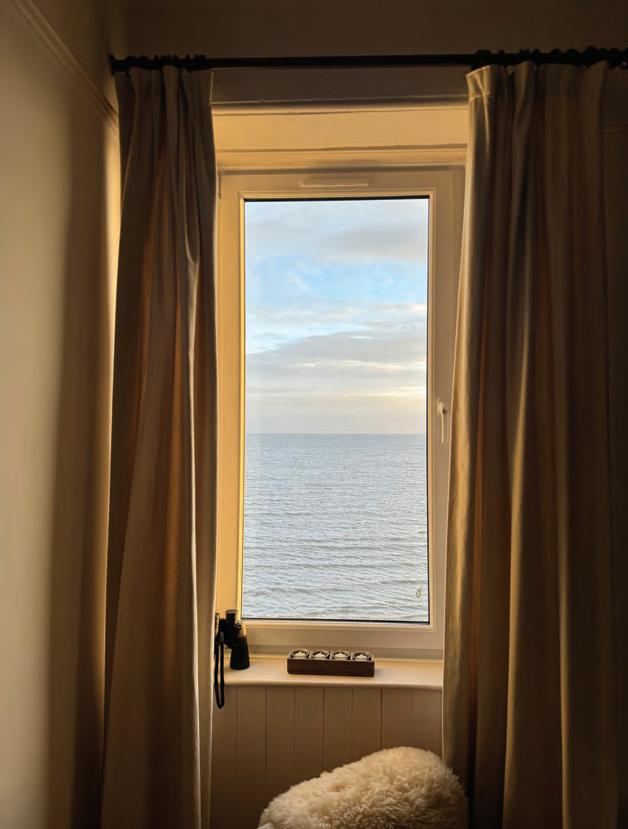
Shirley Manson, singer-songwriter
This is a bedroom window in Edinburgh. It is home to me on the island I hail from. Watching the sea, as I do from this window, has taught me so much about life and living. About rebirth and resurrection. About forgive-
ness and forgetting. About memory and time and letting go. The mystery of the tides will do that to you. So, yes — this is my most favorite outpost and outlook of anywhere in the world, at any time at all.

Eyal Shani, chef
When asked to send an image of a notable place, I thought about so many places that have seduced my heart — faces, landscapes, objects — and something that could represent them. And I found that a tray of roasted aubergine is an inner landscape of myself.
They represent the rare reason for living: When you are touching something that suddenly becomes all worldly, catching all your experiences, letting your hands move through it without thinking, and getting a new life that is a crystal of their wishes … That is the perfect place for me. Nothing is missing, nothing extra added. Perfection. Purity.
Julia Sherman, author and cook
In Madrid, I always eat wild mushrooms with a fried egg for lunch at El Cisne Azul, because radically simple cooking is the most aspirational.
Francis Ford Coppola, film director, writer, and producer


Erin Dixon, executive editor of Dossier
Nestled in Monti, every local’s favorite Roman neighborhood, Casa Monti Roma is both unmistakably of its place (eclectic like its historically artistic rione, yet effortlessly refinedlike Rome) and delightfully unlike any other hotel in the city.
The newly opened familyowned boutique property’s decor is a joyful riot of bespoke graphic textiles and custom hand-painted ceramics. Mediterranean hues, original artworks, and curated bookshelves collectively exude a cinematic sprezzatura , ease and elegance — w ith charmingly eccentric, modern touches that extend to the hotel’s fanciful bar and ristoranti , each serving contemporary takes on traditional Roman dishes.
On the fifthfloo, the capital’s �rst Susanne Kaufmann spa serves up a marble jacuzzi alongside journey-worthy massages and facials. Then there’s the rooftop terrace — quite possibly the city’s new best-kept secret, tucked away from the crowds, with unobstructed views of dusty
cupolas and sun-bleached terracotta peaks, framed by Rome’s famous hills and umbrella stone pine trees. It’s ideally enjoyed in the evening with a classic aperitivo or house cocktail, as the city’s pastel sunsets suffuse the sky and church bells peal.
Below, native Roman Alice Beltri — who recently returned to the city to join the Casa Monti team after working for fashion houses ranging from Dior to Valentino, traversing Milan and London — reveals a few other lesser-known treasures worth venturing out to visit.
Something to taste … La pizza al taglio at Roscioli and carciofi and calamari salad from Trattoria da Teo in Piazza dei Ponziani. Do not miss Camponeschi Ristorante and its wine bar. In Piazza Farnese, enjoy an aperitivo at Circoletto Roma, overlooking Circo Massimo — and try the pizza with pastrami. If you’re looking for classic Roman dishes, try Giulio Passami l’Olio or Felice a Testaccio for the best cacio e pepe.
Something to see … Panoramic views and sunsets from Gianicolo Hill, passing by Fontana dell’Acqua Paola.
A secret spot … Libreria Libri Necessari is a small
Thinking on Your Feet Maira Kalman, author and illustrator
When in New York, always walk as much as you can because all is revealed when you walk. You can see what you need to see and … etc.
Illustration by Maira Kalman from The Principles of Uncertainty. Kalman’s newest book Still Life with Remorse was released October 15, 2024.
Michael Stipe, singer-songwriter
Vienna is a great place to go and experience art. The last time I was there, we went to two openings and five museums in a single day — and we stayed at one of the best hotels ever: The Guest House.

books tore in Via degli Zingari (in Monti), where the owner hand selects pre-owned and antique books.
Something to take home
… Toko is the best spot for vintage-inspired jewelry. I especially love the signet rings. Le Tre Sarte for welltailored, handmade, made-toorder wardrobe staples.
Only in Rome … Edicola Erno is a new concept from Edicola Romana located in a charming piazza near Borgo Pio, offering curated magazines and coffee table books, pop-ups, and events.
Jackie Risser, deputy editor of Dossier
Many arrivals to St. Barths start similarly, with a puddle jumper (by Tradewind Aviation if you’re lucky) that lands on a teensy runway and a drive on will-we-or-won’t-we-fitroads that wind through topsy-turvy terrain and bustling villages. But only the best travel days end with the ocean steps from your passenger seat. That’s the magic of Le Barthélemy Hotel & Spa.
Nestled in Grand Cul-deSac, the retreat hugs a crescent bay, meaning: The beach is never more than 100 feet from the property’s open-air lobby. The gentle waves prac-
tically beg you to wade waistdeep into them with a glass of house cuvée or to paddle to the nearby coral reef alongside sea turtles. There’s even a Coral Restoration experience, one of many sustainable practices that have earned Le Barthélemy a prestigious Green Globe Certifiction this year.
Sticking to the sea theme, Le Spa at Le Barthélemy pairs an atrium with a sauna, Nordic baths, and (glow-inducing) La Mer facials — La Mer skincare gaining healing properties from seaweed, naturally.
Dinner at Abyss, meanwhile, tapped me into the flvors of the place. I savored mahi mahi carpaccio in a citrusy sauce that my server urged me to
soak up with fresh bread, and sole that felt like taking a bite out of the Caribbean — both crafted by the island’s first Michelin-starred chef, Jérémy Czaplicki. Seven Stars Bar also delighted this astrology lover with its 12 zodiac-inspired cocktails, including the Cancer, which was gingery, coconutty vodka heaven.
The hotel organized a rental car and a private boat cruise for me, too. Gliding along cliffs, by land and sea, I laughed at how often I uttered “Oh, my word,” amazed by the raw beauty surrounding me. How divine it was, then, to tuck into my luxurious, serene Sybille de Margerie-designed guest room at the day’s end.

Off-Center
Carla Hall, chef
When in Chicago, always look for restaurants on the outskirts of the metropolitan area. There you will findthe local spots that give you access to the cultures that make up the city. I recently found Dino’s Italian Pizza & Italian Restaurant and ate the best minestrone, served by the friendliest waitstaff.

The couple are retired school teachers who built a hanok on a hill in a rural part of Korea called Damyang-gun. It was the fist time I got to explore rural Korea as an adult, and I was captivated by the idyllic beauty of the countryside, a place where people took more time to appreciate the little moments of life. The kind hospitality shown by this couple made me immediately feel like family, as they implored me to stay longer and to visit again. It made me dream about building an escape for myself in the future, to connect to my cultural roots.

Force of Nature
Anne Menke, photographer
This photograph was taken during our trip to Indonesia last year. It’s at Ngalung Kalla in Sumba, an ecological
retreat that’s just a special place to stay. No words can describe it. My kids — teenagers — had the best time exploring the property and its permaculture garden, meeting locals in the village, and
learning about the culture. Christian Sea, one of the retreat’s owners, is a famous Hawaiian waterman. We went spearfishingwith him for our dinner. It was truly magical.
New York has some similarities with my home city, Lagos, Nigeria, and I find the streets truly inspiring to observe. There’s something particularly captivating about this young B la ck boy who I saw in Soho. He’s impeccably dressed, focused, at work. His appearance, the attention to detail in his attire, is simply beautiful to witness.
Reality
Adam Brown, founder of Orlebar Brown
In a city like London, inspiration happens organically, as A dam Brown, founder of Orlebar Brown — the esteemed men’s swim and resort wear brand, now under the Chanel umbrella — shares.
“London’s bustling streets, rich history, cultural diversity, and culinary delights captivated me. I felt like I was living the dream. Its dynamic blend provided everything I could ever want in a city.” Here he

reveals where he eats, drinks, and simply enjoys the moment.
Something to taste …
There are a few spots that truly stand out for me. One of my favorites is the iconic River Café in Hammersmith, where every dish feels like a culinary masterpiece. For plantbased delights, Farmacy in Notting Hill is an absolute must-visit. And for a taste of local flvor and vibrant atmosphere, Strakers on Golborne Road offers a dining experience that’s as authentic as it gets. For drinks, I favor the
Blue Bar at The Berke-
ley, designed by my late friend, David Collins, which holds many cherished memories. Additionally, for those who can secure an invitation from a member, Maison Estelle.
Something to see … The National Portrait Gallery, V&A Museum, Wallace Collection, Columbia Road Flower Market, Dover Street Market, and any bustling street. My personal favorite is the National Portrait Gallery for its rich historical context and artistic inspiration.
A secret spot … Simply sitting on a bench in one of the Royal Parks, such as Kensington Gardens, Regent’s Park, or The Green Park, to observe people passing by. Kensington Gardens is a special place for me, but each park offers its own charm and atmosphere. Something to take home … Anything from Connolly would be a great choice.
Only in London … Walking along the River Thames from Battersea Bridge to Tate Modern on a sunny Sunday morning is a London experience like no other.
Daniel Dorsa, photographer
Last November, after three years of waiting due to the pandemic, my wife and I were finallyable to go on our honeymoon in Japan. We traveled around the country for 17 days in perfect fall weather, watching Japanese maple leaves turn colors, eating everything in our path, and feeling the strong sun wash over us.
While there, we spent a day in Nara Park, aka the “deer park,” situated at the foot of Mount Wakakusa. With a brisk breeze at our backs, we explored this rather large park full of deer that had lost their instinctual fear of humans and replaced it with curios-
ity. Some would bow at you to receive a treat, while they all roamed the grounds knowing this is their home and we are simply visitors.
This image captures a candid moment: a man surrounded by deer, casually reading the paper. I never spoke to this man, but I felt like he naturally belonged here. His all-white outfit,illuminated by the sun behind him, gave him a nearlyangelic presence.
As quickly as he appeared before me, he walked off. It was almost as if he was there just for the picture. My wife and I spent the rest of our afternoon feeding deer and watch-
ing the sunset from a big hill, entranced by this magical place — but we never saw him again.
For your files … Beyond enchanting nature, Nara and its neighboring prefectures are renowned for their fertile ancient and contemporary culture. Shrines and temples surround Nara Park, which itself houses Tōdai-ji Temple, home to the world’s largest bronze Buddha statue. And just an hour away, Kyoto reigns as the country’s arts and crafts capital — as well as the birthplace and current center of Japanese tea.
Try your hand at kintsugi, the art of repairing broken pottery
at Pieces of Japan Studio or Roku Kyoto. Or experience the craft of Kyo-karakami, a type of paper that is handprinted using patterns carved into magnolia woodblocks, at Ritz-Carlton Kyoto. The sixseat Tearoom Toka serves up a traditional ceremony in a 100-year-old townhouse that evolves into a perspective-shifting journey, while on the city’s outskirts you can encounter yet another of the country’s high arts: Rakushisha, a thatched cottage now open to the public, was once the home of Mukai Kyorai (1651-1704), a disciple of Japan’s beloved haiku master Matsuo Bashō, who also visited and wrote about the site many times.

Francisco Costa, founder of Costa Brazil
Francisco Costa spent 13 years as the creative director of Calvin Klein before he took a sharp right, founding Costa Brazil, an ethical, eco-bene�cial skincare brand, in 2018. Centered around rare, natu-
Aya Brackett, photographer
This photo was taken in Tuscany, Italy, at the Bagno Vignoni hot springs in the Val d’Orcia Park. In the Middle Ages, the springs were a stopping point on pilgrimage routes stretching from Rome to Canterbury, England. When I was there a summer rainstorm approached, but the sun broke through the darkening clouds and illuminated bathers under a thermal waterfall. I was struck
ral Amazonian ingredients fr om Costa’s native Brazil, its products smell lush and voluptuous like a tropical night. Earlier this year, Costa bought the brand back from its parent company, with future-forward plans to return it to its roots, physically
and philosophically. Here he shares his favorite spots in his favorite place to visit in his home country: Rio de Janeiro, because he says: “It embodies the essence of Brazil.”
Something to taste … Picadinho and fresh fruit juice from Restaurante Guimas
Something to see… Insti-
tuto Moreira Salles
A secret spot … Praia do Abricó
by how modern and ancient people share an essentially unchanged experience in these warm, salty, turquoise waters.
For your files … While there is no shortage of wondrous places to stay in Tuscany, here are a few of our favorites (brought to you by the letter “C”): Castelfalfi, Castello di Vicarello, and Rosewood Castiglion del Bosco.

Something to take home … Saudades , a Portuguese term that characterizes the poignant desire for something lost or something that might have been.
Only in Rio … The magical sunsets at Arpoador.

Laura La Monaca, photographer
While my job as a photographer often takes me to brea thtaking locations, it’s the people I encounter who truly enrich my experience. And since moving to Hawai‘i, I’ve come to love the islands’ distinctive blend of natural beauty and cultural heritage. During a recent project at Hotel Wailea in Maui, I had the privilege of meeting Lauren Shearer, a local floral artist with a deep connection to the ‘āina (land).
Lauren’s passion for creating beautiful leis is evident in every piece she makes. She takes great pride in foraging her own flwers, ensuring that her creations not only look spectacular but also re�ect the island’s natural beauty.
For your files … It’s been just over a year since fires ravaged Maui, and conscientious tourism remains a cr itical driver of recovery. If you’re planning a trip, we’re partial to the Iao Valley Inn, a bed-and-breakfast situated within Mahina Farms, which offers cultural workshops and farm tours, connecting guests to the land and Hawaiian culture. Likewise, the Four Seasons Resort Maui at Wailea offers “A Wayfiner’s Journey” experience with Kala Baybayan Tanaka, one of Hawai‘i’s leading female navigators. To sample signature island flvors, head to Ocean Organic Farm and Distillery for one of the best lunches on the island and MauiWine, an island institution since 1974, for memorable vintages and panoramic views from 1,800 feet above sea level.

Elliott Cole, photographer
Towards the end of last year, my family and I decided to spend the month of January somewhere outside of the Unit ed Kingdom, away from the gray and damp. This would be our �rst overseas trip with our 8-monthold daughter. My partner was still on maternity leave and, typically, I don’t have much work in January, so we rented out our place and booked an Airbnb in southern Portugal. We found ourselves surrounded by orange groves and sweet potato fields, between the town of Rogil and the cliffs overlooking the
Halcyon Horizons
LaTonya Yvette, arts & culture editor of Dossier
It has been nearly a year since I flw from Dakar, Senegal, to Accra, Ghana, where I spent 72 whirlwind hours immersing myself in its intimate, impactful creative culture. And it’s been approximately 12 hours since I imagined returning to the capital. Perhaps that’s what happens when you only have three days to commune with a place that immediately speaks to your soul. I’ve explained this to myself as a sort of mediation: It’s what happens when you only spend 72 hours somewhere. I repeat it as a salve, an attempt to quell my longing for this still mostly unknown place. One day I’ll return, when the pace of life and other travels make it so. Until then, I’ll tend to my desires on the page.

For your files … Sample the menu at Kōzo, where African flavors mix with Japanese and Thai cooking techniques. Visit dot.ateliers visual arts center and artist residency for an exhibition. If time allows, take an hour’s �ight to Tamale to visit the Savannah Centre for Contemporary Art, a revolutionary artist-run project space, exhibition, and research hub created by Ibrahim Mahama. Just be sure to return in time for a beach sunset (or sunrise). A stay at centrally located The Kempinski Hotel Gold Coast City Accra makes it all possible — and houses a great tennis court.
powerful winter swells of the Atlantic Ocean. These pictures represent a grounding time, when we were able to slow down, sit outside, breathe, and be as a family — to get used to that new feeling.


Matt Dutile, photographer
At the northernmost reaches of Lhuentse, one of the least populated districts in the Himalayan nation of Bhutan, rests the imposing Dungkhar nagtshang (manor home). Near the country’s border with Tibet, this incredible estate is the ancestral home of Bhutan’s royal Wangchuck dynasty. In and of itself, it is a truly spectacular sight. But
when the young monk who had been our guide through the four-story structure began throwing the folds of his brilliant red robe over his shoulder, it was a moment I knew I had to capture. The folds of the fabric felt alive as they caught the wind. The photo encapsulates much of what I love about this Buddhist kingdom: incredible architecture, spirituality, and fleting moments of grace at the end of a road less traveled.
Bryan Derballa, photographer
The dunes in Wahiba Sands have a uniformity — all these billions of grains of sand create a singular block of color. But then, there’s an ephemeral geometry from the wind constantly blowing the dunes around and the way shadows shift throughout the day. The shapes are in constant fluxand are never quite the same day to day. It’s that tension, between the uniform and the ephemeral, that I loved so much. I could just lose myself shooting those dunes. It’s also easy to get physically lost, which fortunately I did not.
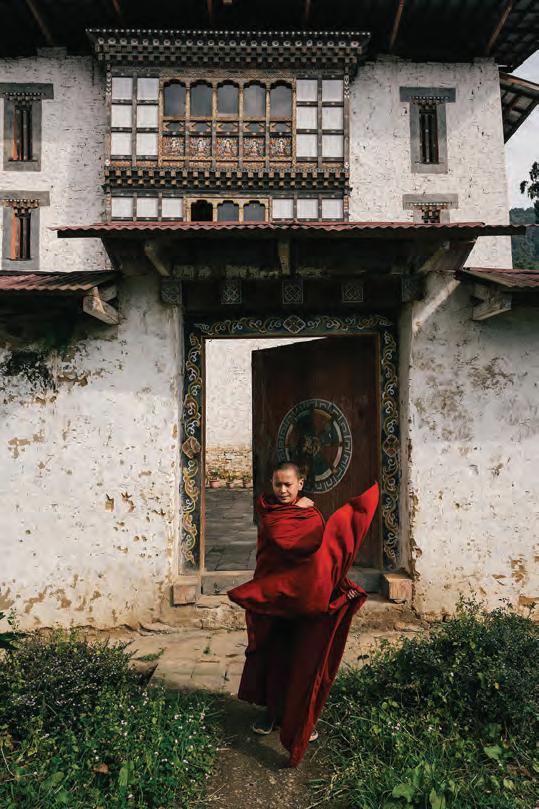
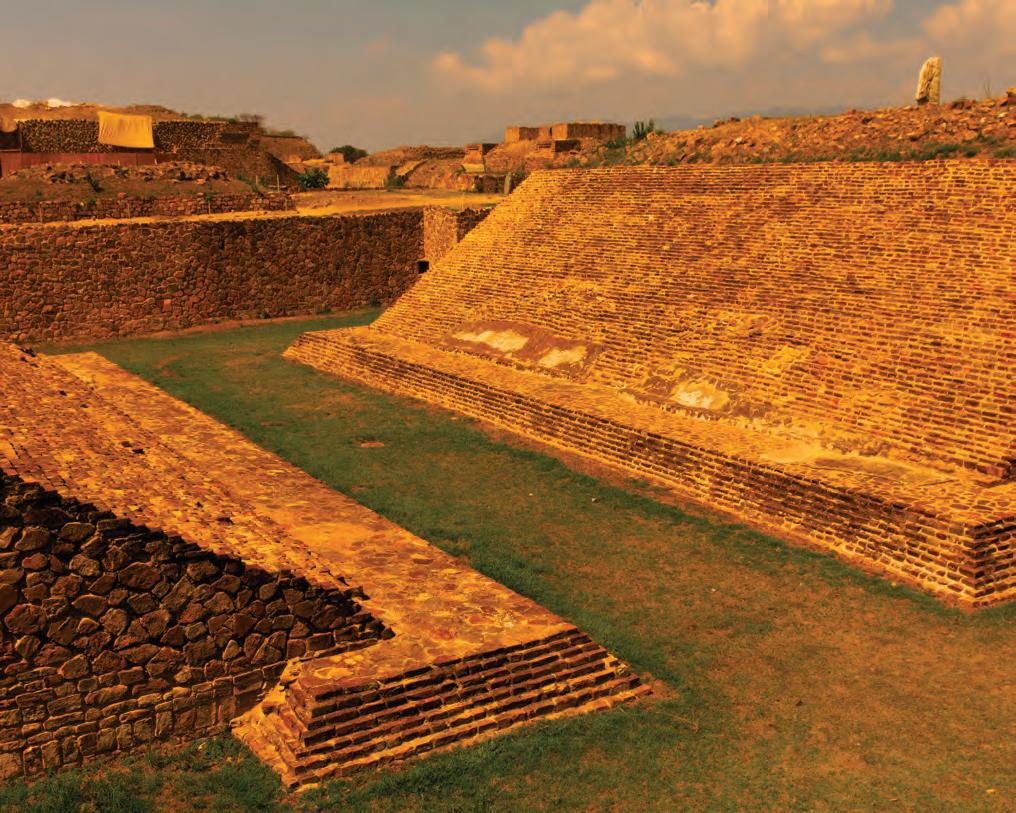
Mind Games
Levi Mandel, photographer
Near the entrance of Monte Albán, a massive archaeological site in the Mexican state of Oaxaca, lie the ruins o f a Mesoamerican tlachtli (ball court). Thought to be constructed somewhere between 200 and 500 B CE, the tlachtl was one of many similar ballcourts built throughout the historic region.
During Aztec rule, ollama (the ritual ball game played on the courts) was for nobles, often accompanied by heavy betting. Only the elite were allowed to witness these games, with leaders and important guests seated at both ends of the court. Play-
ers wearing heavy padding would use elbows, hips, and knees to knock a hard rubber ball through vertical stone rings at opposite ends of the court. Multiple myths mention the game, which was extremely violent and typically ended in numerous injuries. It’s also said that the winning team would sometimes sacrifice themselves to the gods.
It’s always a humbling experience standing on sacred land. Leaving my group to explore solo, I shut my eyes and picture the space filledwith music and noise. I imagine what smells might have wafted through the air, perhaps trash and decay,
but also smoke and food and spice. My eyes are still closed and I’m lost in thought when my wife nudges my shoulder. We walk back to our air-conditioned van to continue our adventures through Mexico.
For your files … For a different perspective on Oaxacan history and culture, visit Casa Viviana in Teotitlán del Valle, where generational craftswomen are transforming traditionally seashellshaped ceremonial beeswax candles into mind-blowingly ornate flwers and more. For equally evocative clay objects, visit 1050 Grados in Oaxaca City, where a cooperative of potters employs storied techniques to craft simply elegant vessels glazed in the rich hues of the surrounding geography.
While in the capital, make sure to also peruse the handwoven, handmade, naturally dyed textiles of Mexchic, created by a team of local women, trained in-house in couture sewing techniques. And don’t miss Juana la Vintage, a trueto-its-name shop housing a psychedelic kaleidoscope of rare treasures. As for lodging, Casa Criollo, a serene two-bedr oom residence in Oaxaca, curated by chefs Enrique Olvera and Luis Arellano and situated behind its namesake restaurant, intertwines the region’s cuisine, art, and design to mesmerizing ends, while Hotel Escondido combines old and new, local and international, into a custom eight-room property in the Valles Centrales region.

Arianna Lago, photographer
For the past three years, I have been traveling to the Ligurian coast to gather photographic material for a personal project. I love returning to this part of Italy because it evokes a sense of safety and sentimentality, reminding me of my childhood, even though I only began visiting as an adult. It’s as if time has stood still here: the children’s lifestyle of today closely resembles my own when I was young, allowing me to reconnect with how life was before I left the country.
When I am here, I usually begin and end my day with a swim, timing it for when the beach is deserted and the sun is tucked behind the hills. The water is invigorating, and being alone in the sea is a special
experience. Swimming while admiring the coast’s pastelcolored facades is like being on a Wes Anderson movie set.
My days are spent wandering, seeking authentic scenes of everyday life — teenagers diving off rocks or sunbathers pr ecariously perched on cliffs, searching for solitude. The rocks have a distinctive grayish tone with white streaks. Unique to this area, they remind me of a Luigi Ghirri photograph.
them between my finers, and inhaling their scents.
On my most recent visit, I unexpectedly ran into a friend from Los Angeles, which made me realize that this once-hidden gem has gained global popularity. But I hope it remains as I remember it, preserved in a nostalgic bubble.
Hours are also infused with sensory pleasures: the smell of home cooking wafting through the air, the sound of cicadas, and the sundry aromas of wild plants growing on the cliffs, such as figleaves, sea fennel, and wild fennel. I love picking them, rubbing
For your files … Located in northwest Italy, Liguria is an enigma, alternatively associated with Cinque Terre’s overrun beauty and Genoa’s (once) industrial grit. Within this spectrum lie endless cliffs and towns ripe for exploration. Our favorite home bases include the Renzo Piano-designed NH Collection Genova Marina, which welcomes guests with a brass-trimmed bar and wood-paneled rooms,
adding a cinematic quality to its nautical setting. Similarly maritime, but located in Portofino, Splendido Mare, a Belmond Hotel is an intimate, 14-room guesthouse located on the town’s scenic cobblestoned wharf, bordering its town’s main (charming) piazzetta. Royal Hotel Sanremo, in its namesake town, is a 126-room hotel within an unapologetically gilded palace. It’s surrounded by a subtropical garden with a beach club, three restaurants, and spa, but its idiosyncratic Gio Ponti-designed saltwater pool is reason enough to visit. Finally, Grand Hotel Miramare, an iconic 120-year-old, family-owned property in San Margherita, offers intoxicating Felliniesque grandeur along with those distinct Ligurian Sea views.











































The next generation of Rolls-Royce artisanship in perfect harmony with electric technology. Embark on an unprecedented journey that sees e ortless charging fused with captivating performance.





Discover the spellbinding Rolls-Royce Spectre with a bespoke product experience*. To schedule your personalized appointment, please contact the Rolls-Royce Motor Cars North America Client Contact team via email at clientservicesna@rolls-roycemotorcarsna.com.










































Around the Bend
Kat Slootsky, photographer
A bit of a misnomer for those of us who don’t casually “walk” along mountainsides in Scotland, The Quiraing walk is more of an active hike or climb — less the casual stroll one might assume. Still, it was one of the most incredible jaunts of my life … seeing the Isle of Skye from above, being surrounded by the blue sea and the rolling green hills, stumbling upon grazing goats perched along the mountain top. Then I turned a wide corner to find this Sotsman, seemingly out of a historical fition book, smoking a pipe in his kilt while looking out over the vast beauty of it all.
For your files … Follow up your Quiraing “walk” with a meal at the Corriegour Lodge Hotel restaurant. Here, fresh produce from the Scottish Highlands and regional seafood and beef star in a seasonal, ever-changing menu that includes dishes such as seared tronçon of turbot on crayfishcolcannon with steamed spinach and mussel and clam broth — served with a pictureperfect view over the Loch Lochy. After the meal, enjoy a drive through the fabled, ancient-growth Caledonian Forest. Then settle in for the night at The House Over By at The Three Chimneys. Set on the shores of Loch Dunvegan, this restaurant-inn offers more breathtaking panoramas and noteworthy (Nigella Lawsonapproved) finedining.
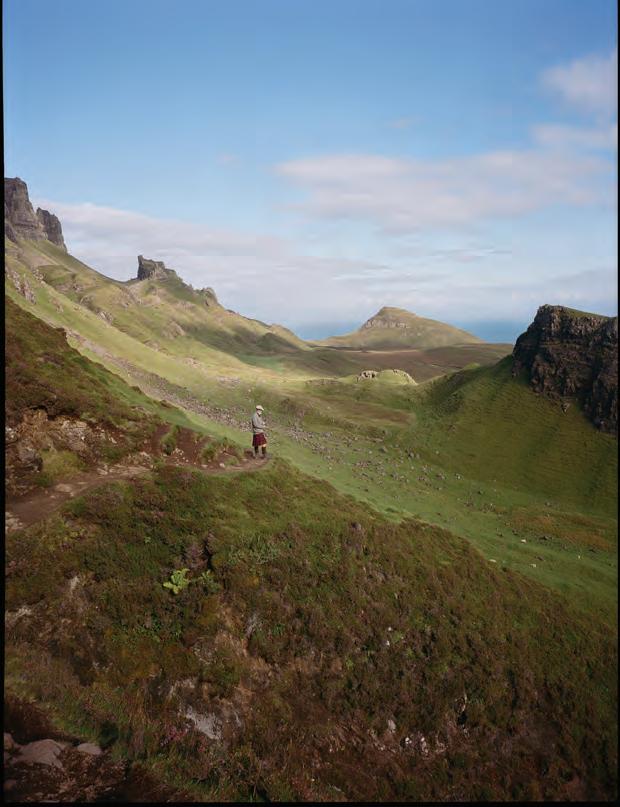

I love traveling with my twins. Okay, sometimes I love traveling with my twins, who are now 11 years old. This June, we visited Iceland, just a few weeks after a substantial volcanic eruption off the Reykjanes Peninsula. After a few days in Reykjavik, we rented a car and drove along the southeast section of the Ring Road, the 800-mile-loop that circles the country.
It rained our entire first week and temperatures never surpassed 50 degrees. Black volcanic rock stretched into the treeless, moon-like horizon. My daughter complained relentlessly from the back seat. I had to figt to keep the wind from shoving our tiny econo car into the highway median. I wondered if maybe I’d made a mistake bringing us all to Iceland.
Then, one day near the small village of Hvolsvöllur, we found this waterfall: Gluggafoss. There are thousands of waterfalls in Iceland and many are popular tourist destinations swarming with food trucks and tour buses. By some small miracle, we had Gluggafoss all to ourselves.
We walked a steep, narrow incline as far as I could bear before I started bawling (apparently I’m afraid of heights). Then we sat, listening to the thunderous sounds and feeling the mist shroud our faces. My son decided to sketch the view. My daughter took off her shoes and ran around barefoot. It felt majestic and intimate at the same time. I grew up in suburbia, where we cut and shape the environment into submission. How sublime, in contrast, to be in the presence of the great, brutal landscape of Iceland — a place that will not be tamed.




Words by Skye Parrott
Walking into Le Grand Mazarin feels a bit like being welcomed into the home of an older (well-to-do) Parisian woman with impeccable taste and a penchant for whimsy.
Set in the heart of the historic Marais neighborhood of Paris, the hotel is the fourth from Maisons Pariente, the family-owned luxury hotel group run by Patrick Pariente (co-founder of French fashion brand Naf Naf) and his two daughters, Leslie and Kimberley. The interior design of the properties, somehow feeling both homey and eminently Instagramable, has become a hallmark across their portfolio, with Le Grand Mazarin, their fist property in Paris, adopting a more cosmopolitan character.
Kimberley, who drives the identity of each hotel, shared that one of the ideas behind the design was to create the story of a cast of artists who had stayed there over the years, each leaving their mark as a gift for the hostess.
The pool feels as if a painter took a dip, looked up at the plain white ceiling and thought, “I could do something with this.” The
result: It’s as close to swimming inside a painting as one can get.
The guest rooms are similarly multitextural, with custom, modern furniture featuring fanciful flourishes mixed with antique French tapestries and traditional palettes. The eclectic style is incredibly cozy and can give one the sense that they are stepping into an incredibly well-appointed stagecoach from an early Wes Anderson film.
But it’s not all about the eye candy. The hotel’s restaurant Boubalé, led by Michelinstarred chef Assaf Granit, features Eastern European Ashkenazi fare, which Pariente described as “the last cuisine that hasn’t been made fancy.” The herb salad is one of the most delicious things I’ve tasted, ever.

Words by Erin Dixon
Smack in the center of Rome between the Trevi Fountain, Pantheon, and Victor Emmanuel II Monument, Piazza San Marcello can feel like a vortex: of tourist hoards and their flag-bearin leaders, of clustering government officialsfrom the nearby Senate and Cultural Ministry, and, naturally, of actual Romans. But this easily overlooked piazza is actually a portal — to ancient Rome and to a future rebalanced self.
Six Senses Rome is housed within the piazza’s UNESCO-listed Palazzo Salviati Cesi Mellini, which was built as a shared residence in the late 15th century by the three noble families that give it its name. The property became an open-air arcade in the 1900s, housing a cinema and shops, then the Bank of Rome in the 1970s.
These layers juxtapose harmoniously in the hotel’s serene, plant-swathed lobby, but the building’s true origins can be seen on the ground floo, through glass floortiles that reveal what is thought to be the city’s oldest baptismal font. Dating back as far back as the 4th century and connecting by underground passage to the adjacent Chiesa of San Marcello del Corso, it still holds water in its basin, setting a spiritual stage for the hotel’s newly constructed Roman thermae.
Reproductions of ancient Roman baths, the three pools follow the traditional circuit of calidarium (hot), tepidarium (tepid), and frigidarium (cold) while refleting Six Senses’ present-day promise to help reconnect you with yourself, others, and the world around you via a holistic six-pillar wellness philosophy. The brand has gained global fame for its pioneering blend of ancient healing practices, biohacking technologies, and destination-driven culinary and cultural offerings, but never before has it dropped them in the middle of a city: Rome is the fist urban offering from Six Senses, with London, Milan, Dubai, and Bangkok properties slated to debut in 2025.
The authenticity of the brand promise is realized for me via a treatment performed by the hotel’s visiting practitioner Suraj Varma, an ayurvedic guru from Kerala, India, whose intuitive understanding of my physiological state seems to channel a higher power — perhaps it does, here in this legendarily sacred place, blessed by atoning waters. Varma concludes my transformational therapy with a purifying discourse on healing: “Go slower,” he says. “Have real faith.”

Words by Mia Sherin
I arrived at the Conservatorium Hotel in Amsterdam in a haze, one created by a strong elixir of jetlag and the city’s morning fog — just as the sun was rising over its silent canals. Wandering through the property’s lobby, later described to me as the “living room of Amsterdam,” I was attuned to my rather spectacular surroundings by the din of early-rising guests and locals, which acted like a muchneeded shot of espresso.
Milan-based designer and architect Piero Lissoni redesigned the vast space around a decade ago, respecting the historical building’s significat past while shaking off any hint of dust. Scalloped, bricked walls nod to its 19th century origins as a national savings bank designed by Dutch architect Daniel Knutte, while a ukulele chandelier commemorates the property’s second life as the Sweelinck Music Conservatorium, which nurtured the city’s young musicians until 2008 and which contextualizes the hotel’s location within Amsterdam’s Museum Quarter, home to the Rijksmuseum, Van Gogh Museum, and Moco Museum. It also provides
a legacy foundation to the distinguishing artistic thread that runs through the property.
The Glass Library at the Conservatorium houses rotating exhibitions, often of contemporary artists. A wall near the fist-floorelevator houses a portrait by Bastian Woudt, a Dutch photographer who served as the hotel’s artist in residence in 2022, part of the property’s ongoing collaborations with local artists to develop its Residence Suites.
Speaking of suites, the welcome note in mine featured an original watercolor of the city. Later, over drinks with Roy Tomassen, the Conservatorium’s General Manager, I discovered that he had painted it. In fact, he paints every single welcome letter, which aptly sums up the hotel’s service: creative and extraordinarily thoughtful.








































































































































Musician, artist, and alt-rock icon Kim Gordon goes deep on the books that that have informed her life and work.
When Kim Gordon published her arresting memoir Girl in a Band in 2015, she detailed, among other things, her experience as a founding member of pioneering alt-rock band Sonic Youth, her work as a visual artist, the dissolution of her marriage, and a dissection of her California childhood.
The book was, in many ways, concerned with the subject of endings, but, ultimately, it signaled a creative rebirth for Gordon, who has spent the subsequent years continuing to write and make art and music, both as a solo artist and as a part of Body/Head. Earlier this year she released a celebrated solo record, The Collective, and has spent most of 2024 on the road. When we spoke, she was packing for an upcoming string of European shows, yet still managed to unpack the books that have most informed her life, work, and thinking.
TCR: Do you remember the fist book that really had a profound effect on you?
KG: Yes, The Lonely Doll by Dare Wright. It’s a kid’s book, but it’s kind of creepy. I must’ve been like four or fie when I fist saw this book; it’s all of these blackand-white photographs of a doll with teddy bears. There’s a baby
bear and a father bear, and all of them are placed in these very adult-seeming situations. I forget the exact plot, but the doll shows up and the little bear find her and brings her home. Later, she gets into trouble by going into this wealthylooking Upper East Side apartment and getting into the homeowner’s jewelry, putting it on. The father bear comes home and I think he spanks her. It’s sort of perverse. But there’s something really existential about the photographs that cemented in my mind this idea of what New York was and what a wealthy person’s apartment should look like. It also influened my idea of fashion in a certain way. The book itself is actually kind of depressing. I got a copy of it for [my daughter] Coco when she was little. I remember reading it again and thinking: Wow … This is kind of disturbing.
TCR: What books did you gravitate towards as you got older?
KG: As a teenager, I read a lot of D.H. Lawrence. I think it was because his books had a lot of very sensuous parts to them. They were very sexual, but I also just loved his writing. The imagery is so evocative and almost visceral. I remember loving Women in Love, in particular. It’s just such a beautiful book. I was going to reread it recently. I got a copy and started reading the intro and
was like: Oh, this is about post-industrialization. Thinking about it inspired the lyrics for a song I then wrote called “ECRP.” It’s a sort of anti-war song that collects all of these ideas that warn: This is where technology can lead you. Somehow the two were connected in my mind. I probably only started reading D.H. Lawrence because my brother was reading it or something, but I really did like his writing. So much so that I remember doing a watercolor inspired by the book.
TCR: Are there any contemporary novelists you love?
KG: Denis Johnson. He wrote great female characters. I love The Stars at Noon. The whole atmosphere of that book is fascinating. This American woman has gone to Nicaragua in the early ’80s, and there is a coup that is happening, or has just happened. She’s moving around in this very fractured country trying to survive. Claire Denis made it into a filma couple of years ago, which I have yet to watch. She had told me she was going to make it before the pandemic and Robert Pattinson was going to be in it. So I reread the book while I was stuck at home, and I was picturing him as the main guy the entire time. Then the movie comes out and it’s some other actor in the role.

“I always felt so out of place in New York, especially when I first moved there. I was just like: ‘Oh my God, I just look so Californian and middle class.’”
I just loved that book because it felt very real in the sense that it was really about [the woman’s] own crisis and identity. And even though you are getting this sense of her interior life, you still don’t totally know what’s going on with her. Is she really a reporter? Why has she really gone to Nicaragua? Anyway, I love a lot of Denis Johnson’s books. Angels is also amazing. And Fiskadoro, which has a similar atmospheric quality.
TCR: Given your California roots, it only makes sense that we’d talk about Joan Didion. If you grew up on the West Coast, there’s no escaping her.
KG: It’s true. I love so much of her writing, so it’s hard to really pick just one book specificall. After I put out my memoir, I was doing an interview and the journalist asked me if I read Joan Didion. I said, not really, that she was kind of on my list, but I never got around to it. And she was like, ‘Oh, you should, because your writing and art remind me of her.’ So I started reading The White Album and then Slouching Towards Bethlehem. I loved Play It as It Lays and A Book of Common Prayer. I just really love the way she writes and, it’s true, it connects to some common California fascination for me. My mother’s family goes way back in California. They were gold rushers who came to the Sacramento Valley. Her book Where I Was From has this essay called “Trouble in Lakewood” about this very middle-class, manufactured suburbia that was built in the ’50s for Vets and their families and to support the burgeoning Douglas Aircraft plant. The piece follows the
evolution of the development through the years. By the ’80s, it had completely deteriorated and eventually became emblematic of the emptiness of this fake, middle-class life they had tried to create. As industry left the area, everything fell apart, many of the local boys turned into bullies and rapists; the value of everything there went down. I’m kind of obsessed with real estate, so that was particularly interesting to me.
TCR: Didion writes very critically about California but, for a lot of people, even her often-withering depictions remain a romantic idea of what California is really all about.
KG: Yeah. Even as she takes it all apart, you still want to go there. I totally agree. I’ve always thought that LA had this very dark underside, but that didn’t dissuade me. I read a biography of Didion recently — The Last Love Song: A Biography of Joan Didion by Tracy Daugherty — that was really good, mostly because it also had a lot of her writing in it. Sometimes I feel like biographies don’t end up telling you much about the actual person, but this one felt different. There were all these passages she wrote about driving down the highway to Palos Verdes and it being this beautiful place — not like now, where it’s just some wealthy community sliding into the ocean.
TCR: I asked Bret Easton Ellis about his favorite books set in LA. How do you feel about his work?
KG: I really loved his last book, The Shards. A big part of it was that it made me nostalgic for the areas in LA where
“I probably only started reading D.H. Lawrence because my brother was reading it or something, but I really did like his writing.”
I grew up. You know, Westwood Village, going to the Hamburger Hamlets. I love that he talks about how one of his favorite movies was American Gigolo and how it inspired him when he was in high school. I recently rewatched it and was amazed to see that it also takes place in Westwood Village.
TCR: For so many years, people really associated you — both culturally and aesthetically — with New York. Are you surprised that you ended up living back on the West Coast?
KG: I never thought about it too much until it happened, but I always felt like I carried it around with me. I always felt so out of place in New York, especially when I fist moved there. I was just like: ‘Oh my God, I just look so Californian and middle class.’ I tried to make myself look more punk. I remember the composer Rhys Chatham once said to me, “Kim, you’re always going to look middle class.”
TCR: Last but not least on your list of books was Pattern Recognition by William Gibson.
KG: This was the fist William Gibson book that wasn’t really science fition, or some kind of cyberpunk story. Again, I loved this book because the female character is so good, so interesting. It’s also about the idea of someone being a kind of “cool hunter” in the culture, trend hunting for corporations. It was a pretty novel idea at the time. I’m also very into crime-noir stuff, so I liked it a lot for that reason. Also, the Sonic Youth song “Pattern Recognition” was inspired by it.
TCR: Next year will be the tenth anniversary of Girl in a Band. Did the experience of writing that book have any affect on you as a reader — or change the way you think about other people’s memoirs?
KG: To be honest, I don’t really read that many memoirs. And now there are so many. But they are going to reissue [Girl in a Band] next year, and I think I’m going to write a new chapter to add to it. I also did this small art book, Keller, about my brother who died a few years ago. Even though it was a sad subject, I really enjoyed writing again. I guess that’s what I learned from doing the book: Not just that I could write in this way, but that I also enjoyed it.


Czinger Vehicles and its founders are shaping the future of the automotive industry — and it looks a lot like nature.
One doesn’t expect to find auto parts in an art museum.
Yet at the Getty Center in Los Angeles, a rear frame perched on a pedestal is oddly organic. It looks like something culled from a jungle or snapped from a coral reef. The frame was designed and produced entirely by computers, without human intervention, at Divergent 3D in Torrance, California.
Kevin and Lukas Czinger, the father and son founders of Divergent Technologies and Czinger Vehicles, strode through their factory’s large, roll-up door like two astronauts in The Right Stuff Together they helm two companies poised to revolutionize how we make — well, almost everything. “We’re unusually close,” Lukas confided.“Up until I was seven, my dad was like superhero material for me.” Kevin threw his arm around his son for a photo. It was a warm, human connection in a building full of formidable, industrial technology.
Lukas walked me to Czinger’s latest hypercar, the 21C. Stripped of its bodywork to expose its “BioLogic Skeleton,” the chassis looked like the remains of an imaginary deep-sea creature washed ashore: fibous, freeform, cellular. It was designed by software that mirrors nature’s evolutionary process, wherein organisms compete for material and energy over millennia, continually refiningtheir structures to arrive at an optimal design. In Divergent’s human-made evolution, software is fed such design parameters: the function it’ll need to perform, the forces it will need to endure, the space it will occupy. Then the software runs thousands of simulations, mapping, designing, and refiing the object. “It’s been evolved to be perfect against a given set of requirements, just like the leaf on a tree has evolved to take in the most sun and be most water effective or compete in its niche

— in this case, [the niche] is hypercar performance” Lukas explained.
In the production area, I encountered a dozen or so assembly robots positioned in a circle, their heads bowed as if in a Kubrickian cyber ceremony. This is where the designs are realized. There are no scraps; there’s no welding, stamping, or machining. There are no trimmed pieces falling to the floo. There’s no waste. Divergent uses additive manufacturing (commonly known as 3D printing) to create whatever parts it needs, when it needs them. Designs are uploaded into printers that melt a proprietary aluminum alloy and layer it precisely where it belongs.
Peering into the printer, I watched 12 lasers dance in an intricate pattern. Once a layer is complete, an arm sweeps away the excess metal (which is later re-used), and the lasers recommence their dance. Unlike traditional manufacturing, there’s no tooling or molds. Divergent can use the same equipment to make car parts in the morning and satellite parts in the afternoon by merely uploading new instructions. Currently, 50% of the company’s business is in the aerospace sector. It also produces structures for satellites as well as surface and underwater vessels.
Beyond the factory doors, this robot’s work is tested on tarmac. Lukas told me

Czinger’s 21C is the fastest car in production. Configued like a figter jet, with the driver and passenger seated in single file it recently set lap records at both Laguna Seca and Circuit of the Americas, while meeting all crash-testing requirements and emissions regulations. Some of Divergent’s components are up to 40% lighter than its traditionally produced predecessors, which Lukas contextualized for me. “When you’re saving 20 to 40% of mass, you’re using 20 to 40% less raw material. That’s as direct and obvious an environmental impact as you can get. Scale that across millions of cars and you’ve got the biggest new automotive environmental impact technology in
the world. You’re pulling 30% less material out of the earth.”
It didn’t take long for other luxury automakers to take notice. Walking through the factory, I glimpsed parts bound for some of the world’s most established manufacturers, like McLaren and Aston Martin, marques who’ve built their reputations on creating handcrafted cars. And earlier this year I peered into Bugatti’s new Tourbillon and noticed some components tucked inside that looked unusual. Lukas smiled when I asked him what it felt like to be shipping his parts to Bugatti. “It feels awesome. What it validates is the power of this technology.
Bugatti’s a high-tech company embracing the highest technology … Right now, on chassis, [that’s] us. That’s a very rewarding feeling.”
Although technology is at the fore, people are still in the Divergent picture. In the assembly area, workers bolt the printed components together by hand, readying a car for delivery. We moved to a finishedvehicle, where Lukas swung the butterfly-hined doors upward and showed me the 21C’s interior. While sparse and purposeful, it’s full of traditional, handcrafted detail. Leathers from Scotland’s Bridge of Weir line its surfaces. “When I see the hard and soft contrast, when I see the AI-generated structures but also the artisan craft, it creates this very compelling tension and ultimately makes me want to drive the car,” Lukas explained. It’s about that engaging experience, and that’s the emotion: the performance, but also the feel. There’s an emotion to sitting in something you’ve worked on for eight years and represents the efforts of 500 people — all the near misses and all the successes all wrapped into one thing you can actually experience. For me, that’s next-level.”
In a sense, I left Divergent with more questions than answers, wondering if my perception of beauty was contingent upon its origin, if we can decouple art from artists, and whether computers can be craftsmen. But Divergent’s software has no artisan aspirations. Maybe instead these machines can act as mirrors, their evolutionary exploits sparking in us a newfound appreciation for the perfection of nature’s processing power, an understanding of the graceful distribution of a leaf pattern, the fractals in romanesco — or the subjective structural beauty that lies beneath the skin could illuminate a path to a progressive future, even if that skin is made of carbon fibe.

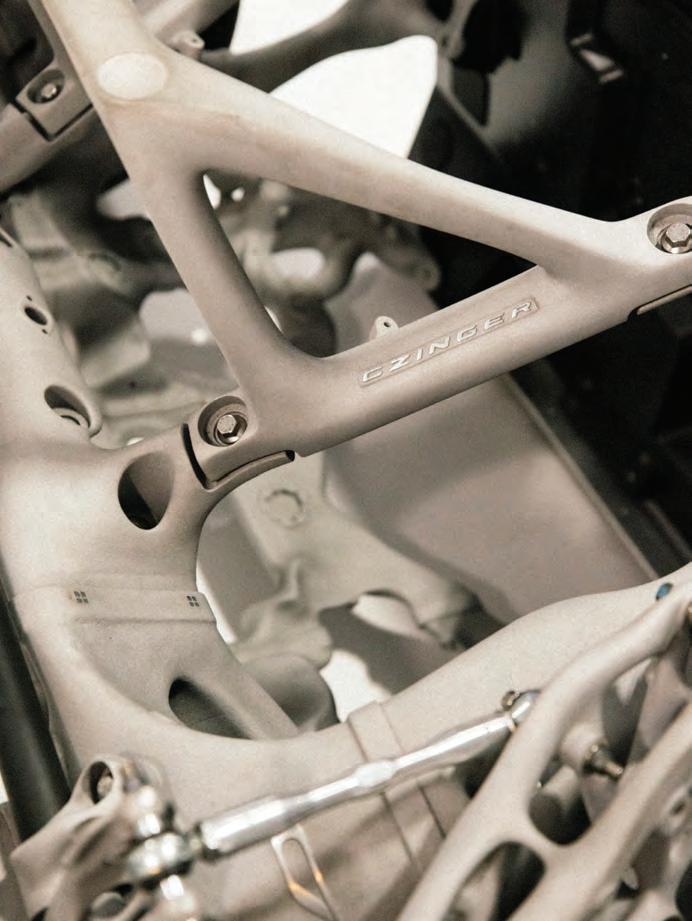

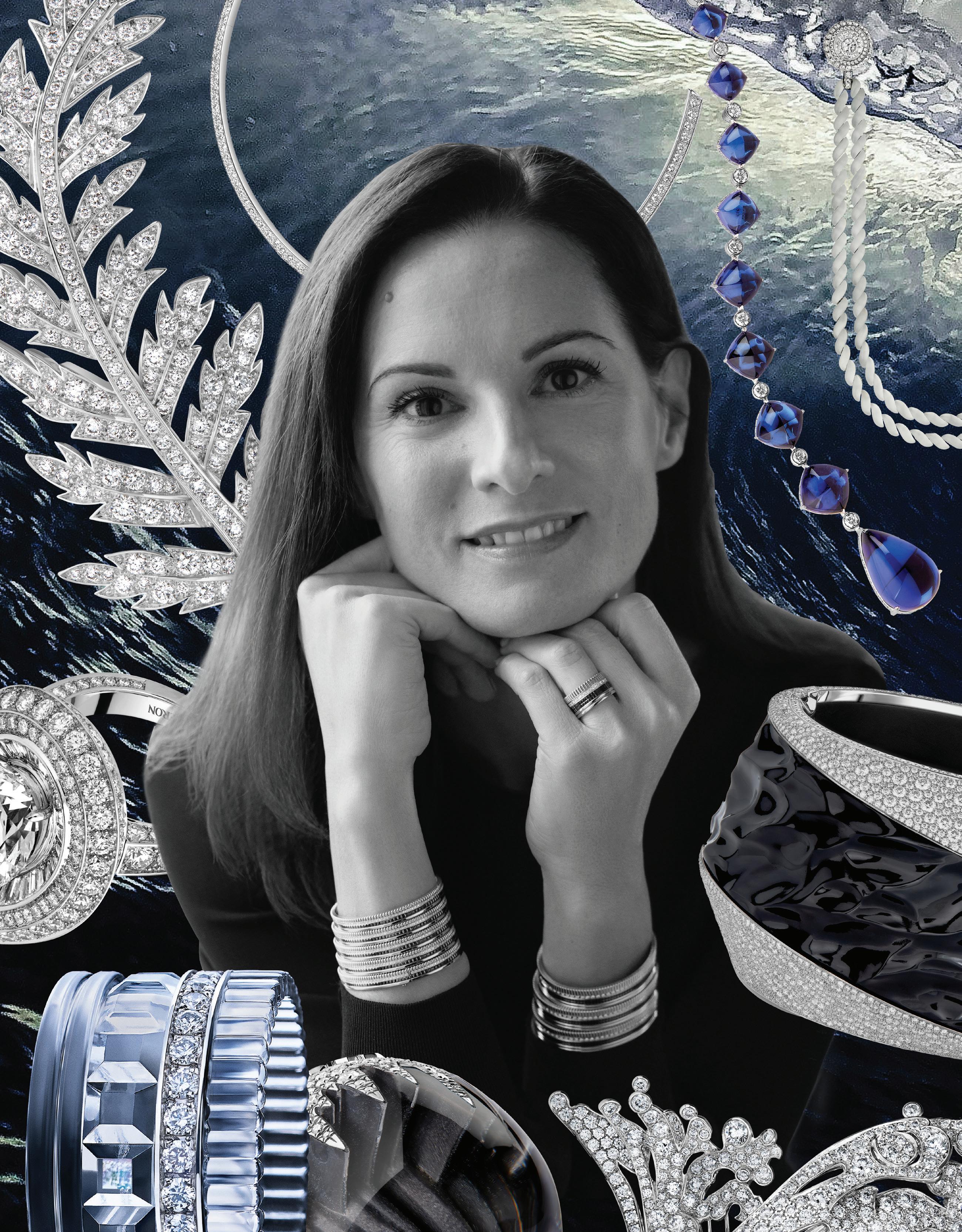
From wildly inventive to peculiarly orthodox, there’s always more to Claire Choisne’s Boucheron designs than meets the eye.
The idea of capturing water came to Claire Choisne during an inspiration trip to Iceland. Choisne has been the creative director of Boucheron over the past 13 years, and she was researching for the heritage French jewelry house’s latest high jewelry collection, Or Bleu. The inspiration eventually also led to the creation of a special-edition piece that uses 5D optical data storage (sometimes referred to as “Superman memory crystal”) to record the sound of moving water, depositing the audio inside of ring patterns sculpted into Glassomer (a solid silica nanocomposite that can be processed like a polymer) — all of which sits on a slick but unassuming band. The Nordic island’s black sand also captivated Choisne and her innovation team, who found a German company that could compact the sand using 3D printing and polymer binder, which was precisionsprayed onto the sand in fine layers. The creative director juxtaposed the sand with diamonds to recall the white foam of the incoming tide. Another piece, the Cascade necklace, recreates a different body of water that inspired Choisne: a sparse but vertically impressive waterfall documented in a photograph by Santino Martinez. Choisne and her team of jewelers used 1,816 white diamonds to create the jewel, which measures nearly five feet tall and can be converted into a shorter necklace and a pair of earrings.
Choisne’s collections, which take about two years from conception to realization, tap into all of the extravagance and decoration that one would expect from a Place Vendôme jeweler — only bigger and even more elaborate:
diamond-dripped bibs, exceptionally rare gemstones and out-there settings, pavéd trompe l’oeil bows and other gigantic pieces in the spirit of haute couture (belts, breastplates, epaulets), plus recreations and reinterpretations of archival pieces. Since 2020, Boucheron has divided its high jewelry collections into two categories: Histoire de Style, which pays homage to its archives and the legacy of the brand’s founder Frédéric Boucheron with collections that play up heritage details, such as the use of rock crystal or the 145-year-old Question Mark necklace; and Carte Blanche, which gives Choisne exactly that to imagine new frontiers of jewelry design and execution.
“
capsule, introduced in 2022 as something of a “concept car” of jewelry. In it, Choisne juxtaposed Cofalit, an industrial byproduct that resembles charcoal (it’s made from asbestos and other waste materials), with diamonds. “I always question what is precious. For me, it’s not the biggest diamond in the world,” she clarifies.
I always question what is precious. For me, it’s not the biggest diamond in the world.”
Ultimately, Choisne’s collections are a reflection of her — a designer who cannot be neatly categorized. Trained at the Haute École de Joaillerie, Rue du Louvre, she is as much at home on the workbenches of Boucheron’s atelier as she is in the environs of corporate luxury.
Even within these more fashionforward collections, the designer takes a meticulous approach. For example, to achieve a specific hue of red for the Tie the Knot hair jewel in the More is More collection, Choisne and her team worked for months to finally arrive at just the right color, using lacquer, titanium dyed with a cataphoresis treatment, and red bioacetate. “Nothing is ever set in stone, so we must be very agile in our thinking,” explains Choisne. “As we all share the same vision, the way we work is very fluid.”
An evolution from classic stones and materials, in fact, is one of the hallmarks of Choisne’s work. It’s visible in Carte Blanche Holographique from 2021, which explored all of the ways materials can refract light by employing holographic ceramics and different types of opals to showcase the concepts of opalescence, light rays, and light waves. It can also be seen in the Jack de Boucheron Ultime
Clad in a tailored dark suit, dark hair pulled back, stacks of Boucheron’s Quatre Classique bangles and rings on her wrists and fingers, Choisne was a picture of grace as she walked private clients through Boucheron’s installation at the Cooper Hewitt, Smithsonian Design Museum in New York, celebrating the brand’s new Madison Avenue boutique, which opened this fall.
In spite of the opulence her work reflects, privately Choisne reveals an appreciation for simple curiosities. In her spare time, she collects shell jewelry, which she admires but never wears. It’s fitting that her earliest memory of jewelry is not just of wearing her mother’s charm bracelet, but of examining the inner workings of a miniature house charm that dangled from it. “It was so precise, and I thought, ‘How could a person do this kind of work?” she recalls. “I was more interested in technique and the craft than by the piece itself.”


“Before you get to my studio, at the front of the street, there’s this light pole. It’s full of morning glories. Full. Up to the wires. It’s morning time and I’m walking my dog; man, these [flwers] are gorgeous. And when I left the studio that day, they were dead. Success, beauty — all of it is temporary. You have these nice, pretty purple plants, right? But they’re dead by the end of the day. In Louisiana, life and death are a part of the culture. We celebrate that,” artist Jammie Holmes tells me, his eyes soft, passionate.
Morning glories are like trumpets in colorful bloom. For me, they recall my Brooklyn childhood, when I watched musicians gather in front of the church’s altar on special occasions, calling upon the instrument’s rich timbre to broadcast, to celebrate God’s presence, to remind us to take note and listen to the Word. This scene is similarly reconstructed in Holmes’ Church Folks exhibition, which dressed the walls of The Gordon Parks Foundation in Pleasantville, New York, with Black women donning Sunday hats and sometimes gold teeth. This memorialization of bodies and objects just before and after church service is “what felt like home,” Holmes explains. After all, “going home” for Black folks in the American South references not only a place of shelter but also what happens when our bodies leave this Earth.
Seeing those morning glories cycle through life and death within hours propelled Holmes toward the flipsideof that exploration: expressions of “being here.” It led him deep into research about the origins of particular flwers, as well as their cyclical phases, and, eventually, to the poetic expressions seen in his most recent show, Morning Thoughts, at Marianne Boesky Gallery in New York. In it, Holmes’ venerated human figues bloom from daylilies and morning glories, referencing the foundational ecology of our world. “At fist, I was not going to put any figues in [the flwers]; it
“The precipice that separates noise from peace A pinch of the ever-evolving magic
A precious place combines and still confirms the space A oneness and togetherness
There’s a morning thought”
– Gil-Scott Heron
was more about the spirit of that plant. I needed somebody to see that spirit.” Holmes shares.
Holmes spends much of his free time at thrift stores, collecting and examining memorabilia from other people’s lives. During one of his visits, he found a photo of a family. In that photo, he saw not only a version of his family and himself but also the plants he cared for in his home. “A lot of me had to become one of the plants,” he explains, threading this association. “When I was painting them, I thought of having faces coming out the inside.” He notes how folks in the South, despite many assumptions, have an incredibly realized connection to the land.
I’m particularly fascinated by Malcolm, a work from the series featuring a boyish face pushing out of a lily. When I ask Holmes about its origins, he reveals, “I have three different Gordon Parks [photographs] in my house, and one of them is a picture with this boy. His back is turned and [he’s standing in front of a street barrier that says] ‘Do not cross.’ This was a kid at one of Malcolm X’s speeches. I did some research and I saw this other photo this other photographer took at the same event, with a group of people. So I used one of the kids from that speech [for Malcolm], because I’m such a fan of the idea of revolution and change.”
Before our conversation, Holmes sent me a video of a woman dissecting America’s regional dialects. As the map moves, so does the texture of her tone as she links certain sections of New Orleans to New York and the Irish migra-
tion, which influened both places. In the deeper South, closer to Thibodaux, Louisiana, where Holmes was born and raised, she explains that French colonization flttened the tongue. I think of her explanation as I hear Holmes speak of his exhibition in New York, his move from Louisiana, his fist ever-visit to an art museum — in Dallas, less than a decade ago. Like language, his story reminds me, art and flwers migrate and pollinate as do people.
By the time this story reaches you, the Morning Thoughts exhibition will have concluded, its works having found new homes all over the world. I ask Holmes how he feels about their scattering.
“With this exhibition, I was getting back to putting myself in the position to ask: What if I was a plant? Since I felt some kind of way about the idea of these things dying so fast. To be able to see the poetry in that, that’s what I specialize in. That’s why I call myself a poet versus anything else. I always quote this Tupac verse, ‘And even as a crack fiend,Mama, You always was a Black queen.’ [Tupac] took something derogatory, then he said, but you’re a Black queen. He uplifted her. That’s how I feel about the people I paint: Even though you’re going through this, you’re going to live forever because I’m going to put you in these places, these spaces so you can live forever. We are not going to forget that y’all existed, that the everyday people existed. I know people who didn’t get a chance to even bloom long enough. So many things are so short-lived.” Words by LaTonya
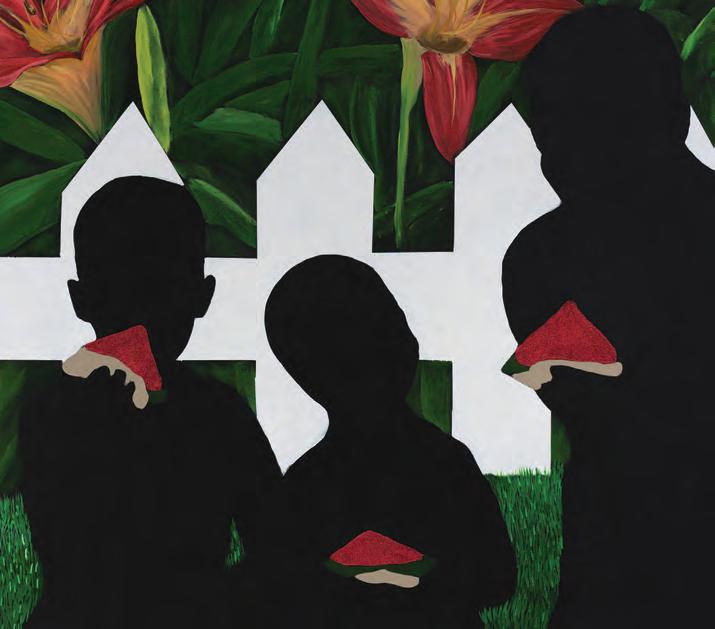
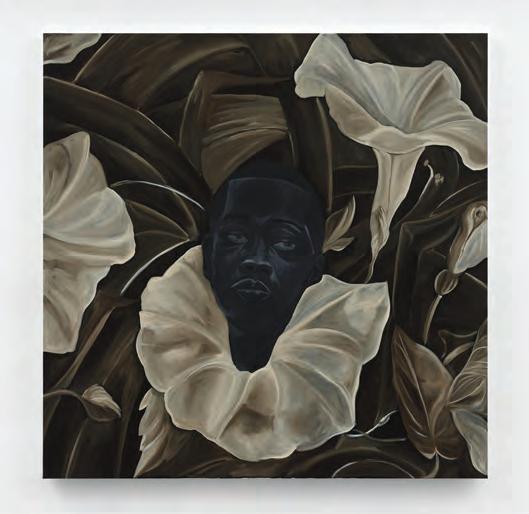
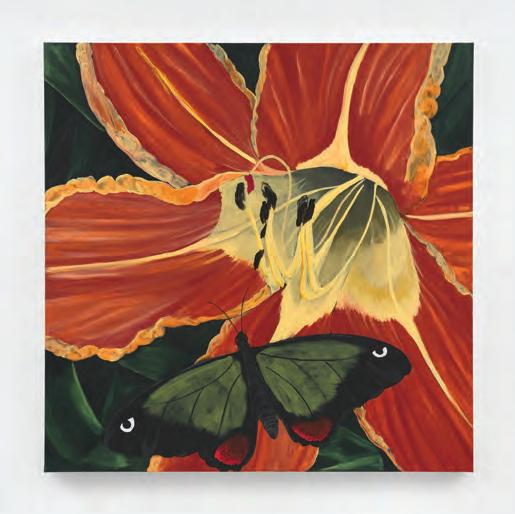




Maple Candied Pecans
2 cups raw pecan halves
1/2 cup maple syrup
1/2 teaspoon fine sea salt
Sprinkle of ground cayenne (optional)
Sprinkle of cinnamon (optional)
Combine pecans and maple syrup in a cast iron or nonstick pan. Cook over low heat, stirring constantly, until the maple syrup has evaporated and there is no liquid left. Sprinkle mixture with salt and other spices (if desired). Spread on a sheet tray lined with parchment paper and cool completely before serving.


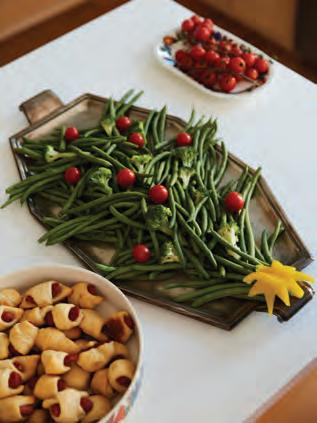
Pigs In a Blanket
2 packs crescent roll dough
1 pack mini hot dogs (halved) or hot dogs (cut into 1-inch pieces and halved)
Cut the dough into rough mini triangles and roll up the hot dog any way you want — each comes out a little different, with its own personality. Bake at 400°F for about 12 minutes, or until golden brown, and serve.
Veggie Christmas Tree
1 lb green beans (washed and trimmed)
1 bunch of broccoli (cut into florets)
1 pint cherry tomatoes
1 piece of yellow pepper (for the star)
Arrange green beans and broccoli into a Christmas Tree shape. Decorate with the cherry tomatoes and cut a star from the yellow pepper to adorn the top. Serve with dip or as is.
The “Death to the Cheese Plate” Cheese Plate
Pick one type of cheese — we chose a beautiful larger cheese that could be cut in half. Arrange it with different crackers or bread and a fun knife or two.
Berry Bowls
Donahue also likes to keep little bowls filled with fresh berries as a light and healthy party snack. She fills many small bowls and places them throughout the space.

Chef Mina Stone and artist Madeline Donahue discuss the everyday art of the holiday table.
I met painter and ceramicist Madeline Donahue at daycare drop-off years ago, when our children were small . I was instantly drawn not only to her but also to her artwork, which depicts often funny, expressive, and uncomfortably intimate portraits of motherhood that felt all too familiar. As our friendship has evolved, I’ve come to understand that Donahue’s work is also a refletion of her life’s philosophy — her way of being in the world. This Texan hospitality and creative sensibility make her an effortless host, who instantly makes you feel at home.
I got to benefitfrom this “rebellious openness” to the fullest last year, when Donahue asked me to throw a holiday party with her. Ahead of the occasion, we talked a lot about “party food.” It should be easy, fillingbut not heavy, and simple enough to allow the host to participate in the fun, we decided. Also, having multiple cheeses on a cheese plate is overrated. Too many cheeses, too many gross knives. So we turned the tradition on its head: One type of cheese, many different crackers.
Ahead of this year’s holidays, I returned to her kitchen to discuss the roots of this philosophy and to capture a few of her recipes for seasonal delights, such as addictive maple candied pecans and Christmas trees made of green beans, broccoli, and cherrytomato bells.
MS: Can you share a bit about yourself and your work?
MD: I make paintings, ceramics, and drawings that center around intimacy and motherhood. My work is colorful, playful, and often humorous. I was born and raised in Houston, and I’ve been in Brooklyn for almost 20 years. I have a studio downstairs here in my home in Brooklyn, which I share with my husband Ian and two children. My creative practice is c omple tely intertwined with my daily life.
MS: Do you have any rituals, memories, or traditions you have centered around food and the holidays?
MD: There are 400 things I could say. By the time I was born, the women in my mom’s family were tired of traditional American holiday meals. Every holiday became an excuse to be really playful with food. Instead of having turkey, we would have tenderloin — or we would have Cornish hens. There was always an incredible salad and some kind of vegetable. I love the rebelliousness of that, how each holiday was: “We’re going to do whatever we want.” That carries over in the way I approach entertaining and it bleeds into my creative practice as well.
weird to talk about. Making artwork about them is subtle enough and safe enough where you can be silly, but also provocative. It’s like a rebellious openness.
MS: Can you tell us about the dishes you’re going to make today? How are they meaningful to you?
MD: These dishes are specificallyfrom experiences that I’ve had with you, throwing parties together. They have to do with the mantra that I’ve made for life, which is: Keep things easy and fun. I want to have food that looks fun but is also simple to throw together. These dishes are an outline or a starter kit for a party.
MS: Run me through each.
“ Every holiday became an excuse to be really playful with food. ”
MD: We’re going to make a cheese plate, with one cheese. We mutually decided that cheese plates are overdone. The knife gets too gross and the cheese gets gross. We’re going to make a holiday tree out of green vegetables. We are going to make pigs in a blanket, I guess you’d call them. They’re a little bit kitschy, a little cheesy, but they’re easy to eat, great for sustenance, and you’re not going to drop stuff all over your clothes. We are also making maple candied pecans. They’re so quick to make, and at both parties we had last year everybody talked about the maple pecans.
MS: I really like that idea of being rebellious and welcoming at the same time.
MD: It’s very easy for me to embrace people and make them feel safe and comfortable. At the same time, a lot of what I’m exploring in my work are things that are completely normal in our daily lives, yet are somehow embarrassing or

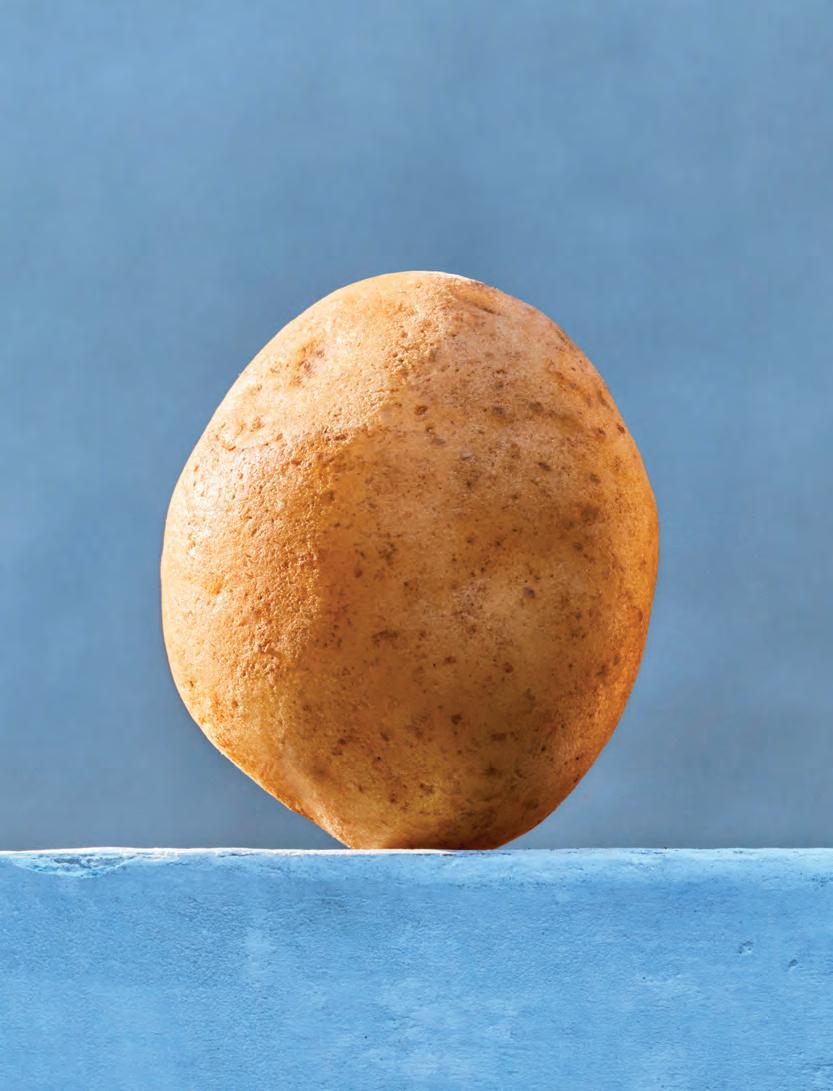





Combining old-world plant breeding with modern sensibilities, chef Dan Barber’s new class of produce is nutrition-packed and incredibly delicious.
A beet might be considered a humble vegetable.
Its earthy flavor, unyielding texture, gnarly roots, and irregular shape make it a less obvious favorite than, say, a pert cherry tomato or creamy avocado. Sure, a standard beet can be roasted, peeled, and dressed up in a salad. But a beet sexy enough to make New Yorkers stand in line on a Saturday?
This was the dream of Row 7 Seed Company, and it came true this fall when patrons of Katz’s Delicatessen lined up for a limited edition of Katz’s famous pastrami sandwich, piled with beets instead of beef.
“It was totally electric,” said Irwin Goldman, the Wisconsin plant breeder who developed the particular beet variety sandwiched between Katz’s rye bread. “I could not believe that so many people would be agitating to get to the counter to eat a beet-pastrami sandwich.”
That beet, called the Badger Flame, was the result of decades of work by Goldman and his colleagues at the University of Wisconsin. The frenzy surrounding it came compliments of Row 7 Seed Company, the brainchild of Michelinstarred chef Dan Barber. Beginning in 2000, Barber helped mainstream the farm-to-table movement with his Greenwich Village restaurant, Blue Hill (today Family Meal at Blue Hill), and Hudson Valley restaurant and agricultural center, Blue Hill at Stone Barns.
Now, with Row 7, Barber and cofounder Charlotte Douglas are collaborating with a network of breeders such as Goldman to follow the food supply chain back even further, to the very genetics of the vegetables they serve, and working with growers to help these veggies reach tables across the United States. Row 7 began selling seeds for seven special varieties in 2018, and since 2022 has been expanding to sell wholesale produce to markets via a nationwide farm network.
While the standard produce found in grocery stores is bred for shippability and shelf life, Row 7 is breed-
ing vegetables to bring forth flvor, nutrition, and even beauty. You might call them designer vegetables. Consider the Honeypatch squash, a miniature Butternut, sized down to sit comfortably in the palm of one’s hand; Sweet Garleek, an elegant allium that crosses the mild sweetness of a leek with a whisper of garlic aroma; the Midnight Roma, a deep purple tomato packed with antioxidants. Like designer clothing, these veggies are hyped to create demand, which is where Barber’s network of chefs comes in.
“Vegetables don’t taste good in our supermarkets because nobody’s demanding the kind of flvor that chefs demand,” says Barber. “It’s totally possible to democratize nutrition and flvor.”
In the case of the Badger Flame, Goldman had been at work in University of Wisconsin greenhouses since the 1990s, trying to diminish the earthy flvor many find distasteful in beets and amp up the fleshs fier colored streaks. For years, he was growing, harvesting, and testing thousands upon thousands of beets, cross-pollinating selected plants under paper bags, and doing it all over again until he arrived at the sweet, mild, flame colored sample he brought to Barber’s kitchen one fateful day.
“It’s a beet you can eat raw,” says Barber. “It’s incredible. I started giving it to chefs and people were going gaga.”
was shaped like a yam.”
And yet, these factors can make the vegetables more user-friendly. Once you’ve deftly halved a Honeynut squash, you may never go back to what Douglas calls the “fear factor of chopping a giant Butternut.” The Badger Flame’s oval shape feels good in the hand and is easier to peel than a cylindrical beet — and incidentally, when sliced, it fitsperfectly on a slice of Katz’s rye bread.
I witnessed what Douglas calls Row 7’s “veggie propaganda” recently, when she and Barber were in Los Angeles taking Sweet Garleek, the aforementioned love child of a garlic and a leek, on something of a junket. The ingredient showed up on special menus across the city, at buzzy restaurants including Kismet, Pine & Crane, Quarter Sheets, Spago, and Osteria Mozza — where I tried it braised and fried atop burrata with caviar, and as the base for a savory parmesan brodo topped with duck prosciutto.
“Vegetables don’t taste good in our supermarkets because nobody’s demanding the kind of flavor that chefs demand.”
And yet, for the mass market, it was a tough sell. “Everyone said, ‘It’s shaped like a yam. It’ll never work. No one will ever want it.’”
Barber was undeterred.
“Our company is like the Ellis Island of these reject varieties that supposedly no one wants,” he says. “They’re what is called an off-type. They have something about them that doesn’t fit spec: the Honeynut squash was much smaller than a Butternut squash; the Badger Flame
Those dishes were decadent, to be sure. But it was the Sweet Garleek bunch I brought home from my local Whole Foods that blew me away. According to instructions, I left the long tops attached rather than discarding them as I would from a leek. I sliced off the roots, rubbed the stalks with olive oil and a sprinkle of salt, plopped them on the grill, and turned them a few times. Once they were bright green, tender, and charred, I tented them with foil before chopping them up and serving them to my family with a squeeze of lemon. The bottoms were sweet and soft, the tops a little garlicky and papery crisp. We cleaned our plates.
These vegetables might need chefs to sell them, but the real genius is in their nature.
“The breeder is writing the recipe,” says Barber. “The chef or home cook is really there to just bring forth the genetics, because they’re incredibly powerful and delicious.”
Writer and cook Colu Henry findsfresh inspiration for her forthcoming book on Nova Scotia’s North Shore.
If you are lucky enough to be invited to Colu Henry’s seaswept home on the North Shore of Nova Scotia, she may greet you at the door with homemade lobster dip and other indulgent yet simple Nova Scotia-inspired snacks.
Home — as a concept — has been on the writer and cook’s mind of late. She and her husband Chad are dividing their time between their home in Hudson, New York, and Nova Scotia, where they are restoring their 1866 farmhouse, The Windy Poplars — a nod to Anne of Green Gables and the poplar trees that line the property. It was a working farm for over 100 years, and they are only the farmhouse’s third owners.
The design decisions they’re making for the house seem less like choices and more like commands from this landscape, as life here takes on a different pace. “I’m able to tune out to what’s happening in my industry or the big city and truly be in the moment,” Henry explains. She often starts her day with a dip in the ocean, noting that being near the water has lowered her stress levels. “I’m not living an overly social life; I’m cooking and writing and experiencing the beauty of where I am on my own time.”
Nova Scotia has also inspired Henry to relish simplicity in her cooking. “The deep, rich red soil on the North Shore produces some of the most incredible new potatoes I’ve ever had,” she reveals. “When they’re boiled and tossed with lots of salted butter, there is truly nothing greater.”
This evolution is evident in her forthcoming cookbook, Colu Cooks: Better at Home , which is slated for publication next spring and follows Back Pocket Pasta, a collection of weeknight pasta dishes inspired by her Italian-American heritage, and Colu
Lobster Dip Welcome By
Colu Henry
More often than not, when our friends arrive at The Windy Poplars for their Nova Scotia vacation, it’s too late for lunch but too early for dinner. This means it’s a “snacks for dinner” affair. Everyone is excited to be reunited; there is always much chatter and catching up to do. I prep this dip ahead,
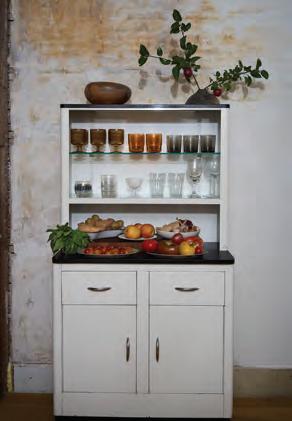
Cooks: Easy Fancy Food , an unfussy take on elevated hosting. The new book contains recipes inspired by both of her homes and ingredients native to each place, interwoven with essayistic musings and Chad’s photographs of the lands that inspired them.
“I’m not living an overly social life; I’m cooking and writing and experiencing the beauty of where I am on my own time.”
Storytelling, Henry explains, is an essential part of cooking for her. A recipe for battered pecorino cutlets with sungold tomatoes and crushed olive salsa comes with the tale of friends stopped by on a rainy night with a flt of local strawberries, lettuce, and beer. Reading her writing feels a great deal like taking a little imaginative vacation to someone else’s dreamier life, where something wonderful is always on the stove and gorgeous, little impromptu gatherings happen all the time. You leave her pages with a sense of potential: You could spruce up the things around you, and with a little effort here and there, make your life beautiful like that.
so when they do arrive all I need to do is heat up the oven, slice some vegetables, pull out some cheese and cured meats, and open some wine. I prefer to divide the dip into two ramekins, because that means we’ll have one to warm up the next evening after a long beach day. But, should you want a larger serving to feed more people, you have that option as well.
Preparation time: 25 minutes
Serves 4 to 8 (depending on your ramekin journey)
2 Tbs butter (plus more for greasing the ramekins)
1 shallot (minced)
1 8-oz block cream cheese (softened to room temperature)
8 oz lobster meat
1 Tbs Mexico Lindo (or other hot sauce of your choosing)
2 oz shredded mozzarella
1 tsp lemon zest
2 tsp lemon juice
Kosher salt
Freshly ground black pepper
Heat the oven to 375°F and butter your ramekin/s (one 8-ounce ramekin or two 4-ounce ramekins). In a medium skillet, melt the butter over medium heat. Add the shallot and cook until softened, about 3 minutes. Season with salt and remove from heat.
In a large bowl, combine cream cheese, lobster meat, mozzarella, hot sauce, lemon zest and juice, and shallots. Stir well and season with salt and black pepper to taste. With a spoon or spatula, add the lobster mixture to the ramekin. (I like to pile it high.) Place on a baking sheet and cook for 15 to 20 minutes, until it is warmed through and the cheese has melted. Turn broiler to high and cook for a minute or two until golden spots appear. Serve with an assortment of sliced vegetables (such as cucumber, fennel, endive, celery and radishes) and crackers.


LaTonya Yvette shares an exclusive excerpt from her book Stand in My Window: Meditations on Home and How We Make it.
Let me wear the day
Well so when it reaches you
You will enjoy it.
— Sonia Sanchez
For the past few months, I have been waking up twice: at 4:00 a.m. when the sky is still dark and even the cats are quiet; and again, or fully, at 11:11, in the late morning. This is when I glance at the clock on the oven, fridge, or on my phone and begin to track how time moves in unison with my body. Waking up late indicates the morning clouds have cleared and my stride has begun. It is a glorious awakening, as if led into the day by an angel. Not like at four, when I wake up in a near sink-full of sweat in my bed and mattress, totally unaware of what day it actually is. At four, I wake up terrifie, as if my body has done something awful, and for a good twenty minutes, as I gulp water while it drips from the sides of my mouth, I try to track what disrupted me.
Some evenings, I have the foresight to leave a pencil and paper beside my bed. Other times, I use the notes app in my phone. I wish I could say these notes I scribble or type upon waking make sense. They do not. But I have uncovered that this panic began as I started paying my mortgage at the Mae House, and when I retained a lawyer for the apartment in Brooklyn. Now my sleep gets caught on something, like a dream catcher, but I wake in the nightmare.
Analyzing this has left me more exhausted than the constant waking. Because home is not supposed to be in the objects. The clock, for better or worse, is how we mark our days. When Oak wakes, he runs to the fridge to see how long he has slept. In the evening, River checks the smallest purple watch on her desk to count the minutes until her bedtime. A home may not need walls, but memory, rest, and relief rely on the objects. Home is composited within us and the many who were here before us. As a mother, my clean-up process has been in telling my children that the people, the stuffies,tubs of nail polish, wooden train blocks, and their beloved cats will be there when they wake. I exit the room and make my way to the living room, to
close the curtains in the front window. I stand in it, as I do most evenings, looking out, running my finers across the raised thin white and gray ripped cotton ends. I look at this place I’ve called home most of my life, the border of here and there. My neighbors across the street who live on the ground floornever close their curtains. But if I stand in my window long enough, it gets darker and the city sees me. And I see it, too, through memories like pictures hung on walls.
September 19, 2020, a crowd of people swarm the street, barricading trafficwith their bodies, with their hands, shouting, “Hands up! Don’t shoot!”
I remember this.
It was a sweltering day, and I had walked from Clinton Hill to downtown Brooklyn to meet a friend who just had her third baby. The occasion was a march, and it began to rain as I walked uphill past towers that promised three months of free rent; and then past Whitman housing projects, which less overtly promised a plethora of brown folk, consequential housing, and police activity.
Fort Greene was the place my great-great-grandmother fist called home when she moved from the South. It had its own Harlem Renaissance in the 1980s and ’90s. In the 1890s, there was a historical uproar when a house sale on Fort Greene Place disrupted the illusions of comfort and class for white folks living in the area.
Hiram S. Thomas was an unqualifiedsuccess. He had been born a free man in Drummondville, Ontario, in 1837. He was a college graduate, and during the Ulysses S. Grant administration, in the 1870s, he was the steward of the Capitol Club, in Washington, D.C. By the 1880s, he had relocated to the popular and prosperous town of Saratoga Springs, one of the posh resort towns in the Adirondack Mountains, a favorite vacation destination of the rich and well-connected of New York City during the Gilded Age. The local Brooklyn paper, The Brownstoner, wrote:
In 1894, while talking with guests at his Lake House restaurant in Saratoga Springs, Hiram Thomas ran into General Edward Molineaux, once a member of General Grant’s staff,
and a customer from Thomas’ days in D.C. Upon hearing that the general was from Brooklyn, Thomas asked him about a property that he had just contracted to buy, on a little street called Fort Greene Place. To his great surprise, General Molineaux lived on that very block, down the street at No. 117! Well, the general told his sister, who told her husband, who told his landlady, Doctor Emma Onderdock. She owned several buildings in the neighborhood and on that block, including the house next door to Mr. Thomas’ new building. The good doctor, who had the distinction of being one of Brooklyn’s fist female doctors, was the main instigator of the furor that followed.

I’ve watched over the years as the seas of Afros in the park and dinners at Madiba were replaced with coffee lines of white folks and dogs. Madiba closed. Bad business deal, they said. I have been waiting near years for the new fancy pizza shop with a cherrywood awning to open for nights out. I secretly hope the teenagers from MS 113 never stop spending their parents’ money at Mario’s. The decrease in the Black population in Fort Greene is not only seen, it is duly noted by NYU’s Furman Center: In 2000, the Black population in the neighborhood was 41.8 %. In 2017, it dropped to an astonishing 25.8 %. I am certain it’s much lower this year.
When I was young, my mother had a black porcelain Jaguar on her rectangular couch table. It was the kind of object she was known for — something unfitto live among not one but fie children, and incredibly original. Just like we knew we could not sit on the white couch, we knew we could not touch the jaguar. That didn’t stop us. One day during our secret play hours while my mom was at work, my sister and I acted as if the jaguar were a wild animal galloping across the table, from one corner to the next, until it fell off the table to the floo. SMASH!
We both looked at each other, expecting the other to pick it up. Then my sister began to cry.
We started to pick up the pieces, one by one, gathering them in our small palms, being careful not to slice our hands open, which would have simply turned one drama into the next. We found superglue and
I still haven’t yet.
slowly pieced the jaguar together like a large puzzle. We held it in place until it dried and our finers were lodged together.
“She won’t notice,” I said, and rotated it to make sure the seams were nearly invisible and out of our mom’s line of vision.
For months, my mother would look with a tilted head from across the room at the jaguar, as if the whole room had changed. And then she began shifting it to optimize its best side, too.
“Hmm, I wonder when that happened,” she finallysaid one day as she noticed the faintest white crack. Every so often, from afar, I would look at it, too. I swore myself to secrecy, that I would never tell what happened.
Mommy, I broke the jaguar. We pieced it back together.
My friend Christy just moved into their new home in New Rochelle, in the suburbs of Manhattan, with their partner and three kids. It is a different sort of place than Christy lived nearly a year ago. In the old place, an orange sofa that I purchased from a friend who moved from California to New York and couldn’t fit in their living room sat for two years. Christy left the sofa and apartment behind after getting Covid and spending nearly eight weeks away from their daughter, Ava. It took four Covid tests at the hospital during the early days of the pandemic for Christy to be reunited with their daughter, only to move out of New York City to create a new home with their family in the South. Once there, Christy proposed to their partner on Juneteenth in their kitchen. They found home in this joy and the memories of that temporary Southern space, but it could not be a true home for them because they could not be themselves — and so they made their way back to New York.
“Home is composited within us and the many who were here before us.”
It is the evening of the harvest moon; the transition from summer into fall is imminent. I am bewildered by how everyone in the world sees the same moon at different times. On Sunday, upstate, the moon looked as if it were sitting atop a mountain near our house. “We could almost reach out of windows and hold it in our hands!” the kids yelled. I cried at the sight of it.
In Brooklyn, I walked up the hill and saw the moon hanging between two streets and above my favorite brownstone, the pink sky illuminating it. I wrote Christy that night from the kitchen to check in, as we often do as the season transitions. In the morning, at 6:00 a.m., an hour before I was awake, a time Christy takes for themself to pray, dance, write, and even listen to old R&B, they wrote me back:
You know, when you’re a child of immigrants, and a child of the African diaspora, you’re introduced in the beginning to the hindr ance to achieve freedom, seeking shelter, and assembling and constructing a home for your future. I never dreamed to look over the walls and chain-link fence America built around my family, my identity, or my personhood.
“I am bewildered by how everyone in the world sees the same moon at different times.”
My mother’s deportation back to her home country of Jamaica disrupted our comfort, her old home had become foreign after 35 years of playing the role of an exceptional American, working, and dreaming. Like you, like all of us.
Everything I thought was home began to blister. The roots that I trusted were pulled from the ground, ones my mother planted in New York with wisdom, love, ginger tea, and warm rice and peas. I never thought to question the bed she planted her seeds in.
Then the start of the 2020 pandemic, I was diagnosed with uncertainty. COVID-19 is a disease that doesn’t quite disappear — it’s an agonizing disaster.
I no longer felt safe after recovery, my roof became too heavy to hold up, it suddenly vanished, terrified of separation repeating.
I had my daughter in tow, on my journey of discovering placement, love, empathy, and financial security.
I wondered if the feelings of fear, excitement, and guilt were similar feelings my mother carried when she migrated to America with my siblings under her arms.
I thought to think like her, always ahead of the game. To make moves that will change me. I confronted truths I’ve been told to bury in the past. I knew my return to New York would be our return. New York has a way of centering itself in your heart forever. It can go unnoticed until you walk away.
I was nervous for my partner. As searching for my home as a gay
woman is a fight, this isn’t an unusual obstacle. It is just one that is scary. The more I parent my daughter with honesty, and provide her with choice, towards herself, and what our home should look like, I do my best to gift her with what my world hasn’t extended to me. I have to convince society that my identity is deserving of warmth and protection. That my gender deserves to be questioned, that conforming can contribute to a loss of self.
Self-discovery is a lesson; home is where I go, therefore it can never erupt, as I’m planting the leftover seeds my mother left me, sowing them in the ground while we mourn displacement, yet celebrate the home I am making as a Black lesbian and as a parent, an artist, and as a lover.
My paintings found new walls, and my sofa is where a hairbrush and grease sit beside me while I braid my daughter’s hair, and sweet ginger tea brewing for all of us on the stove.
Orphaned in New York, and with a home.
Can you believe it?
This life of transition is not limited to Christy. That night, a news alert: 1140 Afghans expected to find refuge in New York. 240 in New York City. The dizzying questions on everyone’s minds: Where? When? How will they assimilate?
Soon after, more news on my phone: Haitians who have spent years in South America with children who do not speak creole are carried on the bare backs of their mothers and fathers. They are detained at the border town of Del Rio, Texas, photographs of them being grabbed by border patrol on horses, and instead of the reception and protection they believed they would receive, they were deported, with a lack of lawyers and little to no conversation. The laws that would protect them expired on July 29, 2021. They are now forced to create new homes in their mother country — a country they do not know — lives that lack basic access to food and shelter, lives lived under acts of violence only understood in the last few weeks because of an earthquake and the assassination of their prime minister.

Later, I turn on WNYC in anticipation of Brian Lehrer’s pragmatic not etaking and research-driven voice, and I am unable to turn off the heart-wrenching news of Rikers
Island, where men are forced to make homes within intake, a process that should take no longer than a week. Some are given food and water, thrown at them through iron bars; others hang themselves from those same bars in the process, finding another version of home in heaven or hell, considered a better home than the one a six-foot-by-six-foot cell could offer.
I shut the news off in frustration and read about Kelis’s farm in Temecula, California, about two hours outside of Los Angeles. In the piece, Kelis discusses being on tour in Europe when the pandemic hit, then coming back to quickly sell her home with her husband and move to the farm full-time soon after. “I’m as farm as they come,” she says to Roxane Gay in Harper’s Bazaar.

“You change. I came out here with a completely different idea of what was going to happen. I thought I was going to be cute. I really thought I was going to have cute farm things . . . [but] that is not the case.” Kelis has been busy cultivating the property, building an outdoor kitchen, and caring for the livestock (more than 30 animals, with names like Marvin Gaye, Whitney Houston, and Huey P. Newton) along with their Great Pyrenees, Grits, Biscuit, and Gravy. Finding her way has taken a combination of research and intuition.
The longer I stand in the window, the quicker I lose track of the evening’s time. I snap out of my daze and notice the way my snake plant in a boat-shaped aged terra-cotta pot is leaning over the edge of the windowsill next to the corner of the curtain, readying to tip over. I inch it farther back, stabilizing it for the night and, one by one, pull each curtain to the center so that they join together.
Everyone has a junk drawer. I am convinced, no matter how neat or obsessive the person is, there’s one drawer — it can be slim, wide, deep, or short — that folks rely on as a catchall. When I was a kid, our junk drawer had it all. It reminded me of those episodes of Barney I watched from the living room floor. Barney would sing, “See what we can make today, yay!” and pull out scarves,
paper, bikes, crayons from his magical bag — whatever he needed to make something with his friends. I sat mesmerized in crisscross applesauce, waiting for what he would dream up.
My childhood junk drawer had a bottom, of course — unlike Barney’s bag. But we could still findanything we needed, create anything we desired — fold-back clips, gold paper clips, a handful of number two pencils, always one black pen, surely two red ones, a set of keys that no longer had use, nail glue if an emergency should arise, and about twenty dollars nearly exactly in loose change. If something was missing from someplace else in the house, it would be found there. My mother did not bother cleaning it out. Instead, she added to the junk drawer, and this, rather than the object’s original intended place, became a reliable part of our existence — just like my favorite blanket or the presence of my siblings. Relying on something to be there when you need it — isn’t that the core of a home?
In my home now, I organize the junk drawer. Pencils and pens get wrapped in the rubber bands left over from the stack of mail. There are two woven baskets from the local home store where I put batteries and extra keys. There’s a small square box that collects yellow, white, and blue chalk sticks that the kids use to write on the chalkboard across from the drawer: i love you, mommy! in big letters. Next to the chalkboard, there’s a height chart in the doorframe, tracking the kids’ growth these last four years. The last one reads:
• May 2021, River, 10
• May 2021, Oak, 6
“We piece together broken bits and reshuffle the mess, even though no one sees it but us.”
They have started to sign their own names. The pen I mark their heights with remains in the junk drawer, tucked between the baskets and the cardboard box.
Every time the kids go in there to look for what they need, I follow behind them and tidy it up again, shifting things over, tightening the rubber band around the writing utensils, placing the keys in order of size. No one besides the kids sees the inside of my junk drawer; yet each day, I reorganize it as if the cupboards are going on their own walk around the neighborhood to be judged. This is life at home: we piece together broken bits and reshufflethe mess, even though no one sees it but us.
by Jeremy Malman
ined through a present-day lens, the 24 Hours of Le Mans reveals lessons for life as well as the track.
Held annually during the long days and short nights of June, the 24 Hours of Le Mans is the world’s oldest active endurance race. It was immortalized by the late, great Steve McQueen in the 1970 film Le Mans. Because they started shooting without a script, not a word of dialogue was spoken for the fist 37 minutes. The movie (now a cult classic) was, not shockingly, a box-offie failure. Not even the “King of Cool” could save his beloved pet project, and he never raced again. But something about Le Mans captured his imagination to the point where he was willing to throw it all away.
The difference between an endurance race and a more traditional �xed-distance race (like F1) is that an endurance race is about how much ground you can cover over a period of time, while a fied-distance race is about how quickly you can complete the set distance or number of laps. Endurance races are not just about speed, they’re also about durability. During the 24 Hours of Le Mans, teams have, well, 24 hours to cover as much distance as possible. That means you drive all afternoon, all evening, all night, all the next morning, and all of the next afternoon. Each team is made up of three drivers, and each driver is required to take a break every six hours (they often change before this limit).
An F1 race covers about 190 miles (44 to 78 laps). Drivers are in the car, racing, for about 90 minutes. During Le Mans, each team of drivers covers approximately 3,200 miles (380 laps) at an average speed of 145 mph. That’s like driving from New York to California in less than a day — or Rome to Moscow and then almost back to Rome.
I have been casually obsessed with La Mans for a long time. It’s likely because I am actively obsessed with what it means to me to be tough — mostly (obviously) because I’m not.
Arriving at La Mans, I found a wild spectacle of pomp and fury. There were live concerts, 68 restaurants, and more than
800,000 square feet of temporary structures built to support the event and its crowds. It was a circus for car guys and their car families (literally as well as figuatively: I counted at least fie fairground attractions). At €92 for a general admission ticket, it’s still relatively accessible, though there is also a full “gold” experience, priced around €7,000, which includes access to the paddocks, a super fun Porsche Hot Lap, and a helicopter ride over the track. Rolex is a sponsor of Le Mans and Zidane was there, along with the French military and its new drone program. The event is a monster. It costs a gajillion dollars to organize, but I didn’t really care about any of that. No more than I cared about who won the race.
Because this event is not about the race for me. The race was conceived as a test of durability, a measure of toughness.
I recently read a book called Endurance: Shackleton’s Incredible Voyage. I’m sure you’re at least vaguely familiar with the story. The Imperial Trans-Antarctic Expedition was Sir Ernest Shackleton’s brainchild and swansong. A failed attempt to cross Antarctica by land became what is still considered to be one of the most impressive navigational feats in history.
In January 1915, about a month and a half after setting sail from England, The Endurance, along with her crew of 28 men, got stuck in pack ice in the Weddell Sea. After eight months of continuous pressure from the ice, the ship was crushed. Shackleton and his men spent the next fie months camped out on drifting, melting ice floes,hopping around from one sinking floe to another like the frog in that Frogger video game, waiting for the ice to open up enough for them to sail. Once it did, they sailed three small, open ships (none, I believe, more than 25 feet long) for about 100 miles to Elephant Island.
This took seven days. It was the fist time in 497 days they had been on land. No rest for the weary though. Their location was so remote and so far off any known trade routes, that they


realized in order to survive they would need to save themselves. Nine days later, the six strongest men set sail in a 22-and-a-half foot, uncovered lifeboat, its wood painted with seal blood to make it somewhat water repellent. They sailed for 17 days in the winter, covering 800 miles through the Southern Ocean, a cold and wildly treacherous body of water where, largely unimpeded by land, the waves reached the height of a six-story building.
It was crazy, the obstacles never-ending and completely insurmountable — except they did it. Everyone survived.
The journey has yet to be replicated.
My fist thoughts after finishingthis book were to wonder how we got from there to here, to where we are now. Who are our champions, whose stories do we tell, whose trophies are on our collective mantles today? Frank Worsley traveled 700 miles though the Southern Ocean in the middle of winter in a 20-foot boat after being out at sea for 17 months and found his destination via dead reckoning. Today, we give trophies for participation, and there’s a growing movement to eliminate teaching penmanship. I understand that learning penmanship in a hyper-digital age requires more effort, but wouldn’t exerting a bit more result in us being a bit more?
But then I also thought about how we (humans) also did that. Several humans successfully sailed that tiny open boat through those sketchy waters to safety.
Endurance is a measure of toughness, and toughness is a measure of a material’s ability to withstand rupture. I began to wonder how much more we could achieve, or where we might be — socially, economically, politically — if we would just endure a bit more discomfort before rupturing.
I’ve been talking to my teenage son about how everything good lies on the other side of effort (when I’m not reprimanding him for using TikTok as his primary source of information). Someone wrote that fantasy allows you to forsake the indignity of effort. This is something that my son seems to be embracing: fantasy. But, I’ve assured him, pushing through and then beyond the point at which you want to quit is where you find joy, and meaning, and confidene, and belief — which motivates, which spurs joy, and so on …
“Toughness, its essence, is not just doing ridiculously dangerous things.”
This was before technical fabrics, so wool was the weapon of choice to defend against the elements. But wool isn’t waterproof. This meant everything was wet and mossy and decaying. They were drenched and very cold as they rowed with frostbitten hands encased in frozen gloves, chopping away at the 14-inchthick ice layer building up around the boat in the menacing seas. They did this without any sleep, because it was all hands on deck for the duration of the voyage.
Miraculously, they arrived. They had navigated the 60-foot waves powered by hurricane force winds to finda literal needle in the haystack of the ocean, using only a sextant and four brief sightings of the sun. Once on South Georgia Island, they had to improvise the fist land crossing of the hostile terrain’s interior: a 32-mile, 36-hour trek to findthe whaling station, without a map. Upon arrival, they still sought to make themselves presentable — as, of course, gentlemen should.
We’ve made it so easy to not dig in. There are so many (really good) distractions, there is so much to consume, the totality of human knowledge and achievement accessible from your back pocket (with attendant trigger warnings). But (I assure him), the discipline to resist, to the degree to which you can endure, (I promise) is where you findthe thing that we are all so desperately searching for.
As a kid I felt so fragile. I was. I had horrible tantrums. The most modest slight would send me reeling. A rupture. But I’ve worked hard to overcome these anxious, inadequate feelings. Toughness, its essence, is not just doing ridiculously dangerous things. It is also learning how to be tough in the context of durability, to perform under extreme duress, to be of service to the thing you’re committed to, whether that is your family, your kids, your community, or a race — at all costs and against all odds. It’s to continue walking forward while your head screams “No! Run away!”
This is what Le Mans represents to me: It’s so hard, it’s so uncomfortable; it’s painful, it’s dangerous. But the joy you feel as a result of pushing yourself beyond comprehension — that is what’s waiting on the other side.

A journey through three grape harvests exposes the fruit’s power to uncover hidden truths, long before it’s turned into wine.
I. When you meet these people, you’re down on your knees. Every last one of you is humbled into these postures of worship; doubled over like you’ve been sucker-punched, like you’ve been praying. You see, the grapes in Burgundy, France, grow just a foot from the ground, maybe two. The tableau isn’t meant to be poetic.
You’ve arrived to work wine harvest — your very first — in Chablis. This is an annual occurrence in the viticulture world. Volunteers and temporary laborers flock to wineries across the globe during the three-odd weeks when the year’s grapes are optimally ripe. Pick too early and they’re sour. Pick too late and they’re overripe. But much like flowers, grapes cut from their stems begin to wilt. So the race isn’t merely about separating bunches from their limbed vines — it’s also about pressing, de-stemming, sorting, and barrelling, all before the fruit has the chance to turn leathery.
Each character in your particular cast of live-in laborers has come to harvest for their own reasons. Card-carrying oenophiles — importers and sommeliers — stoop alongside more untethered constituents: those here to be elsewhere, to practice French, to remind themselves what the earth is made of, maybe to find out for the first time.
You? Well, you write about wine for a living. You’re a journalist. And your knowledge is comprehensive — commendable, even. But on-paper expertise has its limits, after all. Naturally, the work is harder than expected (and you did, of course, expect it to be hard). Seven-day schedules, 6 a.m. call times, cellar work until 9 p.m. A glaring, vicious sun, bloody fingers, bleak rain diluting the heat with a different brand of discomfort. There’s the picking, the sorting, the pressing, the near-constant equipment cleaning. Your clothes are always damp.
has to do with the knees, with the particular flavor that conversation takes on when filtered through grape vines.
Picture it this way: While you pick, each of you is stationed opposite another. The two of you inch along in tandem, mirror images toggling forward on either side of the same vine — this wall of greenery stamped between you like a hyphen, while you fill plastic case after case with fruit.
And as you work, you speak. You have to, really, in order to combat the monotony of the task. Something about the rote repetition, the way sunlight sneezes in through greenery, the newness of your collective rapport, all make candor brilliantly easy — at least, easier than the small talk you tend to encounter at dinner tables or in dive bars.
At this particular moment in time, you’ve left someone behind in New York. He is no longer yours. Which means, a number of things that were once yours no longer belong to you. In the vines, you hear yourself articulate this out loud in ways that are striking to you. They’re surprising. They’re so candid you hardly believe yourself at first.
“You hear these little threads and bursts of admission coming at you from all angles, like a sort of holy surround sound.”
This toil produces practical, tangible takeaways: how to properly clean and load a press; conjugate agricultural verbs in French; identify the differences between chardonnay and aligoté; remontage, decoupage, pigéage. What you learn in the “capital L” sense, however — what feels heaviest to hold, to carry home — has more to do with the other harvesters than it does the wine. It
In return, you hear equally fraught admissions, anecdotes that you’re well aware you haven’t earned. By the metrics of the real world, there ought to be more time and trust before one offers up these bits of themselves. And yet.
Here’s something else: If you didn’t know any better, you might’ve said the whole exchange looked something like a confession, with these two figures, humbled and on their knees, vision obscured by a screen of vines, trading secrets like currency.

On the train back to Paris, you cry. You are not a cryer — which you find important to state, for whatever reason. When you arrive in New York, for several days you don’t tell anyone that you’ve returned. You don’t wish to communicate on two feet. Not yet, anyway.
II. A year later, when harvest season rolls around again, you leave for Alsace — a region stationed further east in France. The grapes here are waist-high. You need not rearrange your posture
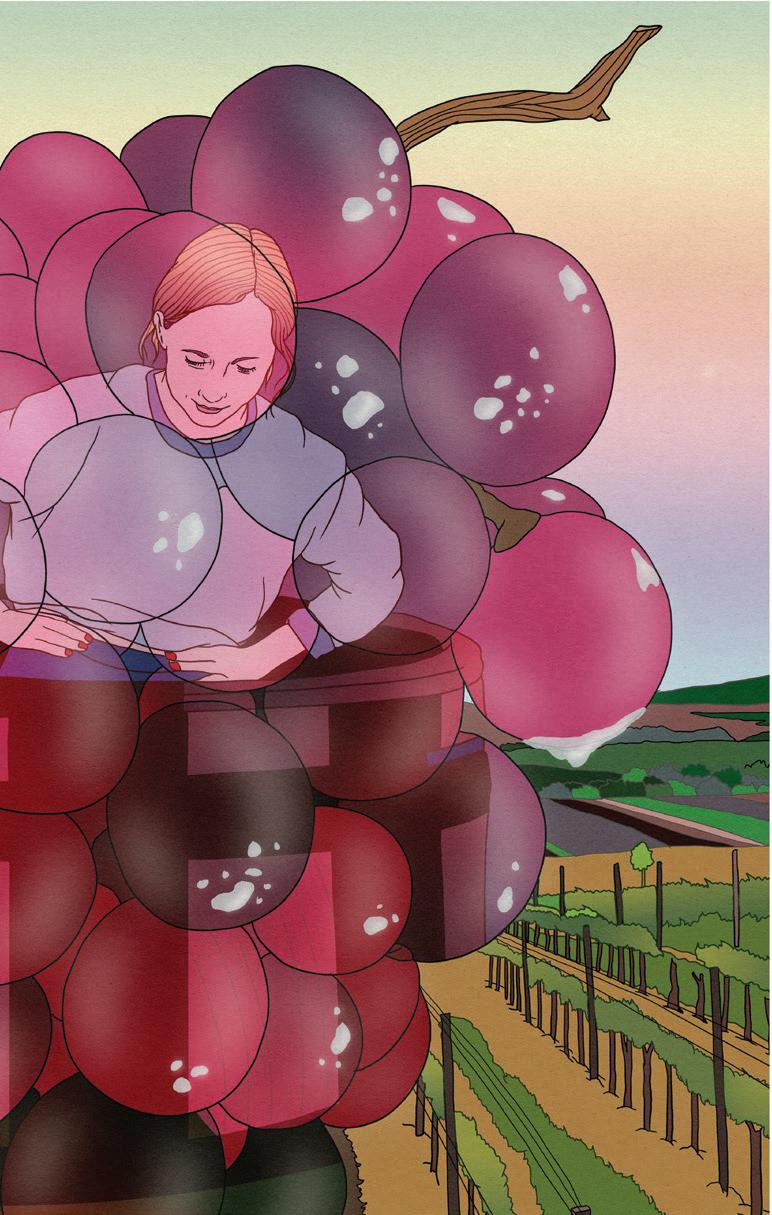
to access them. By now, you’ve spent hours on end tunneling through language-learning workbooks, devoted hard-earned money to online French seminars. This year, you want to know what vine-tethered intimacy will look like in French.
You meet a boy. Of course you do. Two days in — which is to say, 10 years in harvest-time — you devise a scheme. He, a native Frenchman, will speak to you in English; you will speak to him in French. No exceptions.
In so many ways, your language is stilted, sticks to the roof of your mouth. Everything comes out in imperfect, hackneyed drizzles — but still, the confessional sentiment remains: this abso-
lute generosity of discourse, this obscuring row of vines, this uncommon propensity towards flagrancy and openness. Even with your menial French vocabulary, you find there is a rare proclivity towards honesty. You are neither witty nor verbose. You can’t talk your way around things. When you feel something akin to sadness, there are no clever alternate nouns to reach for. Tu te sens triste. That’s all.
Also, you’re sleeping with him. So you have that, too. III. Your third harvest is not in France. It’s in Burgenland, Austria, on a sprawling biodynamic farm. The winemakers are so handsome they seem to charm peaches and sunflowers from the soil with more unfussed ease than most generations-deep farmers. Here, you harvest in the dark. The heat is so intense you’re told that the grapes will suffer, wilt, bleed if you pick them in the midday heat. Instead, each morning by 3 a.m. you’re ensconced in vines, harvesting by the shaky beam of a headlamp.
It’s cool, though not cold — layers are required. But there’s always that threat of impending heat tugging at the corners of the air. Overhead, the dark is interrupted only by a spill of stars so high-wattage they seem like hole punches, portals to somewhere else.
You’re slow to begin speaking, everyone still percolating, warming to the absolute irrationality of time. But once you find your rhythm, adjust your eyes, you fall into a certain ease of rapport. You don’t trudge your way in. There’s no prologue. It’s as if you’re picking up last night’s dinner conversation precisely where it left off. You hear these little threads and bursts of admission coming at you from all angles, like a sort of holy surround sound.
And despite the fact that they begin in the dark, all of these exchanges unfurl into light. Sometime around 6 a.m., when the warmth is palpable but not menacing, color tiptoes in — slowly, at first, then motor fast, spilling out across the vines, brushing everyone in a remarkable, liquid copper glaze. While you speak, you grow more fervent — as if, with each new light gradient, there’s something else to peel back.
You’re hearing these voices, watching these disembodied hands while the sun moves upward, technicolor orb that it is, taking its place between rows of vines as if preparing to deliver a sermon. All the while, you’re thinking to yourself: My God, gossip has never been that color before.
Words and photography
An intergenerational road trip through the Deep South conjures local and familial legends.



Abe’s Bar-B-Q, Clarksdale, Mississippi Legend has it that this is where a young Robert Johnson sold his soul to the devil in exchange for mastery of the guitar.
by John Chuldenko
When my mom was eight years old, she saw Elvis.



My grandfather drove her 90 miles north to Memphis, Tennessee, to see him perform at the 1956 Mid-South Fair. She came home smitten and carved his initials, along with her own, into the tree that grew in her front yard on South Bolivar Avenue in Cleveland, Mississippi. It’s a story Mom told often. But it’s also one that has faded, along with the others, as Alzheimer’s claims more of her memories.
There are certain places inextricably entwined with our lives, and sharing them means sharing a part of ourselves, our history. I haven’t been to Mississippi since I was a child. My memories of it are fragmented flashesof relatives and landscapes, but I wanted to bring my daughters from California to the Delta to experience a place integral to our family and to the fabric of American music and culture.
I wanted them to hear the stories embedded in the soil and meet the people who tell them. And maybe, in the process, write a few of their own.
The South is rife with eccentricity, as demonstrated twice a day at The Peabody in Memphis, where for the past 90 years a team of fie North American mallard ducks have paraded from the hotel’s rooftop, into the elevator, and along a red carpet through the lobby, finallysplashing into the central travertine fountain. This is just one reason The Peabody is a property unlike any other. Its history is embroidered in Memphis, just like the ducks are on its pillowcases. There could not be a better place to begin our journey, because, as I was raised to know with utmost certainty: the Missis-
Victoria Bend, Mississippi River The girls meet the Mississippi for the first time, brought to this particular bank by Delta Overland, which offers tours through the region.
sippi Delta begins in the lobby of The Peabody. After observing the waterfowl’s morning procession, we head south along Highway 61. The alluvial flood plain known as the Delta doesn’t arrive with a flourish Instead, like Jason Isbell singing through the speakers of my rented Chevy Malibu, it lays itself out real nice and slow. I pull over at the crossroads of Highways 61 and 49, just outside of Clarksdale, Mississippi. Legend has it that this is where a young Robert Johnson was thrown out of a juke joint, his guitar playing so horrendous it was driving away the patrons. Some months later, when Johnson returned with astonishing, immeasurable talent, those who bor e witness to his transformation were convinced that he’d sold his soul to the devil. While the exact location of Johnson’s Faustian bargain is debated, today the fabled crossroads is
The Peabody, Memphis, Tennessee
A team of ducks parades from the hotel’s rooftop into the elevator and along the lobby’s red carpet.



home to Abe’s Bar-B-Q, where pork shoulder is smoked on pecan wood, rested overnight, then grilled on a flat top to achieve sublime crispiness. While it may not be worth one’s soul, it’s some of the best barbecue I’ve ever had, for just $6.25 a sandwich.
Another 70 miles down the road, we arrive at Dockery Farms. Here, in a “frolicking house” lit by coal-oil lanterns, Charley Patton fist played for sharecroppers and the blues was born. My grandparents spent holidays with the Dockerys, and as we roll to a stop at the weathered �lling station that fronts the property, Bill Lester, executive director of the Dockery Farms Foundation, greets us like family, taking us through a private entrance into the meticulously maintained family home, showing us the pool where my mother learned to swim, and sharing stories of the farm.
Just hearing a Delta accent puts me at
ease — perhaps it’s a Pavlovian childhood response — which makes our next stop, the nearby Cotton House, hit like a sip of iced sweet tea.
As vibrant and genuine as the staff who greet us, the hotel is the centerpiece of Cleveland’s main drag, and it embodies modern Southern grace with just enough quirk. Later, we walk to Leña, the local Neapolitan pizza spot, to meet Stewart Robinson, founder of Delta Overland, who’ll be our guide through the region. We’re joined by Leña’s owners, photographer Rory Doyle, and chef Marisol Doyle. As margherita and sausage pizzas arrive, it becomes clear why the restaurant has just secured a spot on the New York Times list of best pizzas in America. But there’s another buzz around the
Red’s Lounge, Clarksdale, Mississippi
Among the region’s most storied live music joints, Red’s takes its name from its founder Red Paden, who called himself the “king of the Juke Joints.”
table — an enthusiasm for the singularity of the Delta and the creativity that’s flowed from the Mississippi for a century. “Welcome back,” Rory says, clinking my beer bottle. That night, I ask the girls what they thought of the group. My oldest, Adeline, replies. “What do you mean? It feels like we were hanging with your friends.”
To the point: In a place where everybody knows everybody, it’s important to know somebody. The land adjacent to the Mississippi River is mostly private and inaccessible, but when Robinson arrives the next morning, he reveals that he’s arranged for us to post up on a friend’s property. Rolling past soybean crops in his vintage right-hand drive Land Rover Defender, he regales the girls with tales from the Delta shared with him by local raconteurs. He turns off the main road, and soon we’re cresting the levee. “It’s like the ocean!” Charlotte, my youngest, gasps at her fist glimpse of the Mississippi.



We open the Defender’s hood to let the engine cool while Robinson unfurls a roof-mounted awning and slices a fresh, pink pineapple (the �rst I’ve ever seen). Then he lays out a quintessentially Southern picnic of pickled shrimp, pimento cheese, pasta salad, and cheese straws.
Satiated, the girls take off along a trail that leads to the Victoria Bend of the Mississippi. Shoes strewn on the bank, skipping rocks on the river’s surface, they embody an ease that belies their Los Angeles upbringing; perhaps some latent strand of DNA awakened once their toes touched this river. Here, time moves at a languid pace. They are just two kids in cutoffs and sandals playing until it’s time for dinner. Nothing in the scene ties them to this century.
You enter the original Doe’s Eat Place in Greenville through the kitchen, winding past prep stations and massive steaks
searing on the grill. “Y’all just grab a beer from the cooler,” manager Kathy Wong says as she leads us to our table. Like much of the Delta, Doe’s is a spot some might be quick to label as “unrefined. But if you look closely, tacked into the wood paneling to the right of the Miller Lite mirror and taxidermied bird, you’ll finda James Beard Award. Wong delivers plate after plate of Delta hot tamales, broiled shrimp, and two staggeringly large, perfectly cooked bone-in ribeyes drenched in drippings. It is an exquisite, carnivorous meal we’ll never forget.
“Yes!” Mom exclaims over the phone in a rare burst of recollection, when I call to tell her that Charlotte climbed the crepe myrtle trees in her old front yard, searching for Elvis’ initials. Mom doesn’t
Dockery Farms, Cleveland, Mississippi Charlotte stages a performance at the farm where my grandparents often spent holidays and where the blues was born.
remember which tree it was, nor whether it had weathered storms and subsequent owners. No, the girls didn’t fin the carvings, but they found something of equal value: their own connection with Mom’s childhood home.
As I hit repeat on Waxahatchee’s Tigers Blood, I ask the girls if they think anyone else will share an experience like this on the fist day of school. Not a chance. In one of our nation’s most impoverished areas, we found treasure: the decadence of a deep narrative. This is a land of soft vowels and razor-sharp wit. Spend enough time here and the rich culture manifests in its own time, to those enlightened enough to receive it. The girls will return to Los Angeles with their own memories, their own stories, and perhaps one day they’ll bring their own children back here, dust off my playlist, and recount the time that Dad drove them through the Delta.



Words by Alex Frank
Dwarika’s
Hotel in Kathmandu, a personal mission to save a piece of history becomes an inspiring preservation story.


The story of Dwarika’s Hotel in the Kathmandu Valley begins in the near-distant past. In 1952, a man stumbled upon ornate antique carvings native to the ancient Newari-style houses of this region in Nepal and saved them from destruction. Out for a jog, he saw construction workers ripping the
old woodwork from a building that was being torn down. They were sawing the carvings into pieces and throwing them into a fie, along with other debris. He ran over to stop them, offering money for the carvings; the construction workers couldn’t understand why he’d want to buy what they thought of as trash, but they agreed. “In these pieces, what you
see is the story and the history of the Kathmandu Valley — carvings of Shiva, of Ganesh, of Vishnu, of Buddha, that people would keep in the windows of their homes for protection,” Rene Vijay, the hotel’s current owner, recalls. “The man thought: I need to save these for future generations, for my grandchildren, who weren’t even born yet. He was


worried his descendants would not know anything about their roots. Who are we? What do we stand for? What do we believe in? He was worried that all of this was going to disappear.”
That man, Dwarika Das Shrestha, was Vijay’s grandfather. His experience that day so moved him that he made it his mission to preserve the ancient Newari architecture and Nepalese cultural history. Whenever he heard about an ancient building being demolished in the name of modernization, he would rush to purchase its carvings.


By 1964, Shrestha’s passion for conservation, along with his c ollection of carvings, inspired him to build a Nepali-style brick building featuring handmade terracotta bricks, with the reclaimed carvings installed as its architectural centerpieces, allowing guests to live with the artifacts. “That was something that was very important to my grandfather: These carvings are not only to look at — they also have to have a sense of life,” Vijay says. “This is not a museum; you live in the pieces. You have to build connections.” Shrestha also hired three of the few remaining master carvers and fie apprentices to maintain and repair the intricate carvings — and, moreover, to ensure that the culture and craft would be
passed along in perpetuity. This construction became the nucleus of Dwarika’s Hotel, which opened in 1977.
Vijay and his mother have since become custodians of the 80-room hotel and its woodworking workshop, which remains a paradigm of how cultural restoration and tourism can complement each other. “It’s very fulfillingto share this space and its stories with travelers,” Vijay confirms,“The depth that this culture has is something that is cherished not only by our family and the Nepali people
but also worldwide. Our oldest piece dates to the 13th century.”
Along with integrating the carvings into the facade, the property features traditional shrines, furniture crafted by the heritage carpenters it employs, and hand-woven textiles and embroideries featuring Nepali patterns. And the hotel’s location smack dab in the center of the bowl-shaped Kathmandu Valley in the Himalayan Mountains — a pilgrimage site for both Hindus and Buddhists for centuries and a region that’s home to seven UNESCO World Heritage Sites, including sacred temples — offers a globally relevant lesson in preservation.
“If you go to these World Heritage Sites in other countries, what do you see?” Vijay asks.
“Often, somebody tells you a historical fact, saying: This happened 500 years ago at this place, and there was this emperor who did this at this point in time. But it has no significane to today’s lifestyle, because it doesn’t connect to the local people living there anymore. That’s the difference here: You see how [the past is] still part of the daily life of a locale. You still see people doing their prayers. That’s a very important message nowadays, when people are having an identity crisis and looking for roots. Here, culture is still alive.”
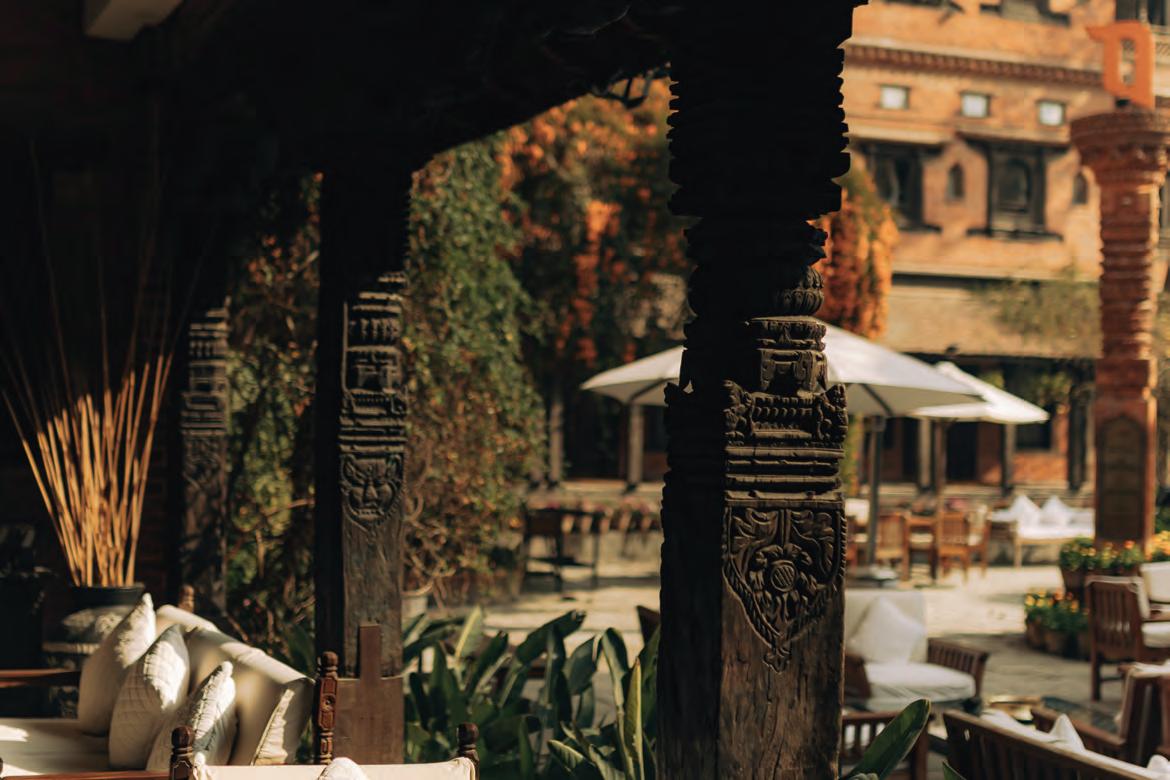


“Moroccans today call Marrakesh
‘The Joyful City,’ or simply ‘The Joyful.’
For the city is pledged to joy. The seekers of happiness and soirées head for it. Its nights are well lit, and its days are bright.”
–Yassin Adnan

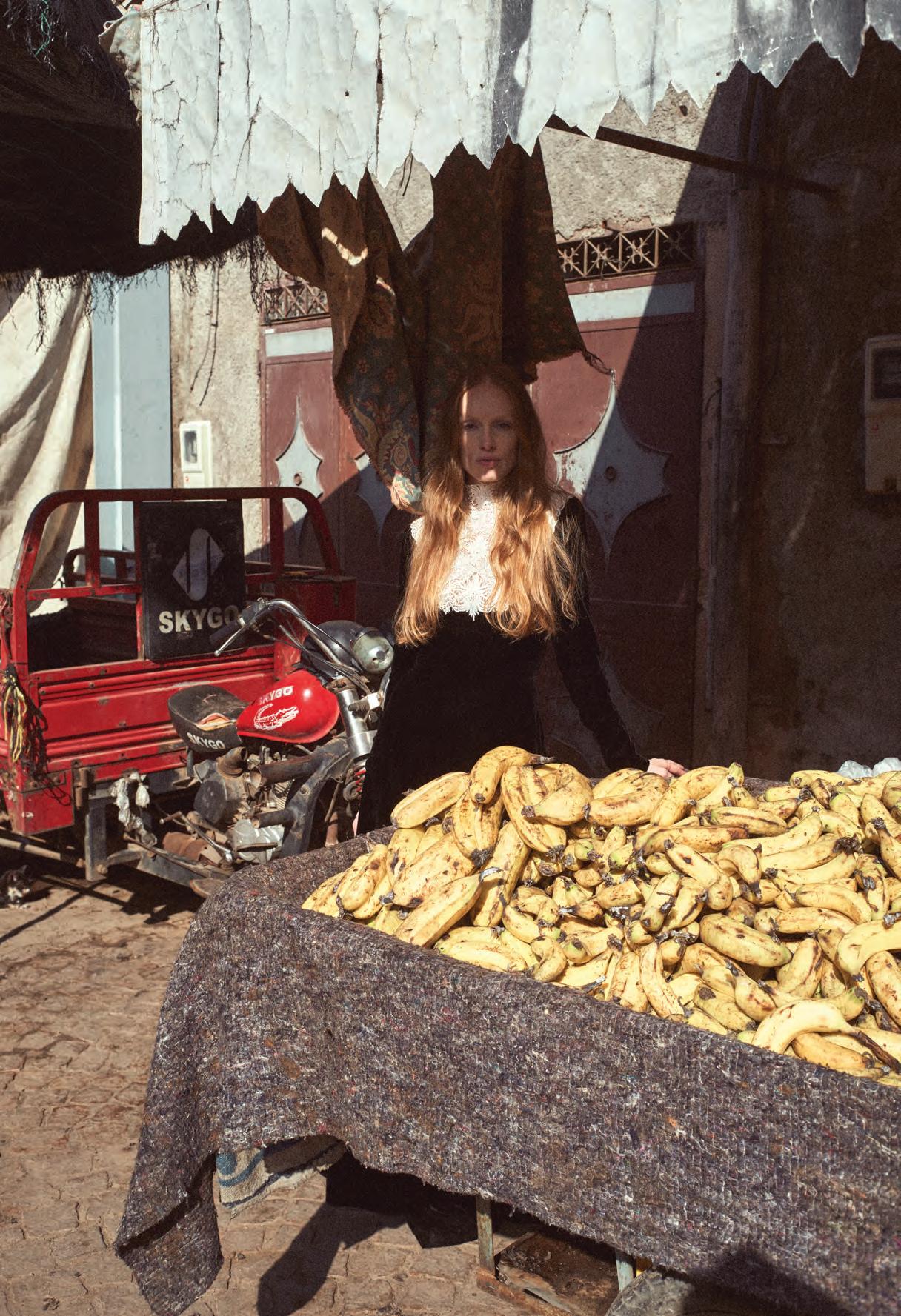
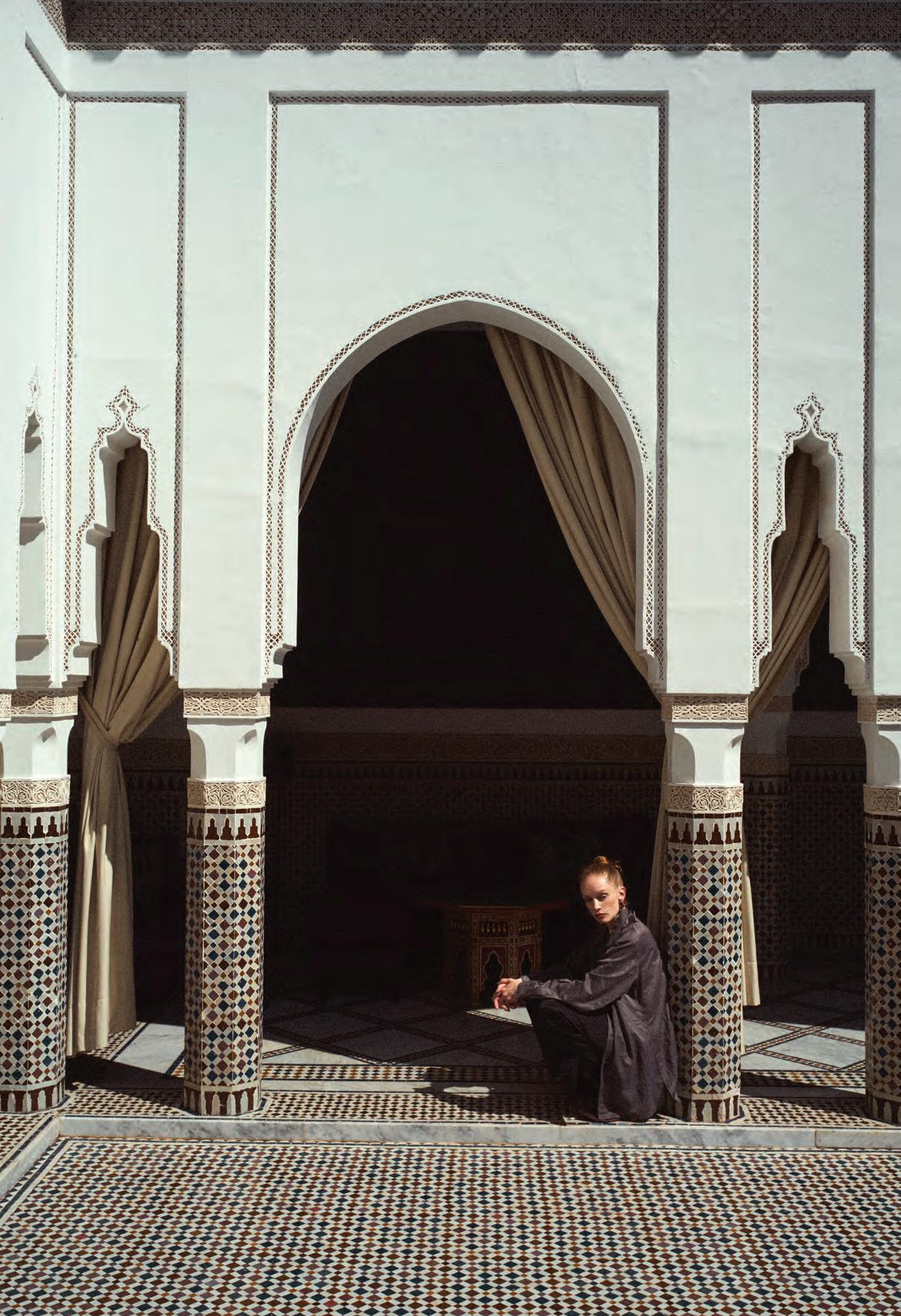

La Mamounia
Just on the other side of its 2023 centenary celebration, La Mamounia still lives up to the description given to it by Winston Churchill in 1945, who declared the hotel “the most beautiful place in the world.” Fountains populate its enchanting gardens, an Olympic-sized pool shimmers. Guest rooms remain impeccable expressions of the place and the palace’s standards, with zouac ceilings, mashrabiya windows, and medina views.
“Before
Marrakesh , everything was black. This city taught me color, and I embraced its light, its insolent mixes, and ardent inventions.”
–Yves Saint Laurent
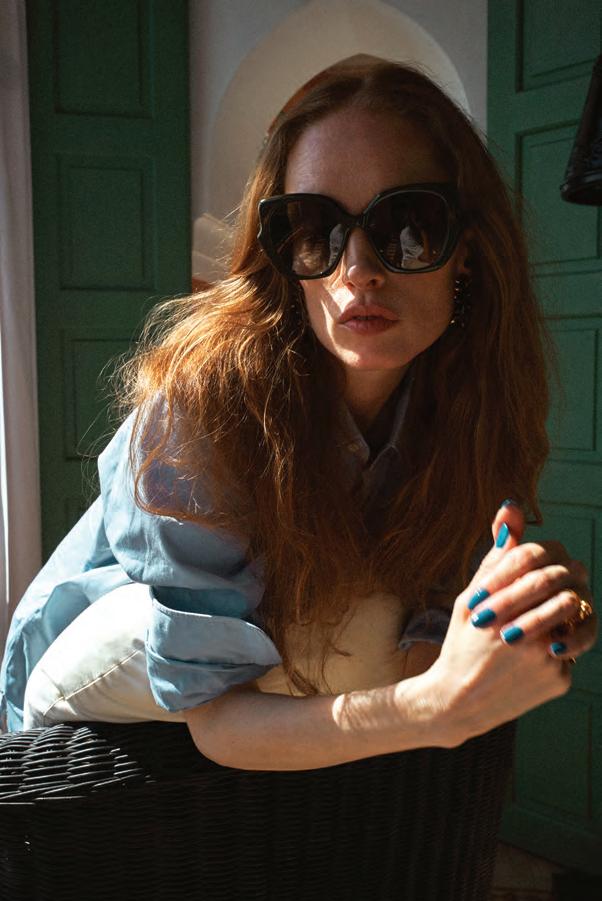

A boutique hotel in the heart of the medina, La Sultana reflects its location physically and philosophically. Its structure was refurbished using heritage Moroccan architecture and decorative arts techniques. It offers traditional spa treatments and serves an authentic Moroccan menu. Then there are the gardens, heated pool, and rooftop terrace with views of terracotta rooftops and palms framed by the Atlas Mountains.
“ Marrakesh taught me the colors of life can be changed with a single touch.”
–Leila Slimani


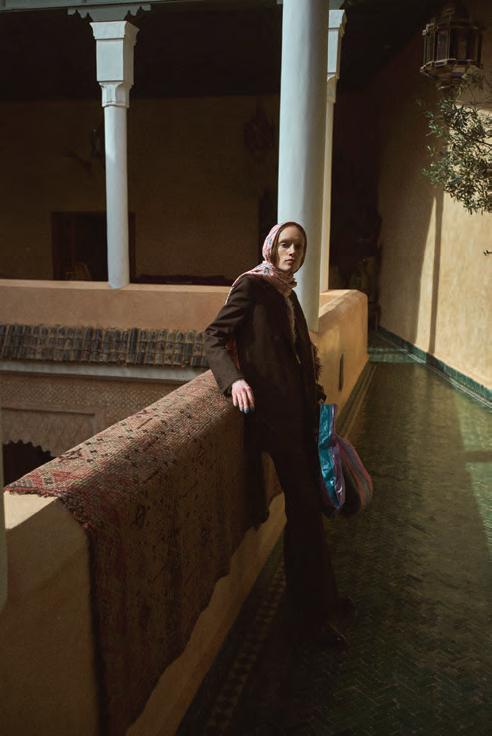


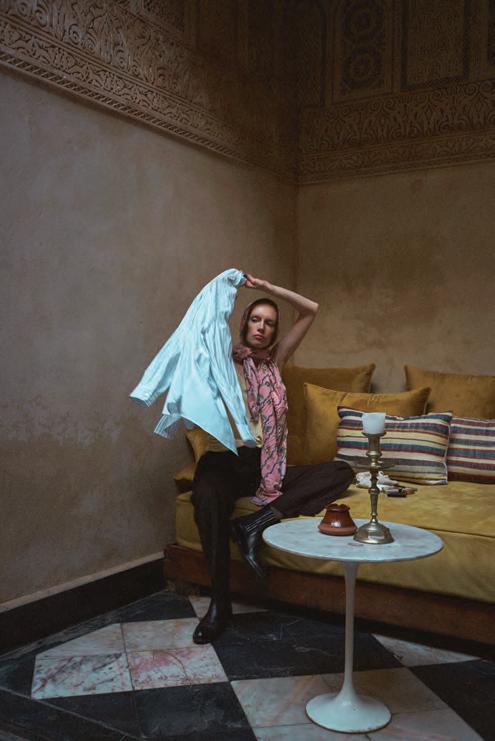
El Fenn Hotel
Nestled on the edge of the medina, El Fenn is a world unto itself. Every guest room differs, with walls painted turquoise or fuchsia or saffron and floors lined with tile or hand-stitched camel leather. Traditional Moroccan design mixes with European modernity, vine-lined inner courtyards offer respite, and the rooftop bar pairs expansive vistas with an electric ambiance.




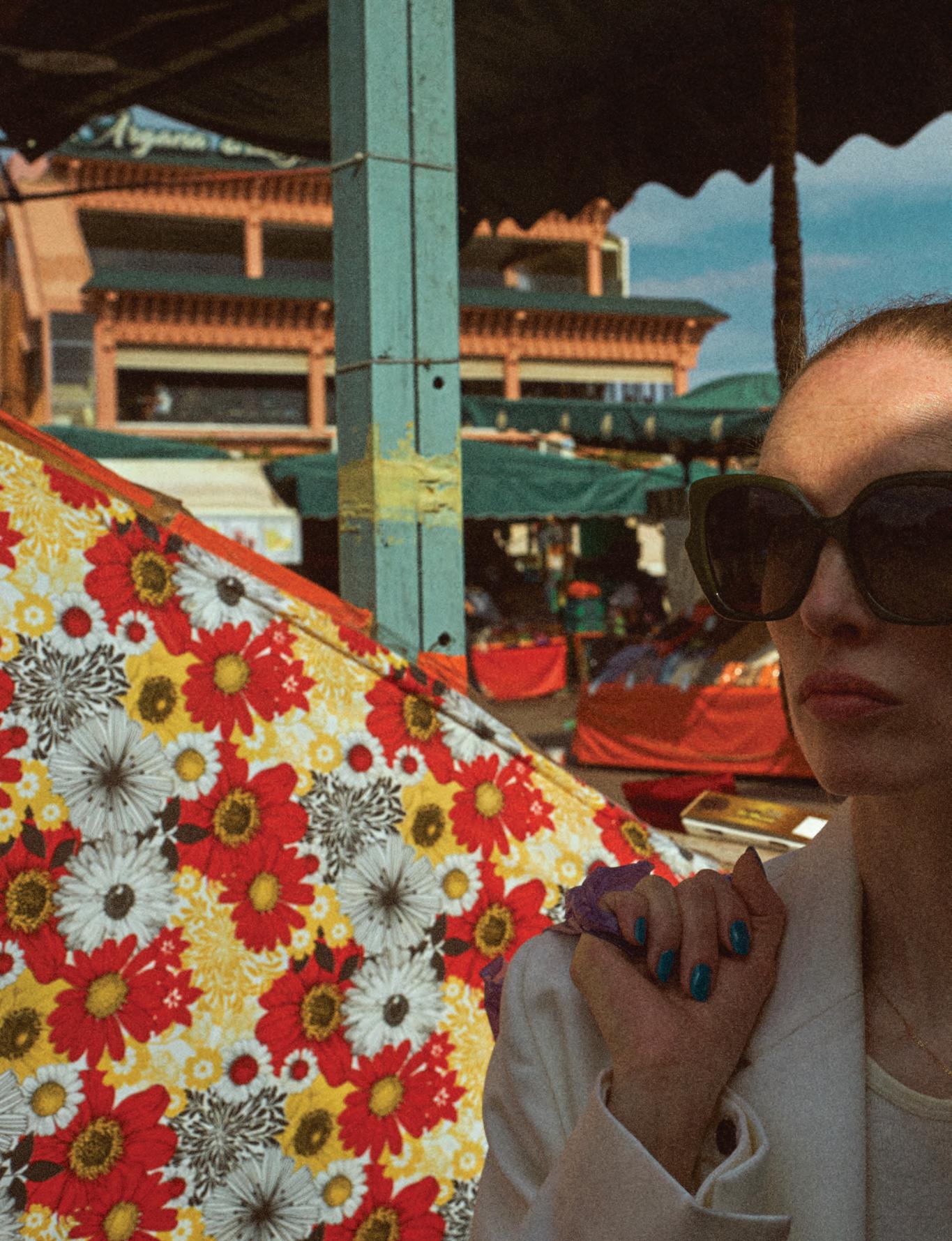

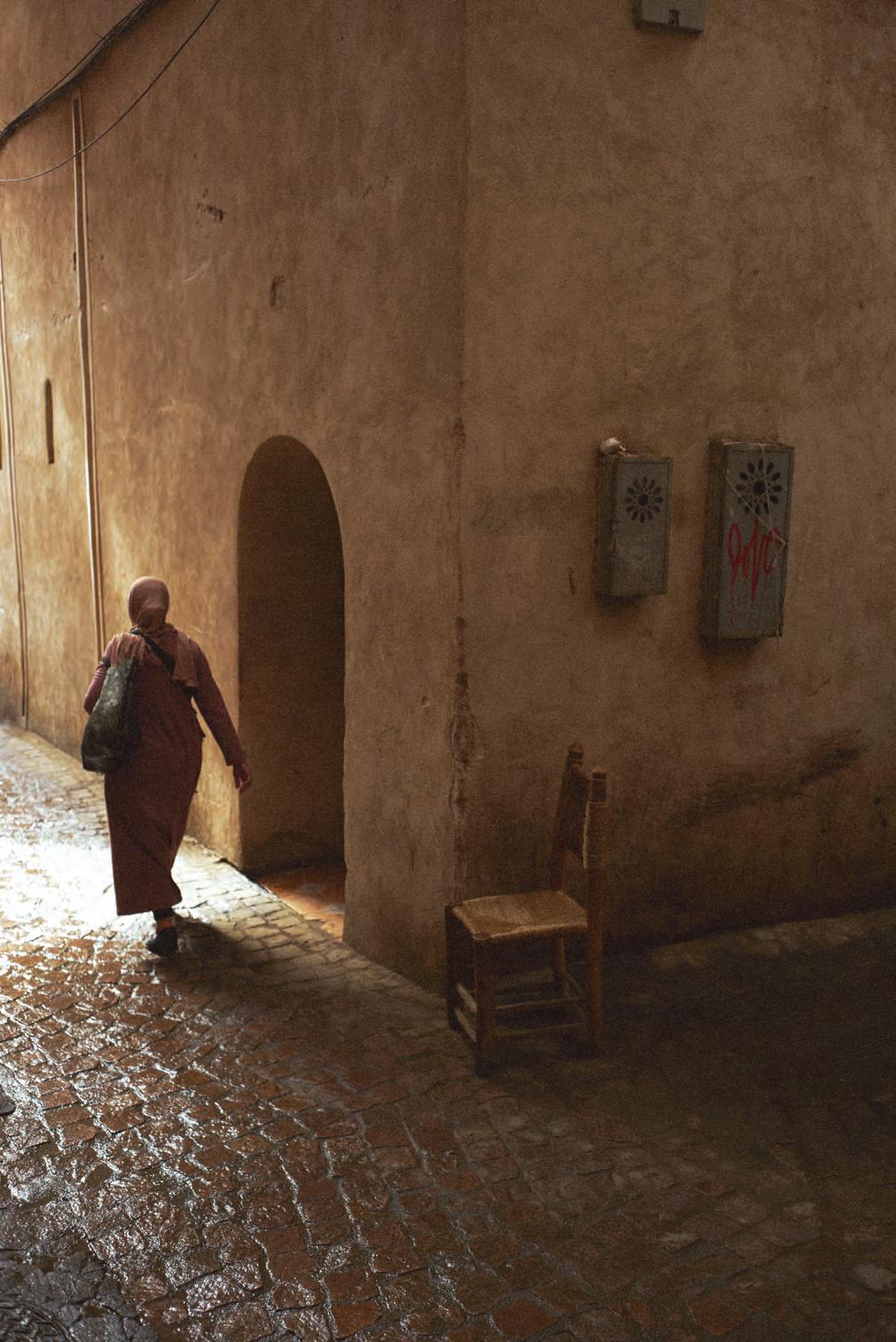

“ Marrakesh is simply the nicest place on Earth to spend an afternoon.”
–Winston Churchill







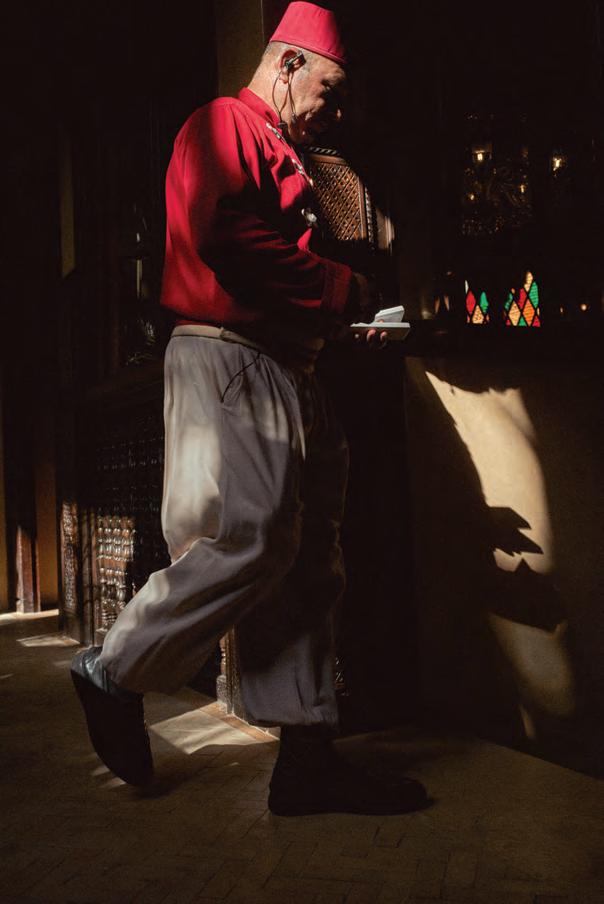
“To visit Marrakesh is to step through a portal to an altogether different world.”
– Tahir Shah







Khadija Radad, weaver
Passionate about passing her craft on to younger generations, Radad works alongside Lalla Rachida at Beni Rugs to provide local weavers with sustainable, stable employment as well as a space for unfettered creativity.
+ 212 077 178 2897


Ahmed Amine Dhioui, potter
Despite an education in economics, Dhioui was drawn to the craft of pottery, which he learned from his father. At 21 years old, he began creating unique eco-friendly works, then started teaching the craft, eventually founding Salsala pottery experience, with plans to open the workshop to international artists, designers, and architects. @aminepotter_
I was born in Fes, a city steeped in history. I began capturing the essence of its old medina through street photography.
Then, in 2018, I moved to Marrakesh and it became my creative playground. As a photographer, I’m drawn to its vibrant colors and striking contrasts, from intimate, humble homes to luxurious palaces and hidden riads.

Marrakesh is an international city in transition, still deeply rooted in its traditions, with a constant buzz. Its artisans embody the city’s history and its future.They work around the bustling markets and in neighborhoods dedicated to specific crafts: In the medina, you can find areas focused on leatherwork, woodcraft, pottery, metalwork, and more, with each corner
Words and photography by Ilyass
Nazih
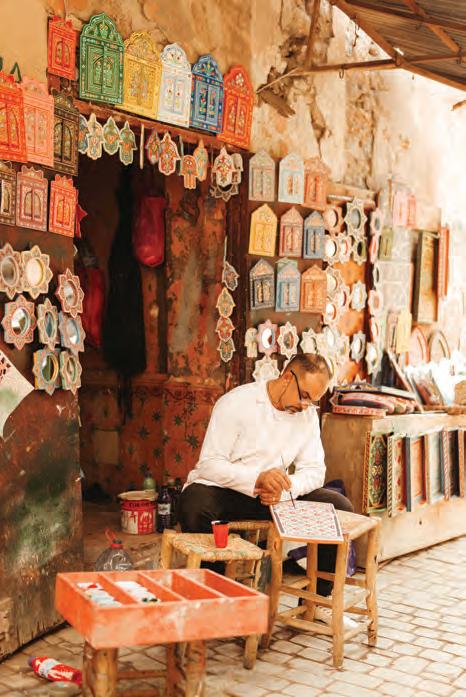
Toufik Doulaki, zwaq artist
A carpenter by trade, Doulaki learned the art of zwaq, traditional Moroccan hand painting, from his older brothers. In addition to creating the works he displays in the market, he has worked on riads, mosques, and palaces — including the Hassan II Mosque in Casablanca.
@doulakitoufi
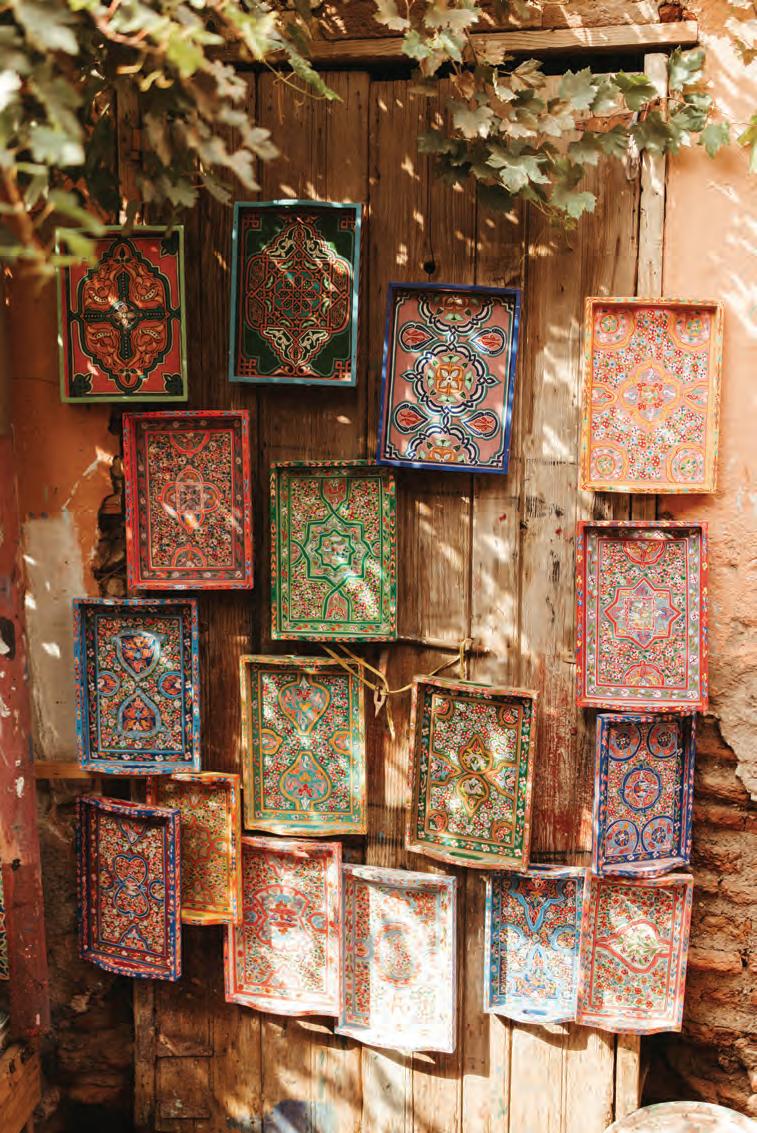


Mustapha Naouch, wood carver
After dropping out of primary school, Naouch learned his trade from other maalem (masters) over 40 years ago. Throughout his career, he’s worked on carvings for palaces, riads, and private clients.
+212 069 434 2060
hosting specialists dedicated to their unique craft. Many began in the ’70s — or even earlier — learning their trade as children in the medina’s historic alleys.
Decades later they’re still here, each a living link to Marrakesh’s cultural past.
Their artistry is not just a livelihood; it’s a commitment to preserving the city’s heritage. Over the past five years, Marrakesh has transformed, with

Ismael Zegri, leather worker
Working with leather since the age of 16, Zegri is a selftaught craftsman whose passion is evidenced in his pioneering designs and store, which is over 40 years old.
+212 067 716 1125



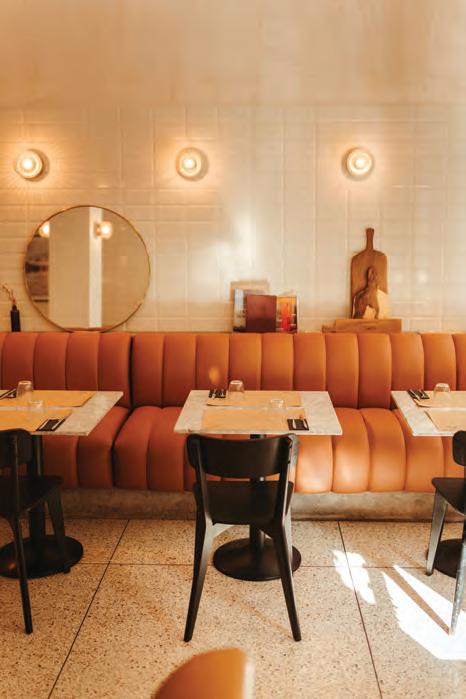
Aniss Meski, chef
At 15 years old, Meski moved from Casablanca to France for culinary school, where he trained for four years before transferring to Montreal, returning to Morocco 10 years later. In Marrakesh, he saw the food scene developing, inspiring him to open his �rst restaurant, Mouton Noir, in 2019, with another new fine-dinin restaurant now in the works. @mouton.noir.marrakech renovations and growth bringing a fresh look to many areas. At times, I think this polish takes away a bit of the city’s rustic charm. But it’s also a boost for everyone — the artisans, guesthouses, and broader community — it means more opportunities for the city’s craftspeople and keeps Marrakesh vibrant and thriving.
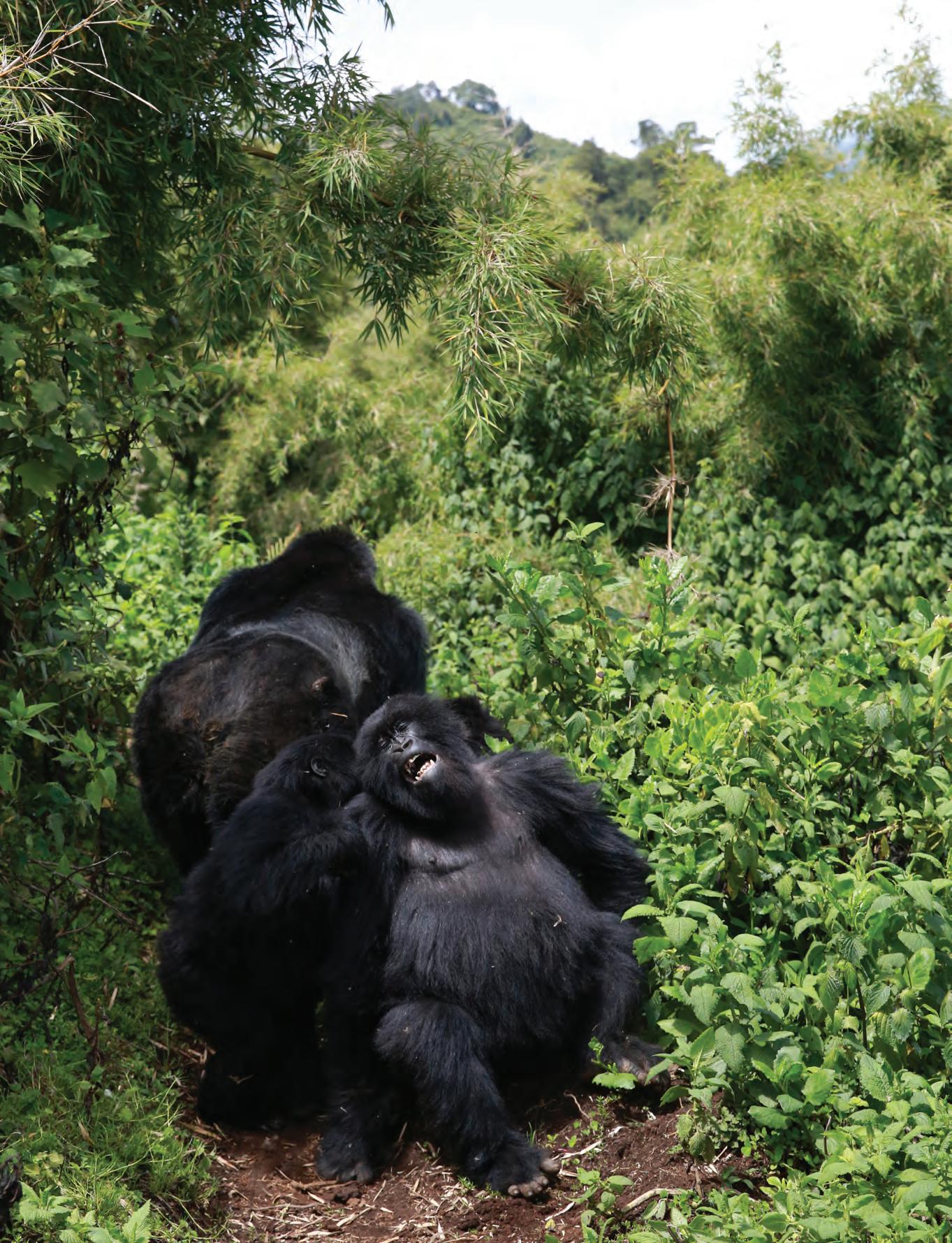

Skye Parrott takes on the challenge of trying to understand what we talk about when we talk about sustainable travel.
I lived for two years in a small town in Mexico It was a beautiful place, a half-moon bay cut from the Sierra Madre Occidental mountains, where the jungle runs right up to the beach. A former fishingvillage, it has a clean, consistent, right-hand surf break, which is what made the town boom — or doomed it, depending on your point of view. First the surfers arrived, then the backpackers, and, ultimately, all kinds of tourists. When we moved there, the population was about 2,000. It’s now over 3,000 and swells to more than twice that in the high season.
One of the friends I made, a woman my age who was born there, told me how, within our lifetime, the area had transformed. There were numerous streets that hadn’t existed when she was a child, now paved and lined with restaurants, stores, and bars. The less positive consequences of the rapid growth were largely invisible to tourists, but for anyone living there they were impossible to ignore. The water would run out; the sewage treatment plant couldn’t handle the population during the high season so its runoff polluted the ocean; the overtaxed power grid, already
wonky, would go out during storms and not come back for a few days; and of course there were issues with trash, especially plastic, which washed down the river into the sea and, ultimately, onto the beaches.
In the two years I lived there, I watched from my offie window as half a block of buildings was ripped down and replaced with a hulking hotel, and I saw the verdant jungle around my house clear-cut, with buildings popping up seemingly overnight, anchored into the soft dirt cliffs with questionable foundations. The changes happened so quickly that the town I had fist visited 10 years earlier (before I moved there, thus further contributing to its problems) is different in many ways from the one that’s there now.
With the negative impacts so blatant, it would be easy to write off tourism as problematic there. But.
When the pandemic hit, a local vigilante group made up of surfers, waiters, and other young guys from the community blocked the town’s two entrances. Their checkpoints kept tourists out, and, with them, Covid. The streets were silent, a ghost town. The beaches were empty, and, at night, as my girls ran along the shore, the waves skirting their ankles, the pelicans overhead dive-bombing the surf to fish, we were the only people in sight. Friends who had lived there for years sighed as they told me: This is what it used to be like.
survival. It had produced a jaguar conservancy, which had placed trail cameras throughout the jungle to monitor the endangered native cats. It had attracted a Swiss woman who for years had run weekly canine spay-and-neuter clinics, reducing the town’s feral dog population, resulting in safer streets, especially on the edges of town, where locals lived. It had produced an international school where half of the students were from the local community, attending on scholarship and benefitingfrom a bilingual education that gave them a crucial skill (English) to participate in the area’s primary industry.
The question of whether tourism had been good or bad for the town was not black and white. It was so much more complicated and nuanced. Like one of those drawings that turns from a face to a vase, it all depended on your perspective.
“As I have begun to understand what a twisty knot sustainability is, I have come to believe this knot is one of the most interesting things about the travel industry.”
But the town was built on tourism. It was a single, cash economy. With no visitors there was no work, and that was an impossible equation for many of our neighbors. One night, just a few weeks into the lockdown, we ran into one of my husband’s friends in the street, a local who made his living renting golf carts to tourists. As we stood six feet apart, he told us he had fainted the day before. When we asked if he had eaten, he shrugged, discomforted, his eyes cutting towards his young son sitting in the cart next to him. The beaches may have been clean, the pelicans thriving, but without any tourists our friend had had to choose between feeding himself or his child.
Tourism was the reason our friend was able to live here. Those hotels, restaurants, and stores had made it financiallyviable for him — a working-class Mexican who spoke beautiful English — to build a life near the place he came from. There was no other industry, so without tourism he would have had to move elsewhere, to a place where he could support his family. Tourism, too, had brought a turtle rescue to the area, whose volunteers walked the beaches identifying new nests, carefully digging up their eggs, keeping them safe until they could hatch, and releasing the baby turtles at a time that gave them the best chance of
Several months after that exchange with my husband’s friend, I returned to New York. Not long afterwards, I was hired to lead the relaunch of Departures , a luxury travel magazine. It was my entrée into the travel industry, where I was about to get intimately acquainted with one of its favorite buzzwords: sustainability.
The Oxford English Dictionary definessustainability as “avoidance of the depletion of natural resources in order to maintain an ecological balance,” but I prefer the United Nations Brundtland Commission’s definitionof “meeting the needs of the present without compromising the ability of future generations to meet their own needs.” However you defineit, a dictionary definitio of sustainability belies the word’s massive import today. Is there anything, any industry that does not want to be seen as sustainable? The word is slapped onto clothing, sofas, shampoo, cars, breakfast cereals, wine, sharing apps. But I’m not sure there is anywhere I have seen it pop up quite as regularly as in the travel industry.
Sustainability is a pillar of just about every travel company. From the tiniest family-owned properties to mega hotel groups, from single destination tour operators to cruise ships and private jets, each has a sustainability policy. However, it wasn’t until I gained my footing in the industry that I began to identify just how diversely this word was being used.
A big part of the travel industry is conferences, where editors and travel agents go to discover and meet operators. One can walk through these convention centers, where every major tourism brand in the world is represented, and ask about the vendors’ approach to sustainability. Each company will have a prepared “sustainability” response (as they should), but their variety is remarkable. You will hear stories, delivered in tones ranging from
bored robot to evangelical, about everything from eliminating plastic drinking straws to fully-fleded NGOs that have rewilded and preserved millions of hectares of native landscape.
In the industry, this is called the “sustainability journey.” Where a company is on that journey, I have been told by experts, is less important than getting them to embark on it. It’s a wholesome idea, put forth by true believers, and I like the positivity that undergirds it: It is built on a belief in the power of collective action. However, as an editor, I am inherently a bit skeptical. It’s my job to be, to try to translate all that noise into actionable information for readers, as they consider this loaded word and concept and try to make informed choices.
Truthfully, there is no simple answer that allows you to say: This is what we mean when we
Vince Shacks, Group Impact Manager, Wilderness Safari
Wilderness Safari is a 40-year-old African conservation and hospitality company with a mission to preserve wilderness and wildlife through high-end tourism. I have heard it referred to within the industry as essentially a conservation company that generates funding for those efforts through luxury travel, although, Shacks assured me, it is also very much a business, and a successful one. Wilderness Safaris is also the company I reference above that has preserved millions of hectares of habitat through its NGO.
There are some key questions a traveler can ask. In researching the area you’re going to, try to get an idea of what the major problems are in that country or region, then simply ask yourself: Is the operator you’re traveling with trying to do something for that problem?
The second question is: Is it clear what they’re doing? Are they showing you evidence of what they’re trying to do for that problem? It’s a very simple metric to say: Look, I understand that in this part of this country, there is a big issue with fresh water. I would like to know that this operator I’m traveling with is doing something to deal with this issue of
say “sustainability.” Sustainability can be used to talk about how water is managed, or how much trash is made and how it is handled, or how electricity is generated. It can refer to food waste, preservation of wildlife habitat, or creating jobs for locals that allow them to live in the places they come from. It can speak to the development of innovative fuels that release fewer emissions or to hiring practices that prioritize locals. It can mean efforts to attract tourists to a place so local culture is preserved — or to keep them away so local culture is preserved. It is an exceptionally complicated topic, not least because so many of these priorities, all admirable, are often in direct competition.

fresh water provision, or whatever the case may be.
If you want to dig a bit deeper, there are three things you can check.
The first thing is whether the top level of leadership in a business is driving an impact agenda. Is there someone sitting on the executive committee who has a portfolio that involves sustainability or impact so it is brought up continuously at board level? The second thing is: Have you got a plan for how you implement this strategy? Can I see the plan? And the third thing is: Are you reporting your results?
If you have those things, you’re dealing with an operator that is worth supporting.
Over the past four years, as I have begun to understand what a twisty knot sustainability is, I have also come to believe this knot is one of the most interesting things about the travel industry. It is complicated, virtually unsolvable (my favorite kind of puzzle to mull over), and creates enormous possibilities. Travel operators have an inextricable impetus and opportunity to preserve land, habitats, resources, communities, and culture because their businesses rely on these things. They are the product. And travelers have the ability to participate in and drive positive impact by making thoughtful choices about where and how they travel. In today’s crazy world, it is the rare story with endless feel-good potential. Last year, I had the opportunity to visit Rwanda. Let me fist say, if you are interested in traveling in Africa — and you really should be — and Rwanda isn’t on your list, it really should be. I’m not sure when I have visited anywhere that has so entirely surpassed and upended my expectations.
I was a teenager in 1994 when the country was ravaged by civil war and genocide, which, I’m sad to say, was the event I still associated with Rwanda. In the 30 years since the tragedy, the country has made an impressive recovery. Conservation has been an essential pillar of that evolution, with a deliberate focus on developing a sustainable travel and tourism industry. Plastic bags have been banned in the country for nearly 20 years. Its roads and hillsides are spotless, which, along with keeping plastic from leaching into the soil and waterways, is beautiful — and eye-opening: It makes you realize how much plastic we have become accustomed to seeing. Travel and tourism now represent 10% of the country’s GDP, revenue that has been reinvested in national development programs including road works, free primary education, and universal healthcare, creating tangible value for locals linked to tourism and conservation.
I was in Rwanda to trek to visit the mountain gorillas, which live in only one place in the world, the cloudy, jungle-covered Virunga
Mountains, which straddle the borders of Rwanda, Uganda, and the Democratic Republic of Congo. These gorillas have been a key aspect of Rwanda’s sustainable tourism development and, like the country, they are a success story.
Rwanda is the most densely populated country in Africa. Parts of it, near the gorilla habitat, average 1,000 people per square kilometer (for comparison, the city of London averages 5,000). The apes live in a network of protected national parks, but the parks are small and bound by this densely inhabited farmland on which subsistence farmers eke out a living averaging less than $2 a day. When competition for limited resources is so fiece, and the gorillas’ ecosystem is so small, they are vulnerable to habitat encroachment and poaching. It’s a delicate balance to try to bring even more people into an area like this. But without tourism, the animals’ chances of survival are unlikely, because they don’t have an economic value. Still, if you don’t develop that tourism model sensitively, they won’t survive either.
So gorilla tourism has been built with a focus on high-end ecotourism rather than volume. Rwanda issues only 100 permits a day, currently priced at $1,500 for foreign visitors (the price for Rwandans and other East African nationals is $200, still incredibly expensive by local standards). Portions of this revenue are shared directly with local communities, and job opportunities are created for those who live near the parks. This considered combination has proven highly successful. When Dian Fossey fist began surveying the gorillas in the Virungas in 1967, it was estimated that there were less than 250 of these great apes left in the world. In 2019, that population passed 1,000.
live in the local communities is not a secondary goal to conservation but wholly interwoven with the objective of protecting the habitat and wildlife. If the people who live in the surrounding areas are able to earn a sustained living from tourism, they can become stewards of the environment, protecting rather than degrading it. Volcanoes Safari now operates fie lodges in Uganda and Rwanda, with a focus on great apes tourism.
When I spoke to Moman for this piece, I apologetically asked what I knew was a pretty cynical American question: Is this conservation work an ethical imperative, a business imperative, or both? Laughing, he replied, “For me, it’s an imperative because I have been connected to this area through my family since 1905. It’s this long-term connection to the area that is inspirational. I was privileged enough to see it as a child, and because I saw it 50 years ago, I would like to do my best to ensure that in 50 years, it’s still there and thriving. I don’t think I will be on the planet in 50 years, but I hope that these areas and the value for the local people will continue … I think that each of us who are purveyors of tourism have to ask the question: What are we doing to protect species, protect land, protect habitats, and support local people?”

I visited the area with Volcanoes Safari, the region’s oldest operator. Praveen Moman, its founder, was born in Uganda to an Indian family that was later exiled in the post-colonial 1970s. In 1997, Moman returned to build a company he hoped would pioneer tourism in the area and support conservation. His philosophy has been that providing opportunities for the people who
Liesel van Zyl, Head of Impact, Go2Africa I don’t think guests need to do all the research themselves. It’s a lot, and it’s quite niche. But equip yourself with some key questions. One of the questions I find to be really helpful is: How does my stay benefit the
local environment and communities? You may know nothing about visiting Mexico, or New York, or Africa, but once you’ve asked a few properties or a few travel companies that question, you’ll very easily then be able to make a considered choice.
The reality is, it’s both. It is an ethical imperative for humans to do what we can to mitigate, in whatever ways we can, our impact on the world. But it is a business imperative to protect your company’s assets, which, in the case of travel, are the environment and communities in which you operate. I heard this again and again as I spoke to industry leaders about their company’s sustainability efforts, and belief in what a company is doing comes from the top down. Leaders who believe in creating positive impact through their companies create companies that do incredible work to create positive impact.
I also spoke with Leo Ghitis, the founder of Nayara Resorts, a collection of six luxury resorts in Central and South America. Ghitis, whose background is in real estate, founded the company a decade ago. A native of Columbia who had spent most of his adult life in Miami, he fist visited Costa Rica as a traveler and was moved by its conservation rehabilitation story. “In 1940,” he told me, “75% of Costa Rica was a primary rainforest. Forty years later, only 25% of those forests remained. That’s the fastest deforestation ever, by any country. When the people in Costa Rica realized what was happening, they came together. And they went from being one of the worst deforestation stories in the world to becoming, probably, the most successful reforestation project of any country in the world. The numbers change, but last I heard: 60 to 70% of all land in Costa Rica is protected national parks. I decided that I wanted to be part of this incredible success story.”
In the years since, his company has worked extensively not just to preserve land, but also to be part of the great rewilding. His Nayara Springs hotel is now part of Relais & Châteaux — a global not-for-profithotel and restaurant association with its own documented, annually reported commitment to sustainability — and Ghitis serves on its sustainability committee. Nayara Tented Camp in Costa Rica sits atop a mountain from which the jungle had been clear-cut. After several years, the jungle has been reseeded, and while it’s not mature, it is on its way. The wildlife, from monkeys to butterfliesto birds, has returned — faster, Ghitis says, than he could have imagined.
Of course it’s amazing to have founders and industry leaders who care about the ethics of the businesses they operate. But not all leaders share that motivation and not all businesses make environmental impact a priority. One of the ways to make such leaders care is to make it financiallyviable to do so — or financiallyunviable not to. This is where travelers can have a positive impact: through the choices they make.
As I researched this piece and spoke with a number of industry leaders about sustainability, I began to believe that the word, and maybe the idea, has become a bit dated. “I came to the conclusion a number of years ago,” Ghitis told me, “that sustainability is not enough. We need to move on to a model of regenerative travel. Sustainability deals mostly with making sure that we do not do any damage to the environment. I believe very deeply that keeping things on the status quo is not enough. We need to restore nature to its previous glory, not just leave it where it is, but make it better for future generations.”
can’t answer an assessment is likely going to have a hard time codifying their sustainability efforts. But, van Zyl also clarifies that doesn’t mean large operators are necessarily doing a better job. Once they do respond, smaller operators can often identify numerous existing efforts, from funding schools to supporting community projects. They just don’t have the same resources to tell those stories.
With a subject as big and nuanced as sustainability, we can’t hope for tidy conclusions. But I did ask the experts I spoke with if they had any advice for the average traveler who cares enough to think about how their actions impact the places they go to and the people who live there. While we may not findall the answers, we can ask the right questions, the ones that will inform us as we navigate our own sustainability journeys. The important thing is to start.

Wes Espinosa, Executive Director, The Center for Responsible Travel (CREST)
considering contracting a guide independently. I know that’s some work, but having a local guide changes everything. Even if you don’t use them for your whole trip, if you can get some input from them for a day or two it can totally change the structure of your trip. That’s where travelers really have to have to think a little outside of the box.
I heard a similar sentiment from Liesel van Zyl, the Head of Impact at Go2Africa. “Sustainable travel, for me,” she said, “is about offering customers the choice to have a travel experience that not only ensures responsible use of local resources with low environmental impact but also — and this is the exciting part — starts to use regenerative practices and actually has a positive impact on the surrounding communities and environment.”
Go2Africa is a 25-year-old tour operator that creates custom safari itineraries in partnership with over 1,000 independent operators across the entire continent. Part of van Zyl’s remit is to evaluate sustainability practices across those partners, which, as one can imagine, vary greatly. Through her research she has noted disparities in resources can allow a large operator with multiple properties and a large staff to findtime to think through and respond to her assessment questionnaires in ways small operators sometimes can’t. A company so small that they
CREST is a globally recognized nonprofit dedicated to transforming the way the world travels. Traveler education is very important — and ensuring that travelers understand that they do have to do research, that it’s okay to go to a community that isn’t well marketed, and that it’s okay to stay in a different hotel, not just a Condé Nast “best hotel.” One thing that I always recommend is to find a local guide. Sometimes that means not just going through a hotel or operator — which is also fine — but also looking up the local guide association of a place, or even
I’m not a proponent of saying “no” to going somewhere. It’s not necessarily equitable to take away money from anybody; there are so many places suffering from over-tourism, you can’t avoid it. Over-tourism is one of the threat areas that we work in and it’s such a complicated phenomenon. The challenge with overtourism is that it’s often not addressed until it’s a thing and then going backwards is extremely complicated. So I like to say: Don’t necessarily avoid those places, but also pair it with a trip for a few nights to another community. Maybe if you’re going to visit Barcelona, look at visiting during a lower season or look at other places you can go near there. The individual traveler can do what they can to go to a place not affected by over-tourism and certainly look out for authentic experiences in smaller communities.
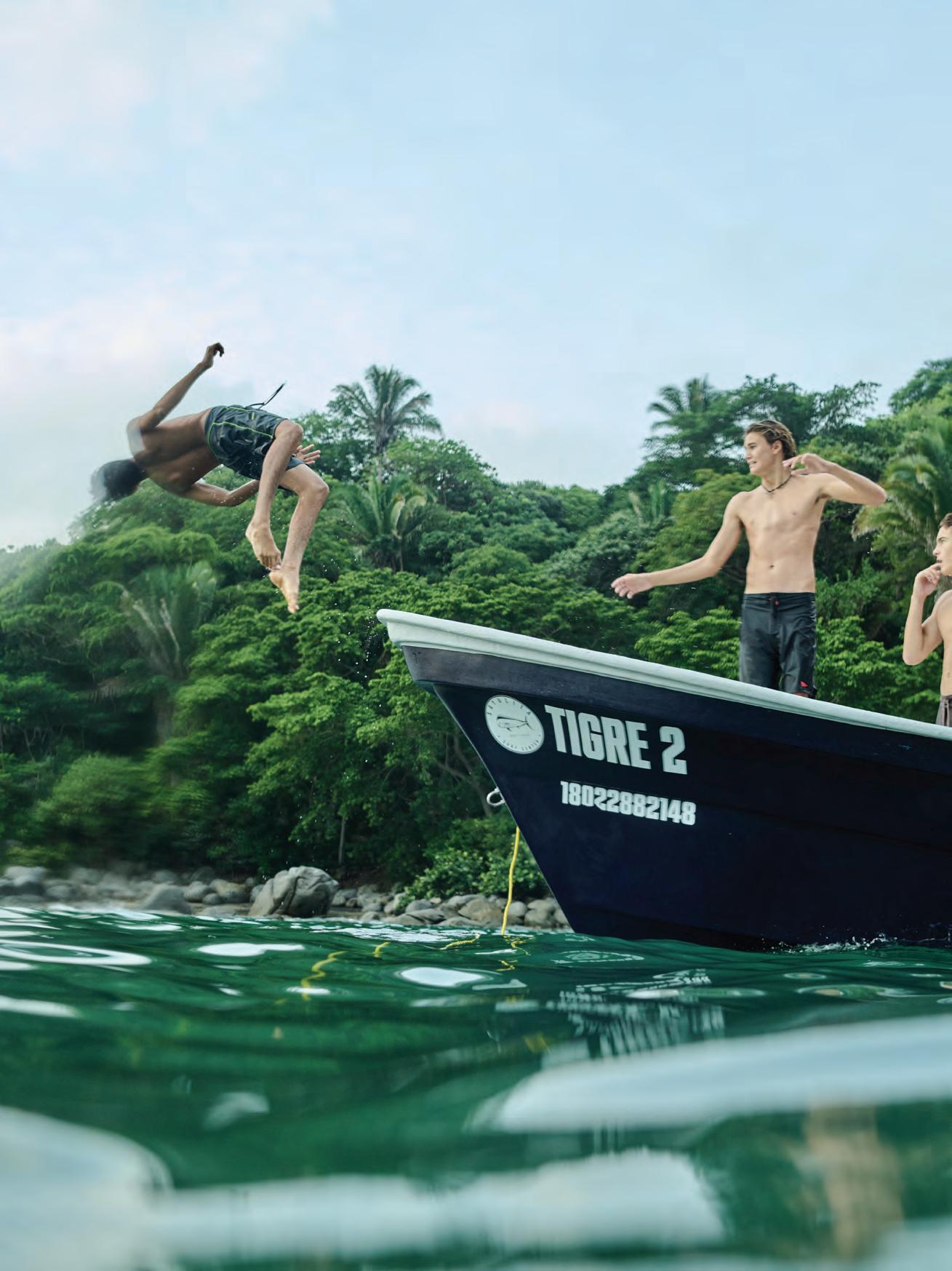
Reflections from Sayulita, Mexico: as it was, how it is, and the people who make the place.
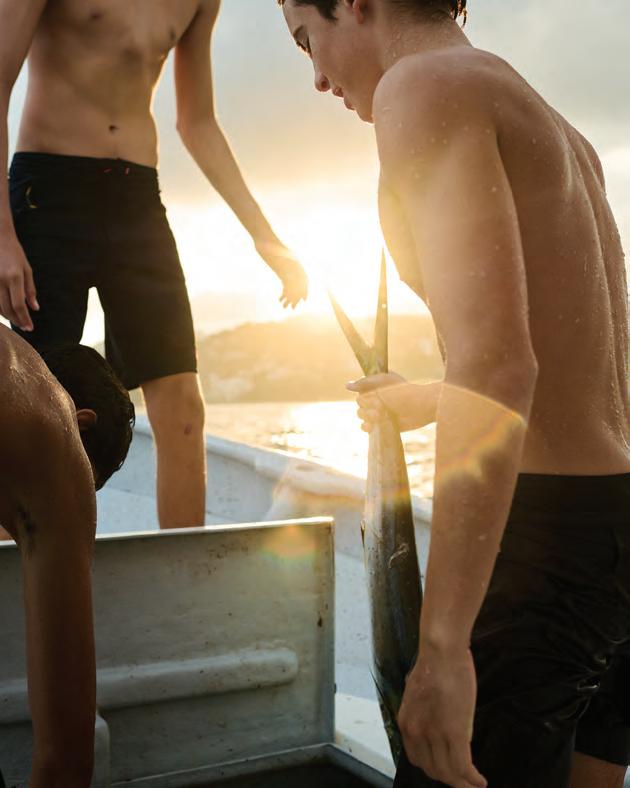
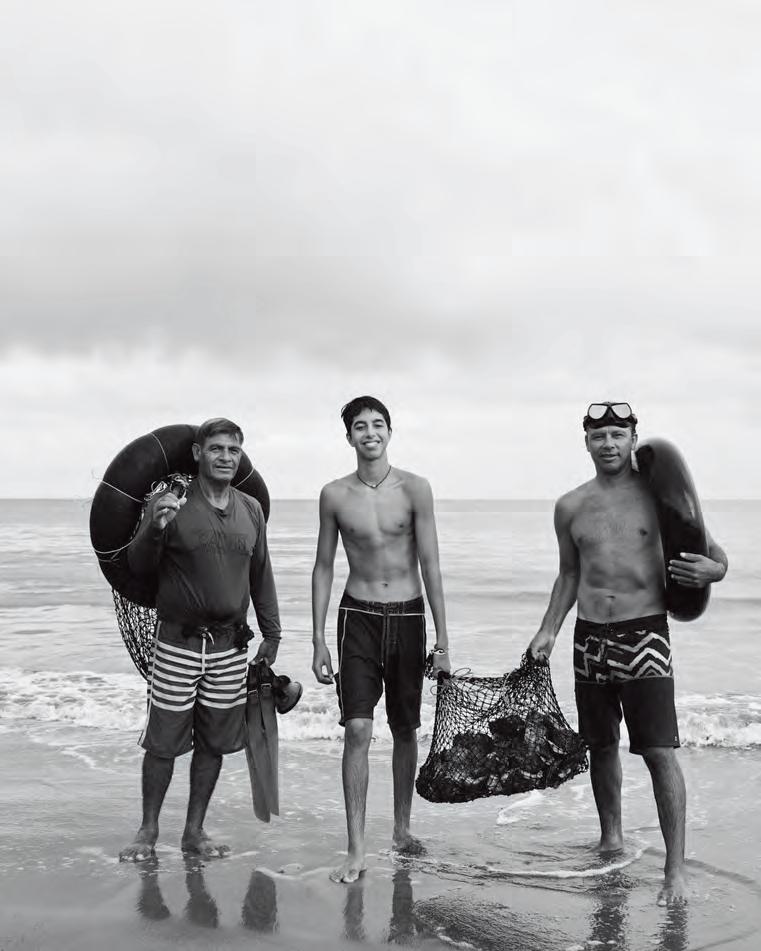
I came to Sayulita for the first time by chance. It was barely planned — yet, if you believe in these things, totally providential: something that could have very easily not happened but which changed everything.
In the long, gray slog of New York winter, I saw the town tagged in a post by a photographer I barely knew. Her pictures were beautiful, evocative enough that within hours I had Googled the place, found that the miles I had sitting in my airline account would get my family there, and impulsively planned a trip.
Equine Therapy

Manuel offers visitors beach and jungle strolls on the best-trained horses in town. +52 322 132 7683
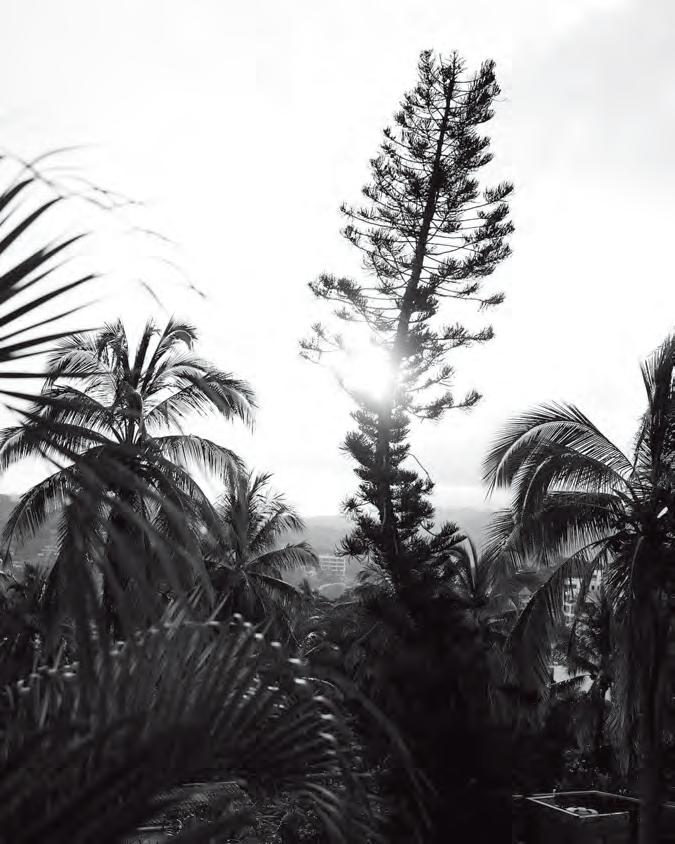
We arrived a few weeks later. It is always enchanting to step off a plane in the tropics in February, to be enveloped in the warm, soft air when you’ve grown accustomed to being smacked by the oppressive cold. But I have been to plenty of warm places. That wasn’t the only magic. Having been all over the world, I wish I could tell you defintively: This is what makes a place special. But I can’t. It’s really a feeling, one that is intensely personal. For me, it’s an immediate sense I get when I arrive somewhere new, a combination of what I see and smell and feel, but, even more, a certain energy. That energy, that lightning-bolt feeling, has rarely guided me wrong.
In Sayulita that winter, we drove around in a rented golf cart, with the kids eating paletas on the back, the jungle lush and green around us, the wind blowing their hair, still damp and filledwith sand from being tossed around by the waves. And we thought: Why can’t life feel more like this? We carried the question back to New York and rolled it around for the next couple years. “Skye, you only live once,” my mother told me, when I tentatively shared this strange dream with her. Ultimately, we decided we did want to try living the life that we had tasted in this small town, so we moved.
Someone told me once that “the people make the place,” a maxim I often think of when I travel. This portfolio includes a few of the many people who continue to make Sayulita, a place that de�es easy de�nition, so special. Unlike many tourist destinations in Mexico,
Sayulita has no separate “tourist zone.” It’s one town, a nuanced, living organism layered with all of the things it has been and what it might one day become: a traditional Mexican fising village built on the site of an Indigenous Huichol energy center; a bohemian surf town that has grown into a winter escape for tourists looking to bask in its temperate February sun; a home for people from all over, searching for a certain kind of life.
My favorite time there is summer, traditionally the low season, when the heat lies over the town like a blanket and time contracts. The days are long and languid, because you can’t do much of anything when it’s that hot. It’s only at sunset that the town begins to stir. The churros seller wheels out his handmade cart, parking it next to the baseball field;street performers walk through town, their costumes jingling as they dance and eat fie. The cafes come alive, spilling out onto the sidewalks. Locals (Mexicans and transplants) and tourists (nationals from Guadalajara, surfers from California, adventurous Europeans) all sit together, laughing and talking and eating, creating a kind of fertile friction usually found in a much bigger port city, set here within the intense intimacy of a small town.
We spent two years in Sayulita before leaving in 2020. But it became a home, and a home is somewhere you can always return. Even now that I’m back in the urban world, Sayulita is where I go when I need to draw on calm. It is where I go when I sit down and close my eyes to meditate: to the sound of the waves crashing on the beach, to the wild aliveness of the jungle, to the summer storms that come in from the sea, so big and powerful that they crash over everything, potent enough to wash it all clean, formidable enough to remind me of my own insigni�cance in this giant world. Last summer, the morning after I buried my father, I boarded a plane for Mexico. As we swooped in to land, the sight of the verdant, green jungle below felt like a gentle balm being applied to the open wound that was my heart. It also reminded me of the power of the jungle, where everything always keeps growing.


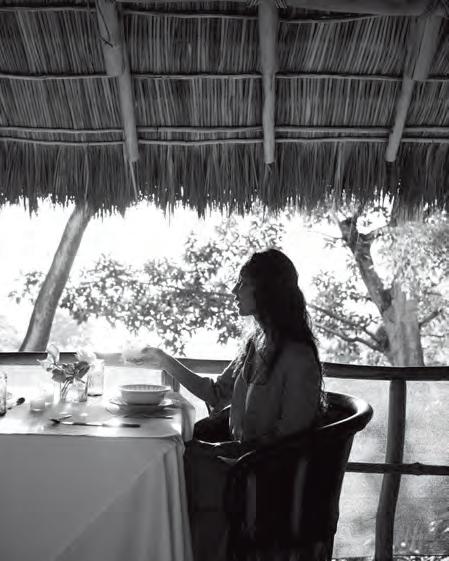
www.haramararetreat.com


Almost Paradise
Teitiare is a sprawling estate built into the jungle on a cliff overlooking the ocean. Its eight rooms can be rented individually or together, as a full buyout offering unparalleled privacy and personalized service. www.teitiare.com
Que Bonito
Don Bonito (named for the founder’s grandfather) is a locally-owned boutique hotel with a saltwater pool, tucked away on the town’s north side. @donbonitohotel
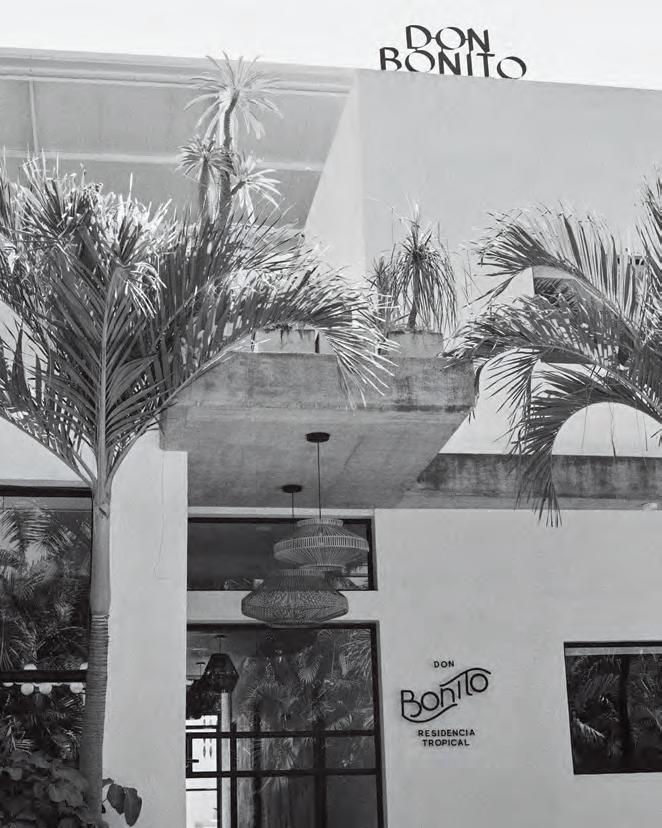
The Secret Garden
Petit Hotel Hafa is a cozy hotel, also run by the Mignot family, located steps from the town plaza. @hotelhafasayulita


Casa Love and Pachamama Nathalie Mignot and her kids came to Sayulita 25 years ago, when she fist opened her shop, Pachamama, which sells black pearl necklaces on leather strings alongside colorful dresses and bags. Her house, Casa Love, has rooms for rent. It’s a boisterous but unique and vibrant experience. @pachamamasayulita



Calixto, Sayulita Wine Shop
“Nineteen years ago, I first set foot in Sayulita, eager to learn surfing. I picked up a secondhand longboard and made my way to the area’s inviting, steady waves. I still get a feeling of deep satisfaction when I breathe in the fresh morning air while soaking in the sounds of the waves and chirping birds.”




Zoey Geez, Cafe Coyote
“The magic of Sayulita is completely unique to each person experiencing it for the fist time. It’s like love: There is no way to quite put your finer on it — everyone feels it differently.”

@cafecoyotemx
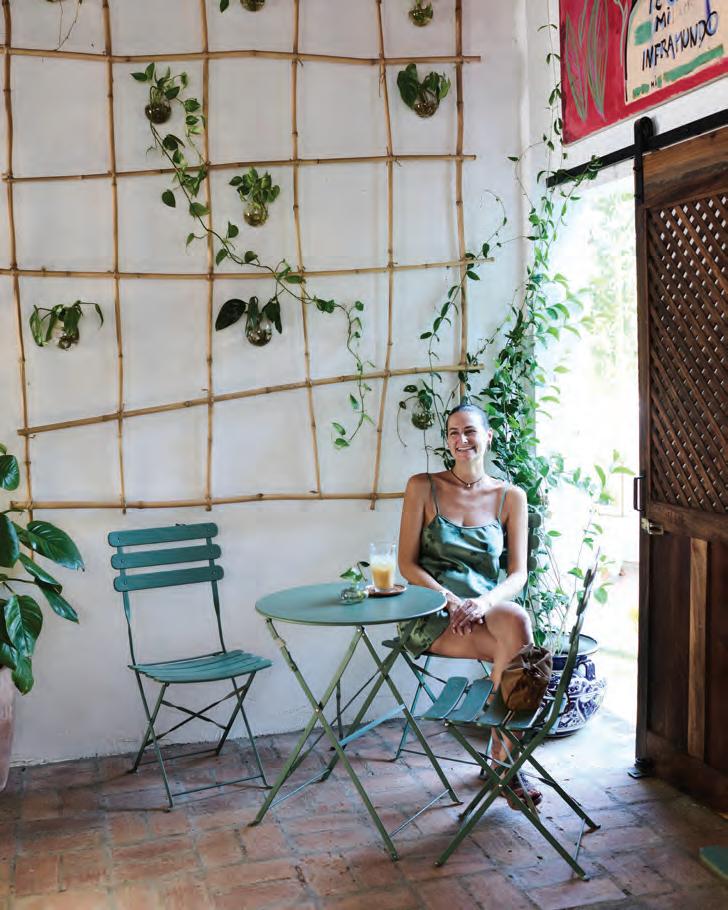
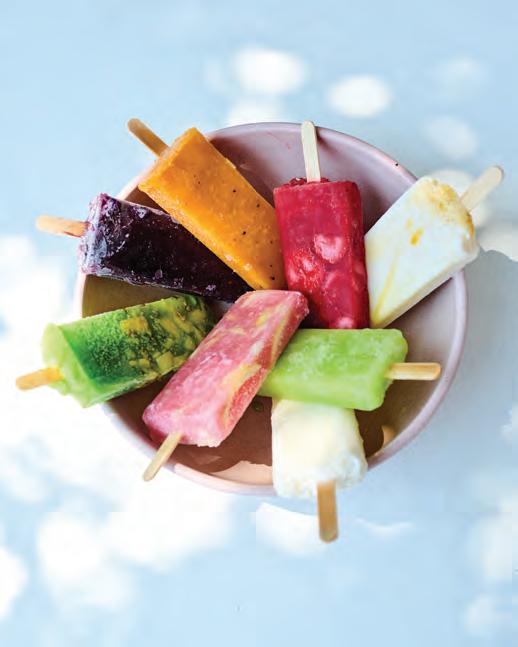
Braida Peña, Wakika
“People here are very friendly and hospitable, and we always support each other, financiallyand morally.”

In the Details
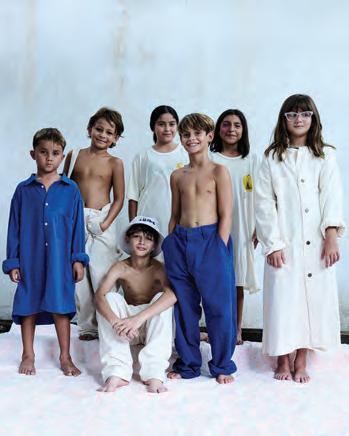
Manyana Shop designs and makes everything it sells, with all of its clothing produced in a workshop by a small team of tailors using locally-sourced, minimally-processed cotton. @manyana.co

Risa Machuca, Surf It Out Mexico
“I arrived in Sayulita in 1997. I was hitchhiking from San Blas to Puerto Vallarta and the entrance to Sayulita drew me in. Sayulita is a paradise within a paradise. You can see the magic in the golden sand and the marvelous wildlife. You can feel it in the air. You can taste it in the cuisine. I was invited to work as a surf coach here 15 years ago and never left.” @surfioutmexico
Chef’s Table
Founded by Cristophe Mignot and Israel Preciado, Tukai is a restaurant-bar serving modern, Mediterranean-inspired cuisine made with fresh local ingredients, ranging from seasonal produce to seafood. @tukaribar

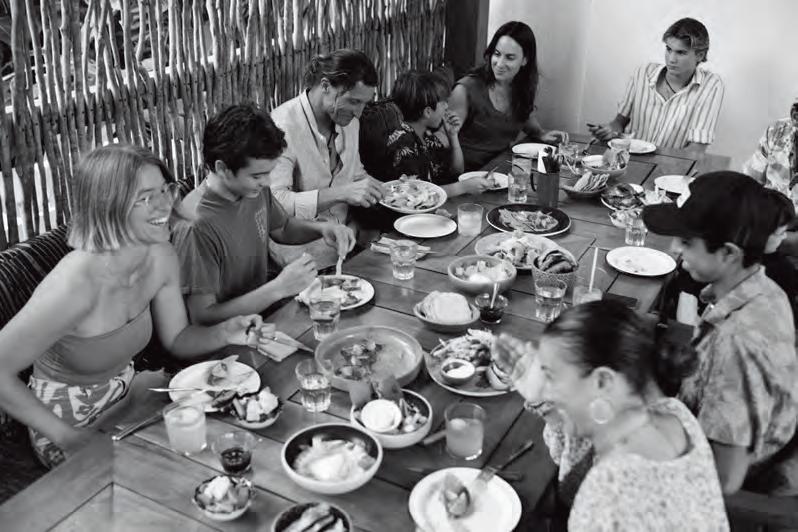


Eat Like a Local Miguel and the team at
have been serving authentic, local food on

(left
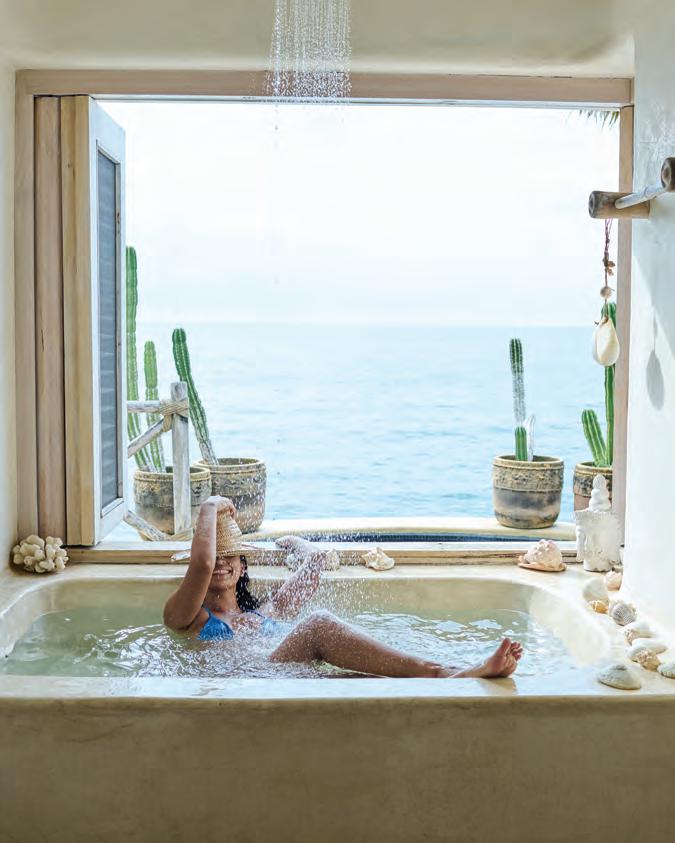

Brittney Borjeson, Evoke the Spirit “Santos once told me that Sayulita was the place his people [the Huichol or Wixárika, the Indigenous people of the area] went to in ceremony to face their demons. He said we were all crazy to live in this energy. I believe him. There is something about this place that forces you to get very real.” @evokethespirit

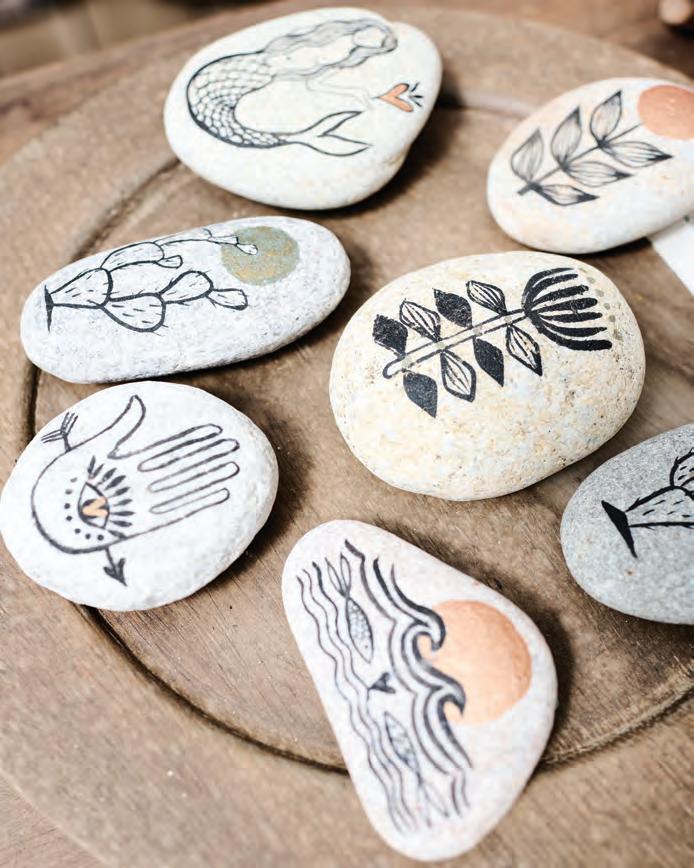




@roseroomyoga
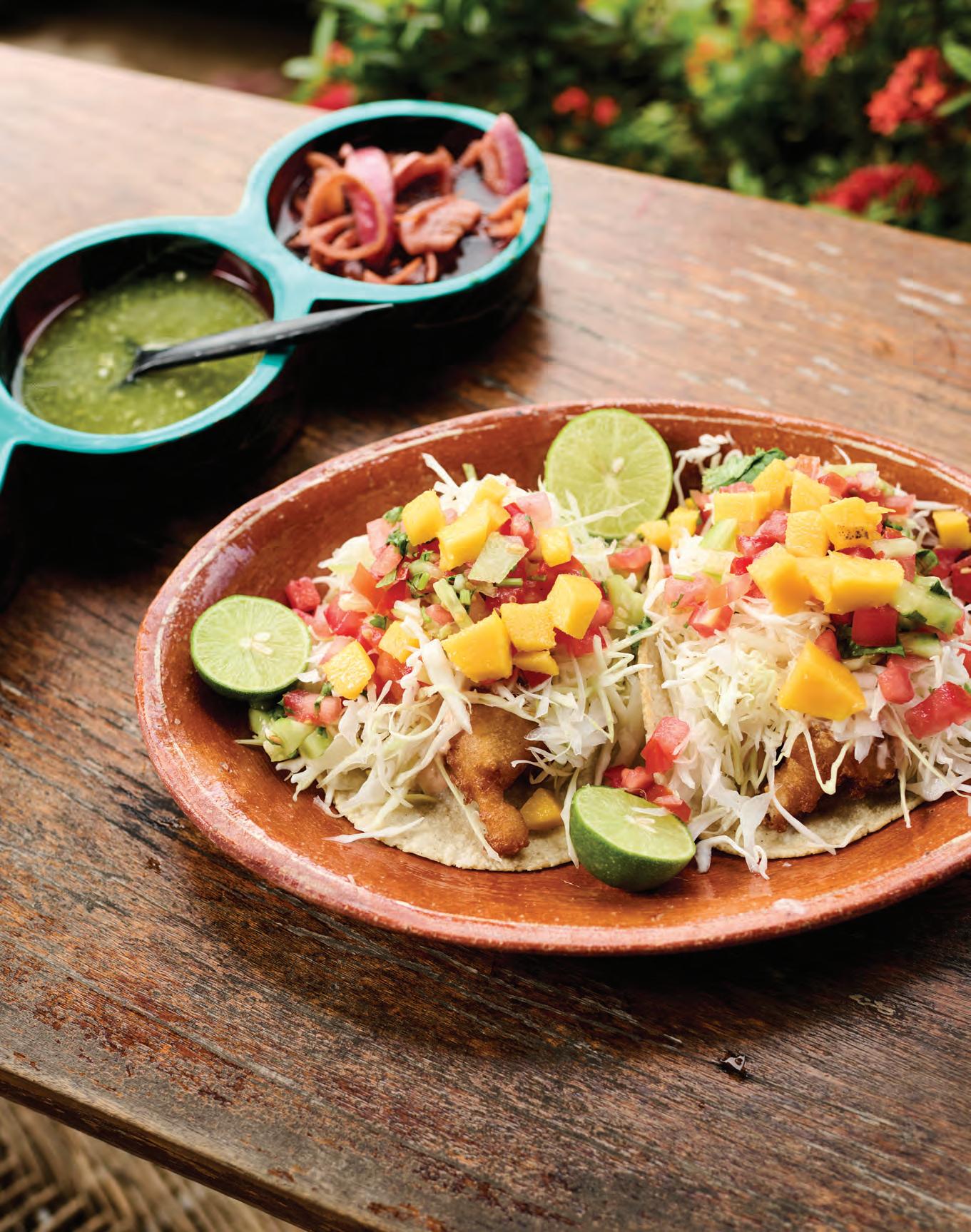
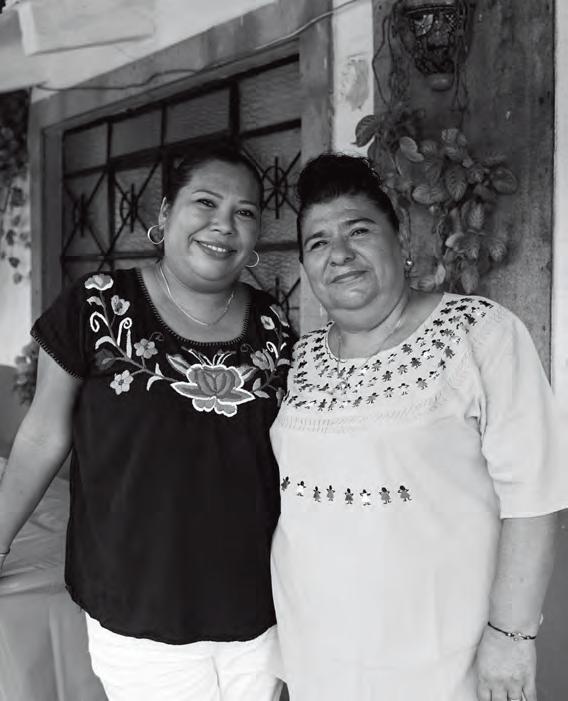
Paola Lopez, Ula Boutique
“Sayulita evokes a spirituality connected with nature: the sea, the sky, and the smell of the jungle. No matter where I was in the world, I envisioned living here with a family.”
@ulaboutiquemexico




Christopher Bollen reflects upon what it means to wear a good suit as he steps into a custom-tailored one from Gucci.

As I headed down to Gucci’s cast-iron boutique on New York’s Wooster Street, a tennis champion was following me. Only a few days earlier, Jannik Sinner had swept the US Open Men’s Final in straight sets, and Gucci billboards of the Italian number one, waving on-court while carrying one of the brand’s iconic duffle bags, appeared at nearly every turn. Tennis was on my mind. So was men’s suiting. I kept �nding fertile connections between the two: Like most sports, tennis requires strength, endurance, toughness, and versatility. Yet, unlike many sports, it produces mesmerizing displays of grace and beauty. You need the rigor of the rules and techniques, but you also need style. The same goes for the perfect suit.
To wear a suit is to make a particular contract with the world: Here I am, irrefutably dressed in a garb of refinemet and civility. A suit is a symbol of accomplishment. It’s also a sign of respect. Every man comes to the ritual of suits
differently. Many had fathers who wore them every day to work. My father was not so dressed. He owned a company that installed specialized flooring and ore a uniform of tar-stained jeans and old button-downs. Still, he appreciated quality clothes. His closet was full of blue blazers and tan chinos — his form of dressing up. I can’t recall him ever wearing a suit of the classic definition:a jacket and trousers constructed from matching textile.
As a kid, I got very close to wearing a suit every day by way of a strict Catholic school uniform. Only the school relaxed its
dress code the very year I attended — white shirt and blue dress pants with a blue tie, no jacket — which made all the boys look like after-work bankers rather than dashing mini-executives. Thus, the suit was for me a rite of passage into autonomous adulthood, something I had to learn on my own. It conveyed a sense of seriousness, sophistication, and self-assuredness that I wasn’t really capable of carrying off until my mid-20s. Suits can be changeagents of style, but more often they are the reliable bedrocks of an American man’s closet, a trustworthy indicator of tradition and manners. I currently own more than a dozen suits — blue gingham, black tux, white linen, brown wool, green corduroy. But a Gucci suit takes my collection to a new level of glamor.
Gucci was founded as a luggage brand in 1921 in Florence, Italy. It introduced ready-to-wear in the mid-1960s, but my formative understanding of the house’s offerings was crystallized in my teenage mind when then-creative director Tom Ford sent his sleek, sex-charged idea of masculinity down the runway. After Ford’s tenure, seduction and playfulness never really left the conversation. Every subsequent Gucci designer has handled that recipe of swagger and sophistication in their own way. Today, it’s Sabato De Sarno’s turn.
One of the reasons I’m particularly excited to visit the Wooster Street store is that the suits I’m about to try on are from De Sarno’s debut menswear collection for Gucci. The Naples-born designer made a name for himself at Prada, Dolce&Gabbana, and Valentino before ascending to his current post in 2023. I watched the men’s Fall-Winter 2024 show last January online, curious in which direction De Sarno would thrust the house.
It was a punk-corporate meeting in the most beautiful way. He posed models on a dark, minimal stage under dramatic spotlighting, the silhouettes bold and solid — all wide shoulders, baggy fits and columnar overcoats falling to the floo. This Gucci man is not goofy or court-jestery or a nervous fawn, and he’s not clinging to his teenage years. He’s as tough as a butcher blade, unafraid to take up space, an aggressive exclamation point.
Proof of point: Gucci’s Wooster store has also undergone a metamorphosis since De Sarno has taken the reins. It’s part boutique, part creative laboratory, with sculptures and video art by a range of modern and contemporary artists from around the globe nodding to SoHo’s legacy as an incubator for creative expression. Five suits are waiting for me in the back room. The two that catch my eyes are double breasted, a cut I’m not sure I’ve ever worn, much less owned. The popularity of the doublebreasted suit harkens to the 1920s; its advent was a British riff on the naval jackets that was donned casually (think a shooting party in the Cotswolds) until the fashion-forward Prince of Wales, the future abdicating King of England, made it a trend among aristos. This lasted for a few decades — with the fi becoming a favorite of solidly-built Hollywood matinee idols and gun-packing mafiososwho appreciated its roominess — until it lost its lead to the standard single-breasted style that is today’s preppy staple of formality. Wearing a double-breasted suit requires a bit of attitude, a coolness. Frankly, at 48, I’m not sure I’m suave enough to pull it off. Thank God De Sarno is out to prove me wrong.
“Slipping the suit around my shoulders, I feel the power of impeccable tailoring.”
I immediately try on the white double breasted, so silky I can’t believe there’s wool in the fabric. Slipping the suit around my shoulders, I feel the power of impeccable tailoring. De Sarno’s suit practically holds me upright, enfolding my body but also rearranging it. The fitdoes precisely the opposite of my expectations: I assumed it would make a thin body look even skinnier, like a child lost in a father’s suit. Instead, the silhouette manufactures volume and strength. Alas, as a New Yorker, I fear spillage and incidental city stains on a white suit; De Sarno’s genius can’t cure every problem. So I try on the black suit, slipping into its wool embrace, with silk lining, the straight-leg pants doing Roman sculptor-like wonders with my deer-like legs. This suit embraces, hugs, maybe even loves.
The tennis analogy comes back to mind. You can watch the beauty of the sport as a spectator, which is how most of us experience it. But it’s another matter altogether to appreciate the rhythm, precision, and skills as a player — the magic that is invisible to most audiences: the spin placed on a ball, the way a player increases or decreases speed to achieve an advantage, a backhand snap versus a forehand rounder. Likewise, much of expert suit tailoring can’t be perceived in the mirror. Only the wearer feels the full richness of the skills: how the suit cradles the hips and grips the shoulder before cascading down, its perfect widepeaked lapels, its parallel rows of black silk buttons (three on each side), its left panel crossing over to hook on the mid-button, creating an elegant clasp of the rib cage — every centimeter of fabric orchestrated to perfection.
My feet slide into the company’s classic 1953 Horsebit loafers as Gucci’s in-house tailor enters the dressing room. She’s in her mid-50s, a native New Yorker with a black pin cushion strapped to her wrist like a punk corsage. As she accesses the cuffs of my jacket and pants, I ask her about her career. She worked at Armani for a dozen years, then seven at Prada before coming downtown to Gucci, a job she adores. The legs need to be taken in just a touch. As she adjusts my jacket sleeve to the requisite quarter-inch, I ask her why she loves working on the Gucci clothes. “It’s the finet dresswear,” she replies simply. She knows where every part of the suit is supposed to fall. When she works on the pant hems, I try to stand tall and button the lower button of the coat. “No, no, best on one button,” she advises.
The finishedsuit arrived a week later, with an exquisite fit.I had planned to wear it for the fist time to a friend’s wedding, fulfiling the invitation’s request to dress to the tens. But that was still three weeks away. Instead, I took the suit out of its cloth hanging bag, slipped it on, sat down at my desk, and wrote this essay.

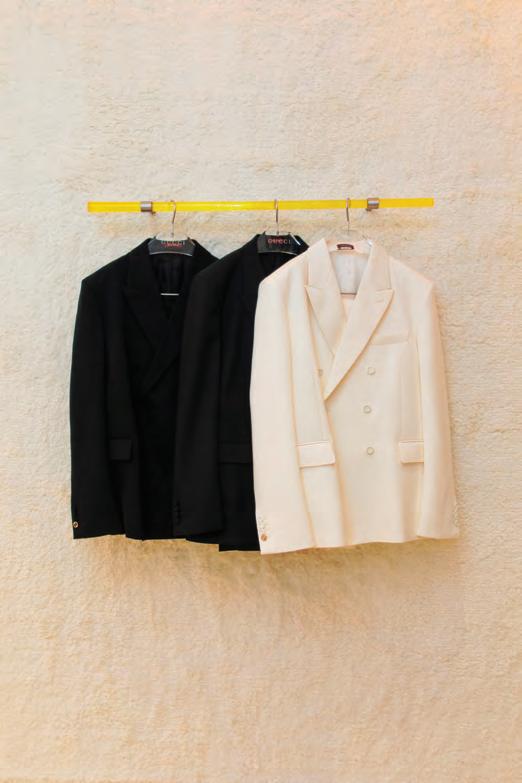

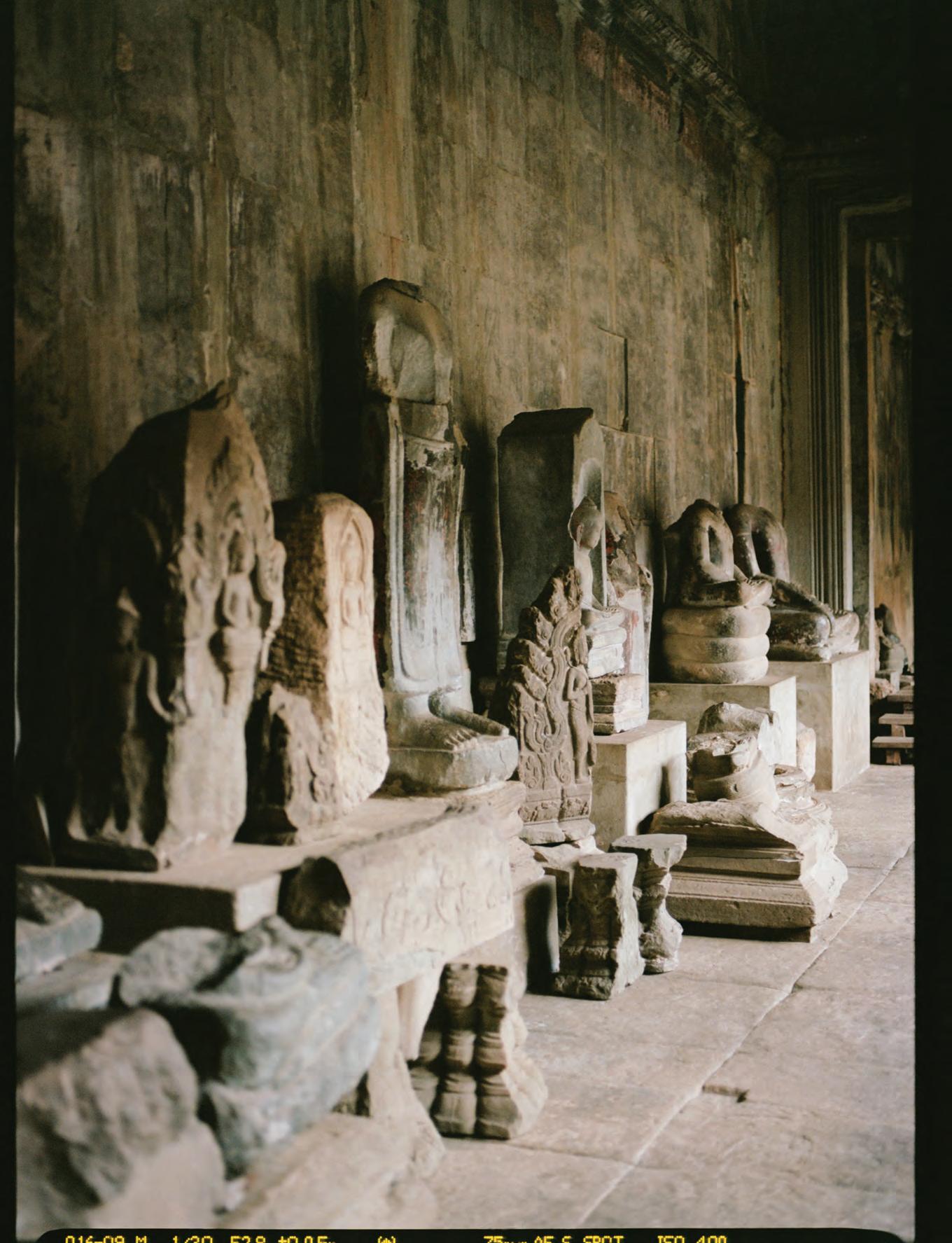

A transformative trip to Cambodia introduces radical ideas of luxury and its potential to do good.


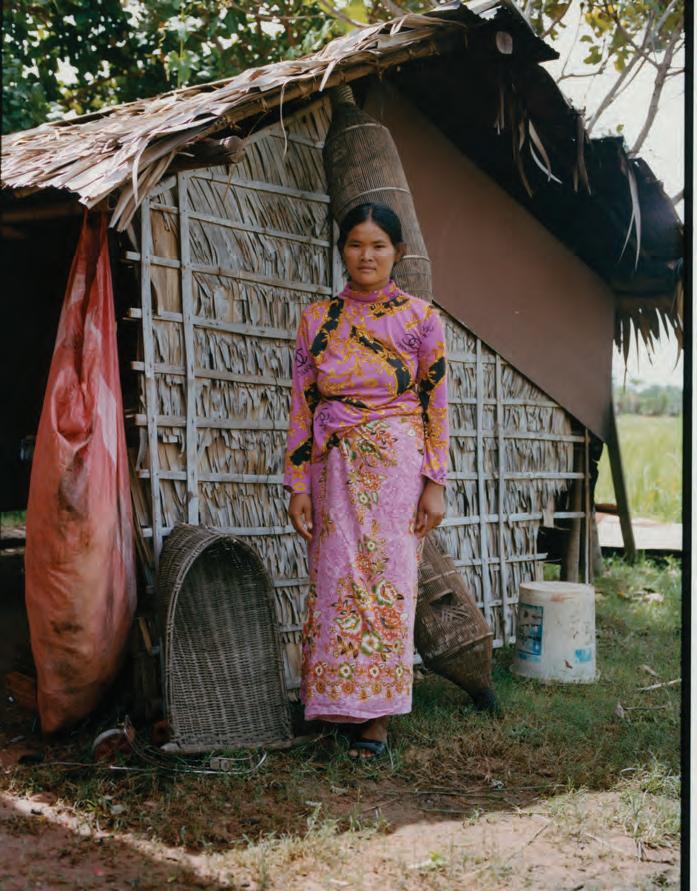



Wild is a two-and-a-half-hour drive from Cambodia’s capital city, Phnom Penh. The resort houses 15 unique tents scattered throughout 400 hectares of pristine wilderness, adhering to its minimal intervention principle.
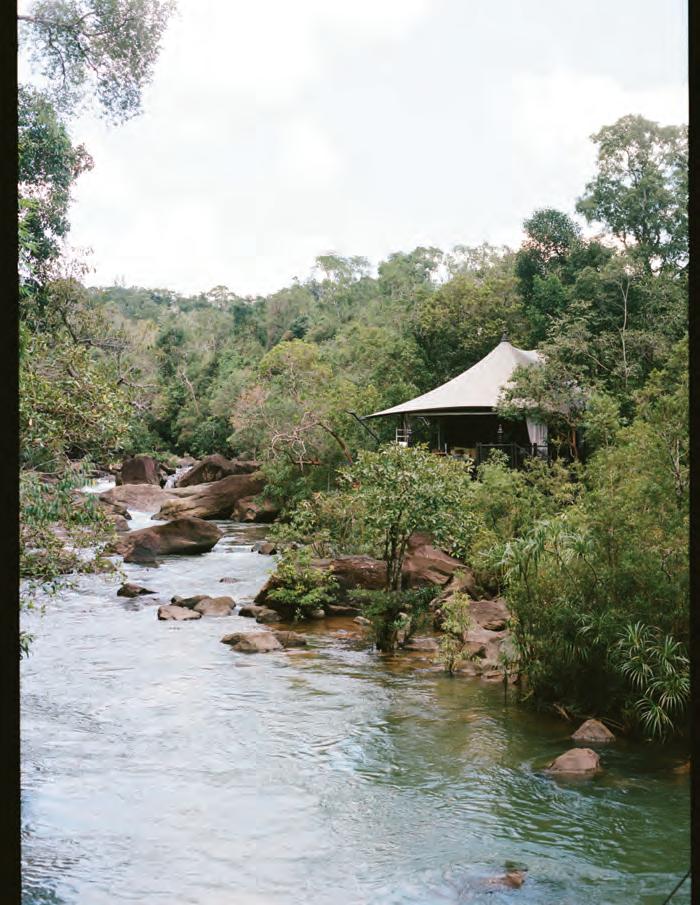

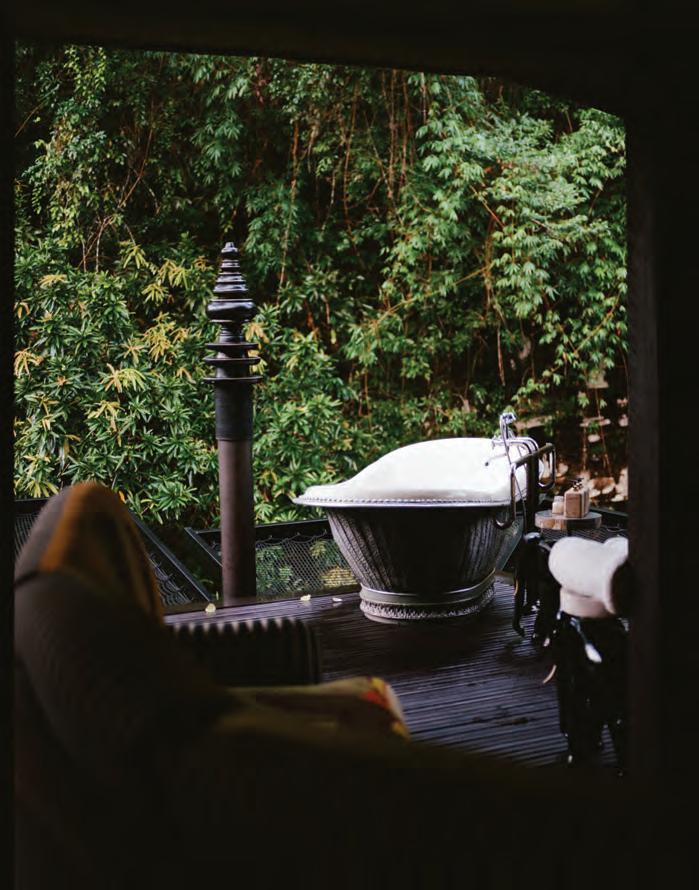


boasts distinctive accommodations, including two-story villas blessed with the perfect balance of outdoor and indoor living, complete with a private
and gardens.
Bill Bensley, the renowned landscape architect, architect, and interior designer, once said that luxury is the opportunity to do good — a bold statement that immediately challenges conventional associations of luxury with excess, indulgence, and detachment. In a world where wealth and privilege are often built on the exploitation of labor, resources, and land, his words ask us to rethink what it truly means to live well. At Shinta Mani Hotels — the community-rooted hotel group founded by Cambodian businessman Sokoun Chanpreda, who was later joined by Bensley — this vision manifests itself in a unique blend of high-end hospitality and deep social commitment, leading us to question whether luxury could serve as a force for ethical transformation, rather than mere consumption. Could we imagine a world in which indulgence is not an escape from reality, but a means to engage with it more responsibly?
With this in mind, my partner, photographer Camila Falquez, and I embarked on a nine-day journey to experience firsthand the two Shinta Mani properties in Cambodia that reflet Chanpreda and Bensley’s vision. At the outset, we were skeptical, expecting the familiar gloss of high-end tourism with its token gestures of social responsibility. Yet, as we immersed ourselves in the lush landscapes, the carefully designed spaces, and the deeply human interactions with the people of Shinta Mani, it became clear that this was no ordinary vacation. It was an invitation to reframe the relationship between luxury and goodness, challenging the cynicism that often accompanies such grand declarations. What we found was not just an innovative hospitality model, but a window into how luxury — collectively redefined— might serve as a platform for communal well-being, environmental stewardship, and social equity.
butlers propose a set of activities designed by the hotel’s team to enhance their connection with the natural setting.
During our stay, two activities curated by the Shinta Mani Wild team stood out, each providing insight into the extensive operations necessary to maintain the hotel’s unique balance with its environment. On our second day, our butler, Sky, took us foraging with the hotel’s executive chef, Bernard Hartzenberg, who has extensive experience creating remote, luxurious hotel experiences. A local ranger guided us on a lengthy walk through the valley, teaching us how Cambodian rural communities forage for fruits, roots, and vegetables from the forest. We also toured the garden, chicken coop, and hydroponic farm — an innovative zerowaste operation that converts food scraps into organic fertilizer.
“It left us with a deep respect for the ongoing battle to protect Cambodia’s natural beauty and biodiversity.”
Back at the hotel, we utilized the foraged and collected ingredients to participate in a cooking class, resulting in a remarkable lunch. This experience allowed us to fully appreciate the care and challenges the chef and his team face in delivering exceptional meals without access to wholesalers, suppliers, or large supermarkets.
As we walked back to our tent from the kitchen and restaurant headquarters — a scenic 20-minute stroll along a carefully crafted path with bridges — we enjoyed the forest’s sounds and sights and the numerous waterfalls we crossed. This journey led us to consider the intricate details of this vast operation, which felt more like a harmonious choreography than an invasion, transforming our presence into a balanced coexistence with nature.
Shinta Mani Wild, the fist hotel we visited, is located a twoand-a-half-hour drive from Cambodia’s capital city, Phnom Penh. Most of the journey was enjoyable, on new roads built during the pandemic, when the country paused tourism and focused on infrastructure construction to keep its economy aflot. The last 45 minutes, however, took us along a bumpy dirt road that grew more and more rugged. As we neared the mountains, the landscape closed in, surrounding us with abundant vegetation. Small roadside houses and stores became increasingly sparse as we ventured deeper into the forest. By the time we arrived at the hotel’s gate, we felt as though we were entering another world.
The property houses 15 unique tents scattered throughout 400 hectares of pristine wilderness, adhering to Shinta Mani Wild’s minimal intervention principle. The design provides guests with a sense of secluded immersion in nature. At the same time, they are supported by an exceptional team ready to cater to their every need. Wellness services, including massages, yoga sessions, sound baths, and in-room service, accompany a carefully curated menu that highlights locally foraged vegetables and produce — all available in the heart of the forest. Before guests arrive, adventure
The following day, we embarked on an eye-opening antipoaching patrol with rangers from Wildlife Alliance, a group whose partnership with Shinta Mani Wild exemplifiesa deep commitment to preserving the natural reserve that envelops the hotel and the Cardamom Mountains in Cambodia, an area rich in biodiversity. Home to 54 of the planet’s most endangered species, as listed on the IUCN Red List, this majestic evergreen forest has been under threat from deforestation and the loss of wildlife. As we trekked through the dense forest, the air was thick with anticipation and purpose. We silently followed the rangers, who were attuned to the subtle sounds of wildlife and the small signs of human intrusion. Their vigilance was palpable; every footprint in the dirt or broken twig on the path could tell a story of survival, both of the animals we sought to protect, such as clouded leopards and Sunda pangolins, and of the poachers seeking to exploit this fragile ecosystem.
Throughout the patrol, we learned about the complex and often dangerous work these rangers undertake. It was sobering to hear their stories — of raids, arrests, and sometimes violent encounters with those driven by the illegal wildlife trade. I was struck by the balance they maintained: a reverence for the wilderness they protect, yet an unyielding determination to confront those who threaten it. This patrol, more than any other
activity, revealed the profound impact that luxury tourism can have on conservation. The preservation efforts are not just an add-on or an afterthought — they are central to the Shinta Mani Wild experience. It left us with a deep respect for the ongoing battle to protect Cambodia’s natural beauty and biodiversity.
It was a fittingconclusion to our stay at Shinta Mani Wild, one that lingered in our thoughts as we transitioned to Shinta Mani Angkor in Siem Reap. There, we felt drawn to something equally meaningful, yet distinct — an exploration of Cambodia’s rich cultural heritage and the enduring strength of its people.
The morning after our arrival at Shinta Mani Angkor, Vannak, a guide arranged by the hotel, took us to what he described as his favorite temple after we visited the ruins of Angkor Wat and Ta Prohm. He fondly referred to the Bayon temple as a playground for him and his siblings during their childhood, which had been interrupted by the civil war that ravaged Cambodia from 1974 to 1993, making the temples virtually inaccessible to tourists. As I explored this intricate sanctuary, I couldn’t imagine a better place in the world for a game of hide-and-seek. With 216 smiling faces — believed by scholars to represent Avalokitesvara, the bodhisattva of compassion — crowning the 54 marvelous towers of the temple, I marveled at the privilege of growing up nearby while also contemplating the horrors of civil war.
ervation and stewardship, implementing focused conservation and anti-poaching initiatives to safeguard natural habitats and wildlife, all while promoting a sustainable future. By believing that collective action and responsible tourism can drive positive change, the foundation aims to contribute to a better, more equitable world.
“Those who surrender to the experience will be profoundly transformed.”
Its positive impact on the lives of hundreds was evident during our visit to the Shinta Mani Hospitality School located within the Siem Reap property. This tuitionfree school offers full scholarships to students from rural areas served by the foundation. While we couldn’t visit all the initiatives, those two days allowed us to appreciate the scale of the operations. The numbers speak for themselves: 123 homes built,[I understand using semicolons here, but prefer commas and cannot findguidance in the style guide] 1,793 water wells drilled, 297 graduates from the hospitality school, 87 microloans issued, 16,186 dental-care treatments provided, 3,900 bicycles gifted to enable students to attend primary and secondary schools,10,000 school supplies donated, and 1,700 water filers distributed. While these numbers are concrete, they barely scratch the surface of evidencing the positive impact on the recipient families.
Throughout the day, Vannak took every opportunity to remind us that peace is an invaluable privilege, one that only those who have grown up amid conflit can fully appreciate. He paused in his description of childhood games to share a memory that he had never shared with tourists. “One day, I hid so well that I fell asleep while waiting to be found,” he recounted. “Deep in my sleep, I felt someone waking me up. Surprised, I opened my eyes to see the smiling face of the Buddha, carved out of stone, signaling me to recognize that it was alive and that the stone it was made of was living matter, like everything else in the world.”
When we returned to our hotel villa — a two-story space blessed with the perfect balance of outdoor and indoor living, complete with a private pool, rooftop lounge, and gardens — we felt that a radical understanding of compassion housed the key to comprehending Shinta Mani’s essence. The next morning we met with one of the leaders of the Shinta Mani Foundation, which is dedicated to improving the lives and economic conditions of individuals in the communities where it operates, equipping them with the necessary resources to escape poverty. We decided to extend our stay to visit the foundation’s work in the rural areas surrounding Siem Reap, and the following two days turned out to be the most rewarding of our luxurious trip.
The foundation’s comprehensive programs impact thousands of impoverished Cambodians every year, addressing areas including education, healthcare, conservation, and support for small business startups. They also prioritize environmental pres-
Cambodia’s complex history, marked by recovery from genocide and a relatively recent civil war, presents a unique opportunity to redefinethe concept of good and the positive impact luxury can have on the world. While it is undeniable that Bensley is a visionary in sustainable architecture and design, one might argue that his greatest work lies in his work with the foundation and the benefitsit provides underprivileged communities. The houses constructed by the foundation, also designed by him, re�ect the care, love, and compassion he has imbued in their architecture. On our last day with the foundation’s workers, we visited these homes and witnessed the thoughtful details of his designs. We spent a couple of hours in one of the houses built by the foundation, with the family, their neighbors, and foundation workers on a traditional Cambodian platform — where much of social life occurs — enjoying fruit with chili paste and learning about their lives and struggles.
In that moment, talking with the family, far away from our splendid villa, we truly grasped what good luxury can bring to the world. Luxury, commonly characterized as isolation from harsh realities and a lack of necessity, appears in the Shinta Mani experience as an opportunity to inhabit reality with its troubling dimensions — rather than displacing it. Here, luxury means helping others compassionately to overcome the limitations and horrors of poverty while collectively creating more sustainable, human, and environmental ways to coexist. Shinta Mani gives its guests the chance to experience this radical definitionof luxury and goodness. Those who surrender to the experience will be profoundly transformed.

Getting to Cambodia Cathay Pacificoffers direct fligts to Hong Kong from New York, Boston, Chicago, Los Angeles, San Francisco, Vancouver, and — as of 2025 — Dallas. From Hong Kong, short connections carry you on to your desired destination in Cambodia. Along with offering worldrenowned comfort and amenities, the airline has recently unveiled its new business class Aria Suite alongside an array of fine-diningmenus created in collaboration with Michelin-starred French restaurant Louise; Pirata, a flaship Italian restaurant in the Wan Chai district of Hong Kong, specializing in regional specialties; and Michelinstarred Hong Kong-based restaurant Duddell’s, which celebrates the flvors and ingredients that represent the city’s heritage, diversity, and ingenuity.







At Hermès petit h, the legacy French house’s experimental atelier, magical thinking reconstitutes would-be waste into mind-bending wonders.
There are certain experiences that wriggle their way back into my mind at unexpected moments. They’re not of the anxious variety. They’re not ruminations at all, really. They’re more like lenses. Because they quite literally alter the way I interpret the world around me. Like a visit to The Noguchi Museum in Queens, New York, that cubby of amorphous, structural wonders. Days later, harried and rushing to the subway, I catch sight of a hobbled, old barricade that, to my newly tuned eye, looks like a handsome, slanted sculpture (Noguchi’s doing.) It’s a delight — this unanticipated intrusion of new sight.
Words by Khira Jordan
Photography by Erwann Petersen
The same is happening now, as I delve into the ebullient, absorbing story of petit h, a madcap laboratory of sorts, where viewing the world askew has always been the order of the day. Comprised of a small yet nimble
team of craftsmen, designers, and artists, this atypical Hermès atelier has set itself the task of gathering waste from the house’s other creative métiers — all 15 of them — and zealously reimagining what those disparate bits could coalesce to create.
Enterprising and more than a bit impish, petit h was founded in 2010 by Pascale Mussard, a sixth-generation descendant of Thierry Hermès and a child of the Second World War, whose waste-conscious household sparked her penchant for collecting and collaging whatever was at hand. Since 2018, petit h has been stewarded by creative director Godefroy de Virieu, an industrial designer by training and something of a hummingbird by nature, buzzing through the space, creatively cross-pollinating from project to project. It’s a tall order to deal exclusively in elements destined for the bin. Yet, with one look at petit h’s array of singular creations — whether a sled, swing, music box, or cuckoo clock — you realize that this material constraint acts more like a catapult, prompting the enclave’s most free-thinking instincts. “The more complex it is, the more excitement there is to achieve it. It gives an energy,” affirmsde Virieu.
Located in an old factory building in Pantin, on the outskirts of Paris, the petit h workshop and its “nursery” (the name given to the room that houses objects-in-progress) have a real whir to them. Amidst a backdrop of imperfect buttons, shards, saddles, and scraps — each treasured for its particular character — new creations are conceived, tinkered with, expertly perfected, and then “off they go,” as the affable studio head puts it. Upon learning just how improvisational the atelier’s processes are (no drawing, no sketching, no preconceptions; just “intuition immédiate”), perhaps it is more accurate to say that new pieces are hinted at, articulated, evolved, put aside, revived, finessed,and finall, when they seem to practically announce themselves, unleashed into the world. That’s the idiosyncratic path a beautiful but unusable chair took to become an elegant broom with matching dustpan and how a fully functioning clock ended up inside a tipped-over teacup.
Yet for all their mirth, nothing at petit h is simply a curio made for show. Every bit of whimsy comes with an equal dose of rigor. As its founder Mussard frequently observed, “There is no object without an objective.” So, spectacularly fashioned though they may be, every lamp is meant to be lit, every stool to be sat on, every guitar to be strummed, every hammock to be swung in — like fabulous cadavres exquis artisanally coaxed into being, all in the name of sustainability.
It’s an ingeniously modern preservation of tradition too. Inside every fiished product is both a fleting, associative moment of creativity and nearly two centuries of artisanal expertise; an experimental blend of ephemeral, here-and-now ingenuity and eternal, meant-to-be-handed-down quality. In the colorful words of de Virieu, it’s a special amalgam of play and nurturance, “du jeu et de la nourriture.” Indeed, petit h’s very existence, its investigative nature, its spirited resourcefulness is an ode to magical thinking — a vibrant rallying cry to always tilt our heads ever so slightly to the side. When we do, the prescriptive, the foregone, the always-was-and-always-will-be becomes malleable, and, poof: “les formes apparaissent.” Possibility takes shape.



“The more complex it is, the more excitement there is to achieve it.”

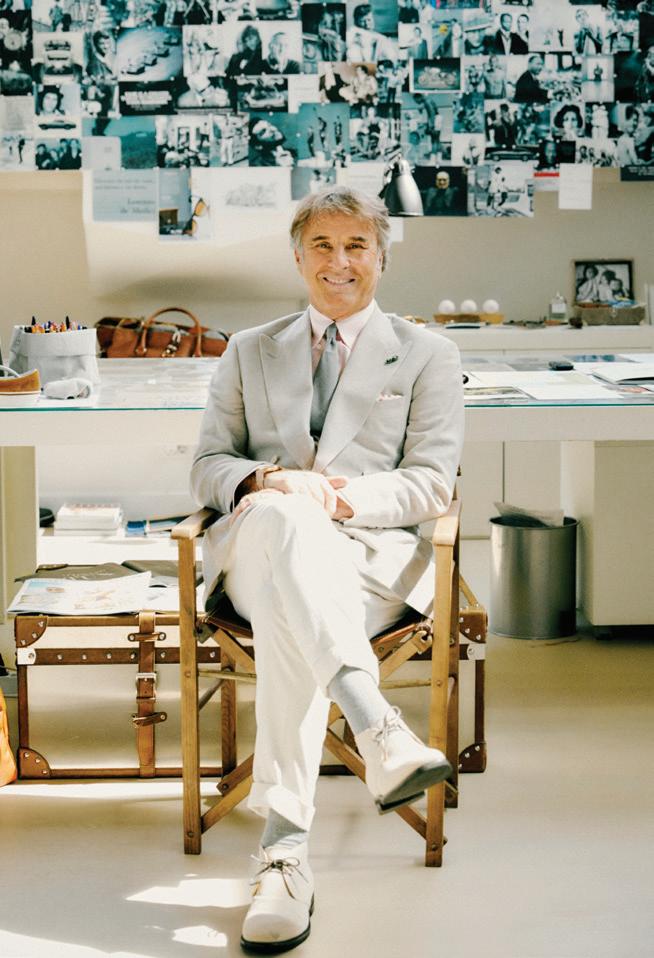

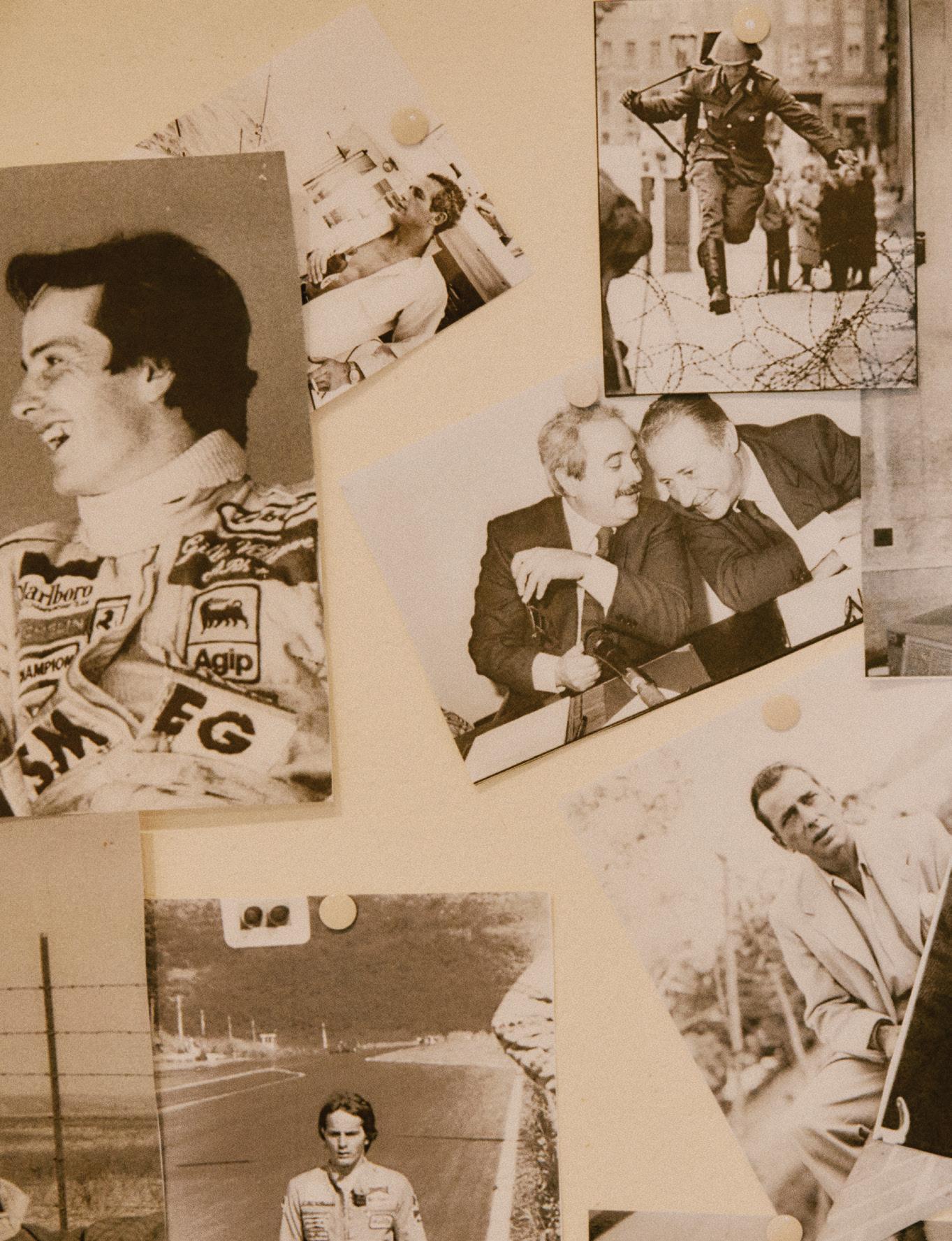

Brunello Cucinelli expounds on the winds of change blowing through our turbulent world and their potential to precipitate a brighter future.
The morning I traveled from Rome, Italy, to Solomeo to meet with Brunello Cucinelli was tempestuous. The skies wept. The usually two-hour drive was a Monopoly board of delays: Roll a one, an accident on the autostrada sends you 15 miles off course; roll a two, miss a turn due to flooded backroads. Descending from Perugia, another detour prolonged my arrival. Then, just as the medieval hilltop hamlet came into view, the petulant clouds split. Between them rested a placid double rainbow — a prophetic omen for the conversation that followed.
I had come to Solomeo to speak with Cucinelli about the true meaning of luxury today, rooted in his dedication to “Humanistic Capitalism and Human Sustainability,” a phrase coined by him and a philosophy practiced at his eponymous company. But, as should be expected from a man who has systematically, yet gently, grown his business from a local, high-end cashmere sweater company into a global empire, he quickly evolved the prompt to reflect his current contemplations.
In a dialogue that covered everything from the Roman Emperor Hadrian’s dedication in the veracity of dreams to the elemental altruism of artificial intelligence, a clear throughline emerged: Cuccinelli’s belief in the possibility of a brighter future, despite the persistent metaphorical thunder clouds encircling the Earth. His vision does not discount the gravity of today’s social, political, cultural, and ecological challenges, nor the high stakes of their outcomes. Rather, it advocates approaching these trials with more wisdom and benevolence and less fear and panic, with an eye towards reestablishing a collective equilibrium.
This tonal shift brings with it an invitation to consider the role perspective plays in our predictions: Seen through a lens of hope, rather than doom, the future holds infinite possibilities, including the potential for a human-propelled path towards what Cuccinelli describes as a new Golden Age.
BC: Until 30 or so years ago, luxury was just luxury, with no adjective added. It referred to something extremely exclusive, made very well that was, ideally, supposed to last. Then someone started talking about “aspirational luxury.” Then “accessible luxury” was added to the equation. People started talking about “super” or “ultra” luxury. Now, there’s also “quiet luxury.” But the value of luxury is the same as it has been for 2,000 years. So this year, we came up with the expression “gentle luxury,” and we defined it as a symbol of beauty within measure.
Between 800 and 400 B.C. in Athens, philosophers often discussed “living within measure,” which means: You take whatever creation gives you. If there’s an earthquake, it’s part of life. If there is an incredible storm, you accept it as part of life. But in 400 B.C. people began struggling to accept what came their way. Then around 1500, one of the greatest humanists Thomas More said, “God, help me accept what I cannot change; help me change what I can.” This morning when I went to the bar in the village, everyone was complaining, “My God, this rain!” A young man asked if I wanted an umbrella; I said no. I really wanted to get drenched. The rain was something that I couldn’t change, so I enjoyed it. But to enjoy the small things in life, you have to accept what you cannot change.
In the past 30 years, because science has made huge progress — as the arts and poetry did in the Renaissance — and medicine has made incredible advances, we thought that humankind could be ruled only by science or through science, so we have struggled to accept what we cannot change. But we need soul and science. Without a soul, you can’t live.
We are all born with a malaise of the soul; it’s part of being human, but it has gotten a bit stronger in the last 20 or 30 years. Social media — which isn’t to say it’s anyone’s fault — hasn’t helped. There are 8 billion human beings on Earth, and we are all looking for something. No one knows what it is, but we are all missing something.
Here’s an idea: My grandfather used to just sit and stare at the sky. Maybe that’s what we’re missing, a dialogue with creation. It is as if we need a new equilibrium, a fully realized one, in relationship with the heavens and creation, our surroundings and ourselves — in balance with life, with our families.
These days, we go back home and maybe we cuddle less, because we need to send text messages, watch who knows what, check emails. We don’t look each other in the eyes anymore. We’ve stopped reading poetry. We no longer have time to look at flowers. We hardly have the time anymore to ask: I see you’re a little less happy today — why? Perhaps the true progress could be to return to certain things from the past — not reversing artificial intelligence or technology, but with certain values — to change the pace of life.
Sixty percent of everything we make here is handmade, with needles and scissors, but you also need time to learn the craft. We need to resurrect certain special crafts and professions. This is part of exclusivity. And when we plan and design, we need to design things we want to keep. I almost always wear the
same things. I never throw anything away — because it’s beautiful, because it’s well-made, and because we need to respect nature. Young people understand this very well; they tend to be more sensitive to when and how something has been made and whether creation has been harmed in the process. Maybe we don’t need to have less, but maybe yes.
“So starting today, replace fear with hope and your life will change.”
Around 500 B.C., Pythagoras wrote “Do not go to bed until you have gone over your day three times in your mind: What wrong did I do? What good did I accomplish? What did I forget to do?” If your answers are pleasant, in line with creation, you should be joyful. If they reveal something harmful, you should repent — because perhaps as you sow, you will reap.
The other day I was with my granddaughter and there was a fly in the house. Ten years ago, anyone would have splattered it, but she opened the window and ushered it outside. This is a beautiful sign. Ten years ago, you threw away stale bread, now you give it to the dog. There is a beautiful change happening within humanity. It is a return to the true luxury of creation, a new movement towards creation.
That’s why I believe we are right on the eve of a new Renaissance. Because we need this. Which reminds me of another thing I read, that has been a source of inspiration: Listen, learn, set aside, invent. You can invent if you have learned and set aside that learning, which means it remains somewhere within you. We need to invent, to find a new way, a new equilibrium, learning from the past.
This amounts to what Hannibal said when he had to wage war against the Romans and he knew he was on the weaker side. When his generals asked him, “How will we do it?” He replied, “We’ll find a way — and if we don’t find one, we’ll make one.” That’s what it means to invent.
I believe that the world is moving towards a new Golden Age, because this is the best moment that humanity has encountered: We have lifted millions of people from poverty and famine. Children are treated better. Now you can live to 100. You can see the heart and operate on it from the outside. The robots who will soon populate our homes and lives are empathetic by design. I’m not saying that it can’t get better.
We need to rediscover the great ideals — fair politics, family, spirituality — and relearn them, together. I teach my grandchildren everything that my grandfather taught me, including: Never, never give into fear. Although my father and his father went through war and dictatorship, they never talked about fear. They always talked about hope. So starting today, replace fear with hope and your life will change.
We need to become guardians for our children and our children’s children. It is our job to create something for the grandchildren of our children. When we build, it should always be for eternity, because when we give back, even a little, we are giving back to creation.
So my recommendation to young people — to the young paladins, the young guardians of the world, the caretakers of this new creation — is to look at the world differently, with possibility.
This transcript has been edited and condensed for clarity and length.




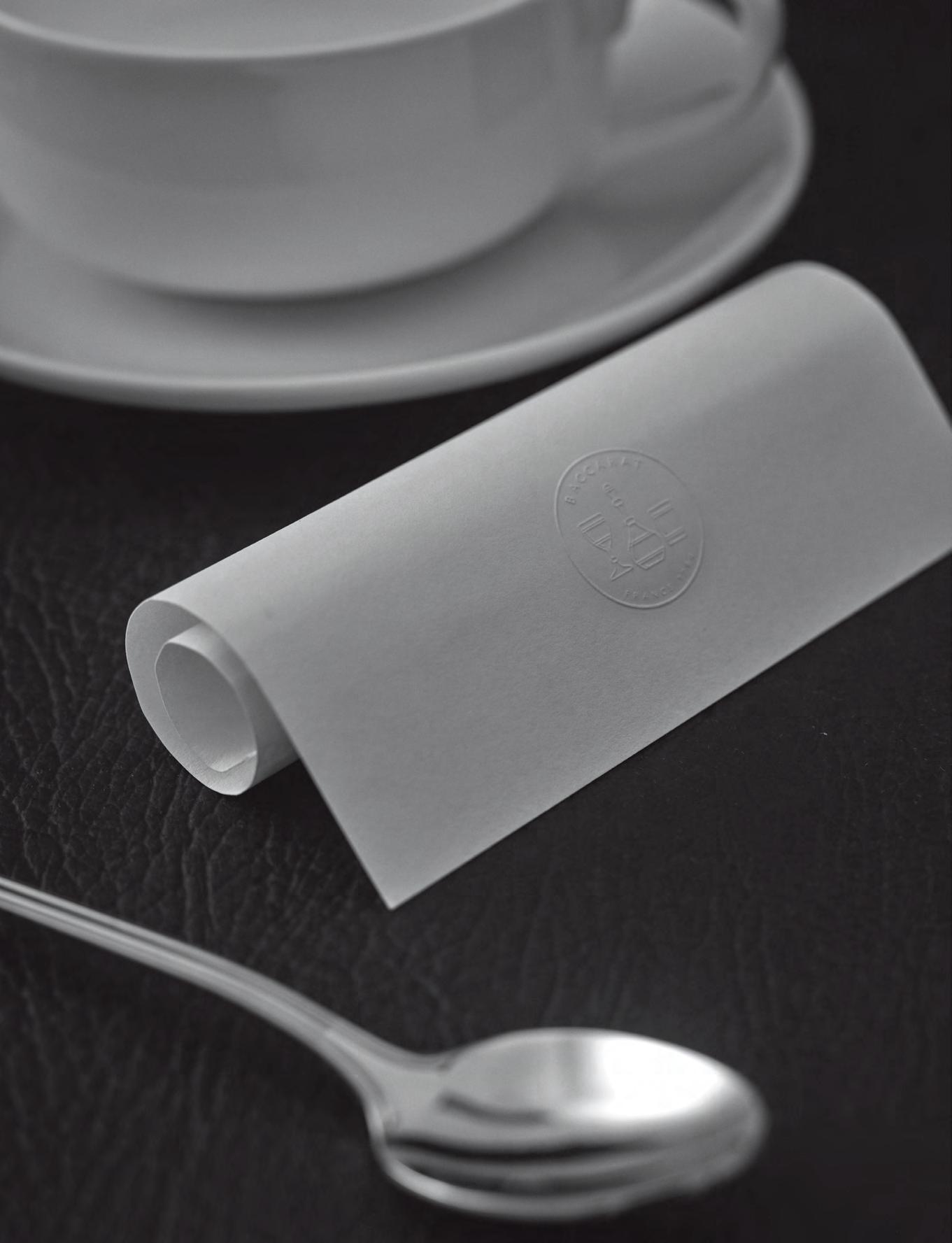
Baccarat Hotel New York
The term “Parisian” gets thrown around a little too loosely when it comes to describing hotel aesthetics, but you’d be hard-pressed to finda New York property that feels more like it belongs in the French capital than Baccarat. Among the city’s most luxurious hotels, it boasts a crystal-filledGrand Salon, Côte d’Azur-inspired pool with hypnotizing checkerboard tiles, Belle Époque-worthy bar, and the most poetic of all fragrances: Baccarat Rouge 540 by Maison Francis Kurkdjian.
it’s there. It’s ledger of love letters and a dignified dream keeper, reluctant coaster and impromptu canvas. It’s been Toni Morrison’s muse, Raymond Chandler’s accomplice, and Henri Matisse’s companion. It’s been customized and cherished, crumpled and folded, secreted away in suitcases and trash bags. Yet it never surrenders, this carte-blanche invitation of unfiltered expression, this idiosyncratic Rorschach drawing — this not-so-humble hotel stationery.

The Beverly Hills Hotel Opened in 1912, this landmark Paul Revere Williams-designed property continues to definethe ultimate Hollywood experience — as characterized by its founder Margaret Anderson, whose hospitality motto was said to be: “Guests are entitled to the best of everything regardless of cost!” From its iconic sign to its red carpeted lobby to its invariably famous guests, the hotel remains the best place in LA to enjoy a chopped salad and people watch, specificallyin the Polo Lounge.

MacArthur Place
Situated in the heart of California wine country, this boutique retreat offers an experience as sanguine as its Sonoma Valley surroundings. Six acres of gardens burst with fruits, flwers, and herbs that later show up on plates or in bespoke spa treatments. Guest rooms channel their surroundings with natural hues, organic materials, and outdoor showers while fie pits and secret nooks entice visitors to wile away their hours outside.

Rusacks St Andrews
Occupying a palatial 1800s building overlooking the picturesque town of St Andrews, this Scottish Highlands hotel is steeped in history. Its windswept beach was the setting for Chariots of Fire and the property is within view of the 600-yearold Old Course links, as well as just around the corner from golf’s most famous pub, The Dunvegan.
Shutters on the Beach Southern California has no shortage of beachy hideaways, but Shutters on the Beach is an icon among them. Ideally perched on the edge of Santa Monica, away from the crowds but within walking distance of restaurants and shops, the hotel offers a destination pool, its own oceaninspired dining options, and the effortlessly elegant ambiance its name promises: white-shuttered guest rooms that open to panoramic views of the Pacific



The Ritz Paris has no shortage of prestige, given that Maria Callas, Ernest Hemingway, F. Scott Fitzgerald, Coco Chanel, and Marcel Proust all spent time living there, and the hotel was a regular watering hole and workspace for too many artists to name. Yet, the storied property refuses to rest on its laurels; it’s constantly placing this rich history in dialogue with the present — via unexpected creative collaborations and vaunted everyday offerings.

Hoshinoya Karuizawa
An hour’s train ride from Tokyo, this refinedescape combines Japan’s elevated hospitality traditions with private guest pavilions, a picturesque onsen and spa, and an unprecedented forest setting alongside the Yukawa River. Guests are encouraged to explore the property in search of the scenes depicted on the nature-inspired postcards left in their rooms and color in the scenes as they findthem.
For the golf-obsessed traveler, Marine & Lawn Hotels & Resorts serves up a laundry list of some of the most exquisite course-adjacent properties in the world, including Slieve Donard in Northern Ireland and Marine Troon on the Ayrshire coastline.


The Dolder Grand
Celebrating its 125th anniversary this year, The Dolder Grand in Zürich embraces history and creativity in equal measure. Outside, its grand architecture archives its evolution from a sanatorium to a world-famous city resort. Inside, its renowned restaurants and spa reside alongside its expansive art collection, which features over 100 works by artists ranging from Joan Miró to Niki de Saint Phalle.
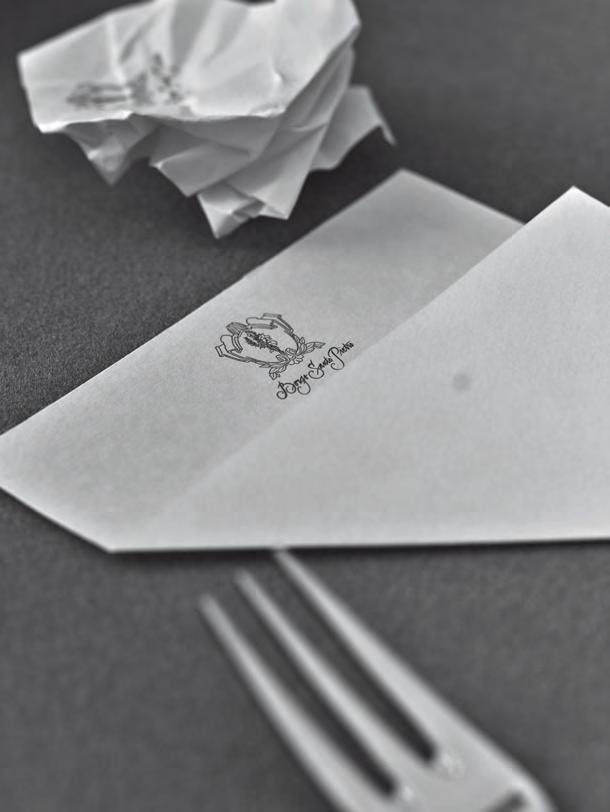
Borgo Santo Pietro
Nestled within a 13th-century villa on a 300-acre estate, this boutique Tuscan hotel is home to a cooking school, holistic spa, sprawling gardens, and a farm that provides key ingredients for the property’s organic Seed to Skin skincare range. Its 22 guest rooms and suites present detailed decor and personalized services as fantastical as the location itself.

Half Moon Jamaica
Considered the grande dame of Jamaican resorts, this 70-yearold, 400-acre Montego Bay property has hosted everyone from British royalty to Will Smith and has the amenities to prove it: multiple dining options, a sprawling golf course, the incredible Salamander spa, and long stretches of pristine beach that also act as protected areas for sea the turtles that return each year to lay their eggs.

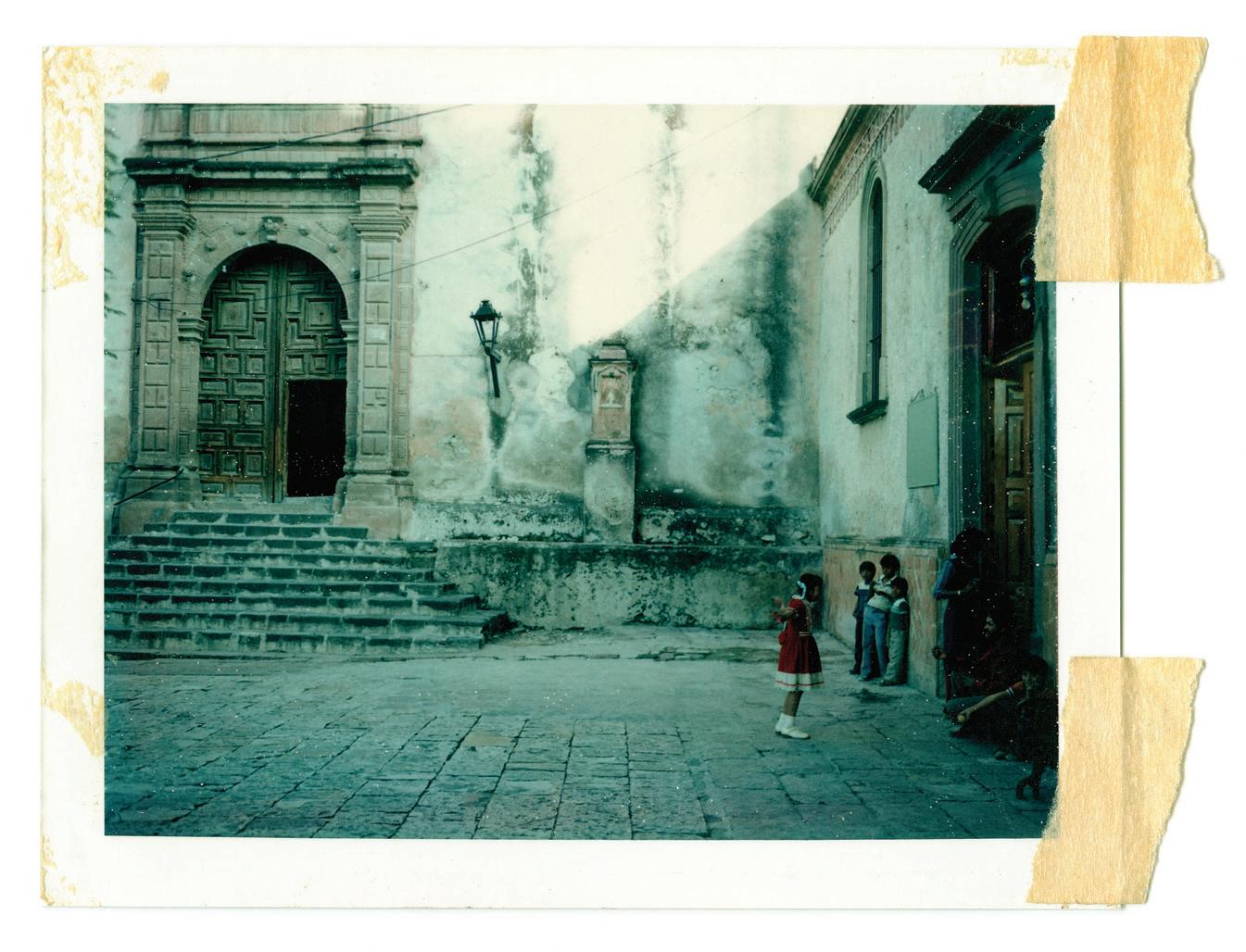
Deborah Turbeville’s photographs of Mexico, which epitomize the artist’s line-blurring version of reality, get their due in a new Louis Vuitton Fashion Eye album.


If you followed the tony American and European fashion magazines of the early 1970s, you may have seen some of the era’s seminal fashion photography: Francesco Scavullo’s cover of Raquel Welch in Cosmopolitan, September 1973; Helmut Newton’s “Limelight Nights” series in British Vogue , October 1973; or Guy Bourdin’s 1977 Charles Jourdan campaign. These works embraced a newfound cultural zeitgeist of “female liberation,” with an overt sexual aesthetic. The glamorous women in their photographs held their own in a man’s world (and against a man’s gaze) with glossy lips and long, red nails. Aspirational modern life was depicted in saturated color and slick surfaces, meant as an expression of independence and power. This was fashion photography from almost an entirely masculine point of view.
The brash aesthetic met a direct challenge in 1975 when Vogue editorial director Alexander Liberman commissioned Deborah Turbeville to photograph swimsuits. Turbeville was fairly new to photography at the time, having served primarily as a fashion editor. Legend goes that Liberman told Turbeville he “expected the unexpected” from her. She delivered with her now iconic Bathhouse series, published in the publication’s May issue. The story generated substantial controversy: The clothes seemed beside the point; her models, rarely facing the camera, were arranged in odd, slightly macabre poses; the mood is voyeuristic and erotic. And the environment — an abandoned turn-of-the-century bath house — seemed the absolute antithesis of fashionable (some even read the location as an ill-conceived reference to the Holocaust gas chambers, which Turbeville emphatically denied). The images bluntly undermined the era’s fashion photography conventions.
Turbeville was born in Boston, Massachusetts, and grew up between the city and the coastal town of Ogunquit, Maine. She studied dance and theater and had a love of literature. After one semester at the University of Georgia, she moved to New York, intending to pursue theater work. She was discovered by famed fashion designer Claire McCardell, who hired her as an assistant and fit model. Through McCardell, Turbeville met Diana Vree-
land, who brought her on as an editor for Harper’s Bazaar. There, Turbeville worked with photographers including Richard Avendon and Diane Arbus. In her mid-30s she took a photography workshop with Avedon and Marvin Israel, who both recognized her innate talent, which she further developed during trips home to Maine. In fact, the first photographs Turbeville shared with Vogue editors contained no “fashion” at all — they were photographs she’d taken in Ogunquit. In a 2011 interview with The New Yorke r, Turbeville confessed she didn’t think of herself as a fashion photographer at all. And really, she made no distinction between her personal work and her commercial photography — from her 1981 campaign with Comme des Garçons; to Unseen Versaille , a book commissioned by Jacqueline Kennedy (then an editor at Doubleday), where she was given unparalleled access to the palace; to her experimental, unpublished photo novella Passport: Concerning the Disappearance of Alix P. She would distress prints, rip, collage, juxtapose, and tape them, creating exquisite, unique objects.
In 1986 Turbeville purchased an 18th century monastery in San Miguel de Allende called Casa No Name. Her interpretation of Mexico shares the same sense of place, the same unerring composition, the same soft focus and romantic sensibility, as her most celebrated Vogue photographs. The work exists out of time and in its own universe. Explaining it she once stated: “This country signals something to me all the time. I want to photograph the textures and the feeling it gives me.” Indeed, Mexico by Deborah Turbeville, a new album in the Louis Vuitton’s Fashion Eye series, includes some never-before-seen images and represents a lesser-known version of Turberville at her peak of her artistic powers. And, like all her imagery, it is distinctively hers: a unique and feminine voice defying easy definition.
The photographs on these pages are from the new album Mexico by Deborah Turbeville, part of the Fashion Eye collection by Louis Vuitton, which is available starting November 2024, as are two additional albums: Iceland by Jackie Nickerson and Scotland by Alasdair McLellan.


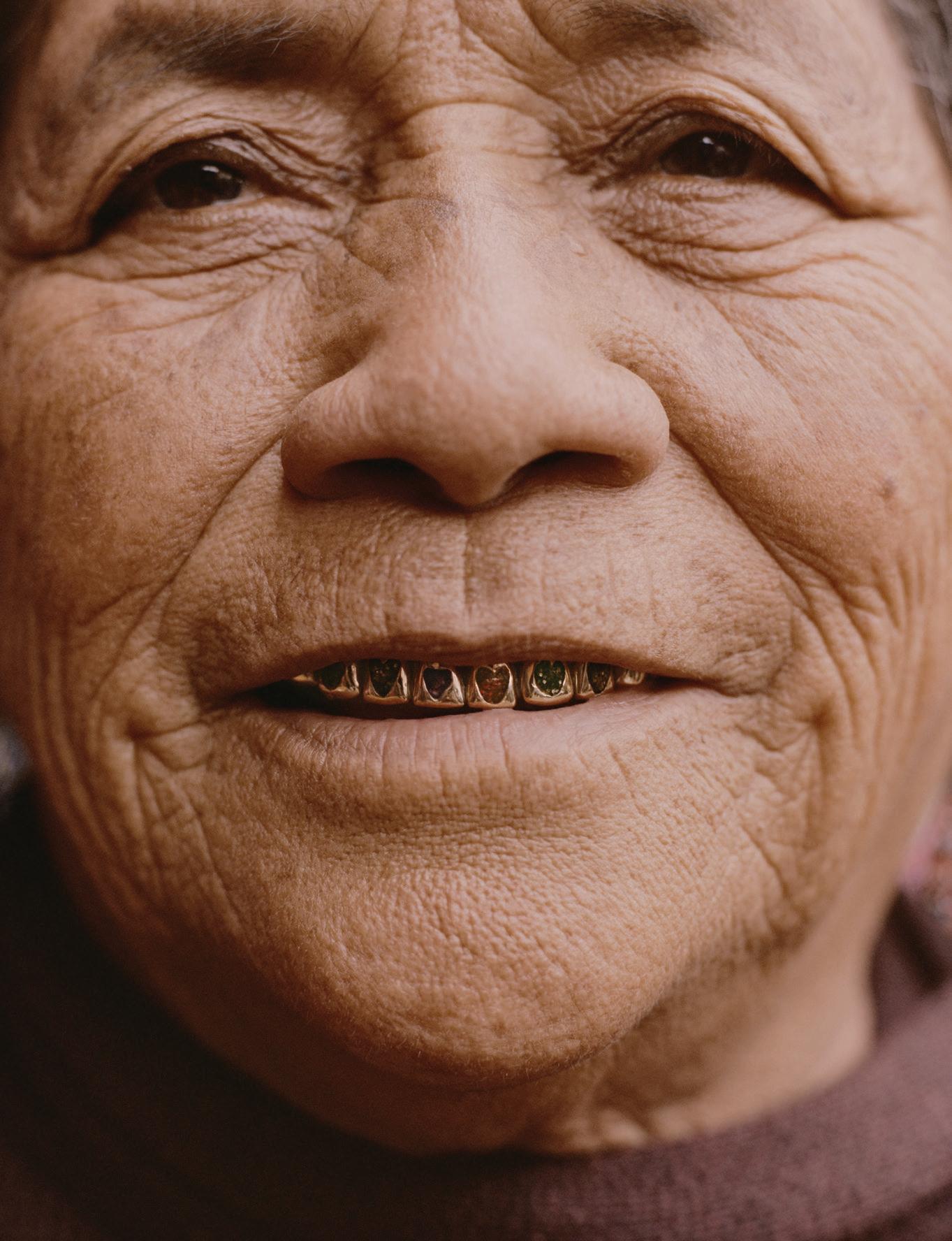
fluent in technology and global content.
Words by Erin Dixon
by Juan Brenner
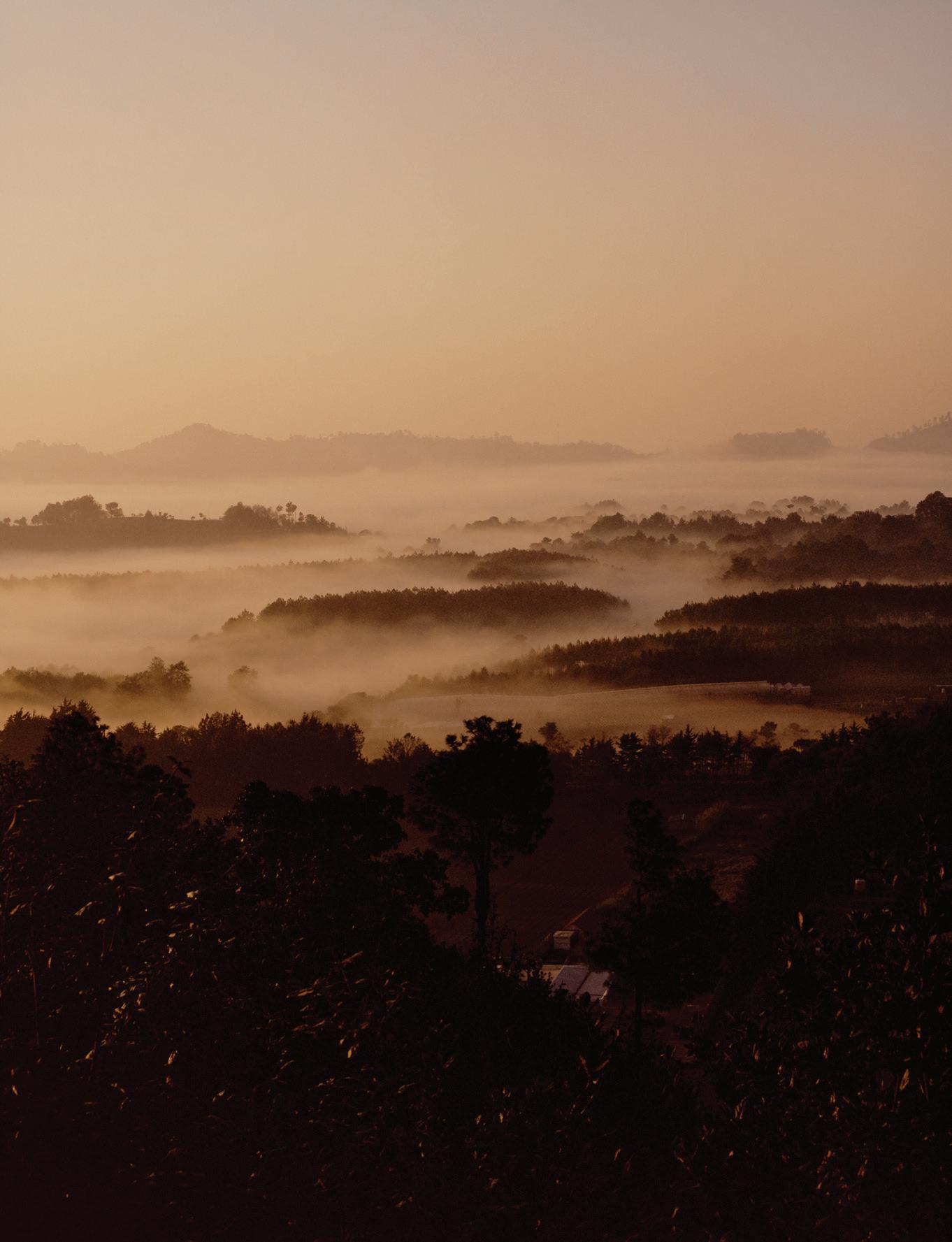
Juan Brenner’s new photobook captures the intersection of history, culture, legacy, and potential that characterizes the Guatemalan Highlands and its young generation’s exchange with the world.
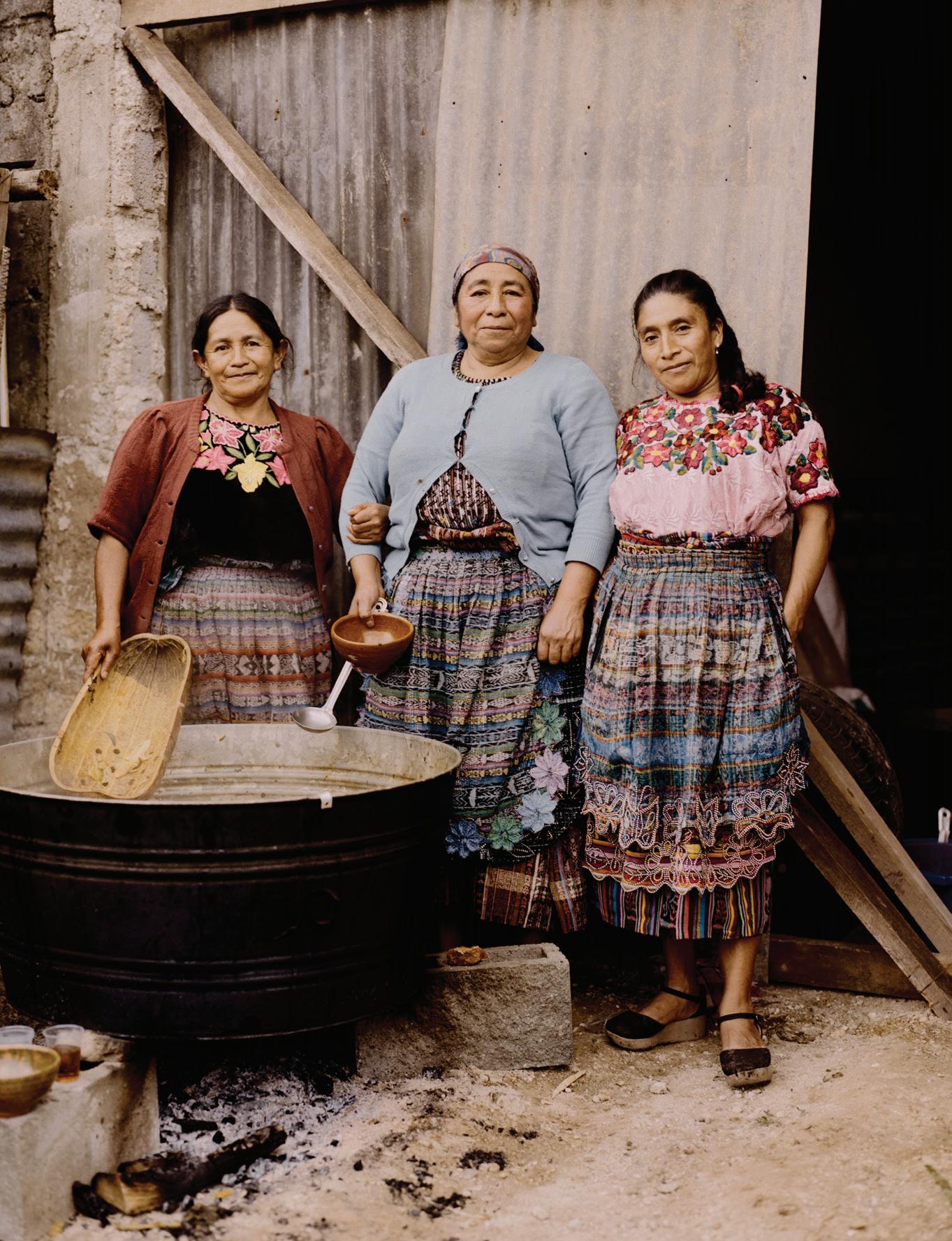
San Andrés Semetabaj, Sololá, 2022
Three ladies prepare a meal for more than 200 guests at their most important annual local event. Their outfits, rich in color and detail, suggest privilege, and their food, crafted and served in an artisanal manner, reflects tradition and community spirit.
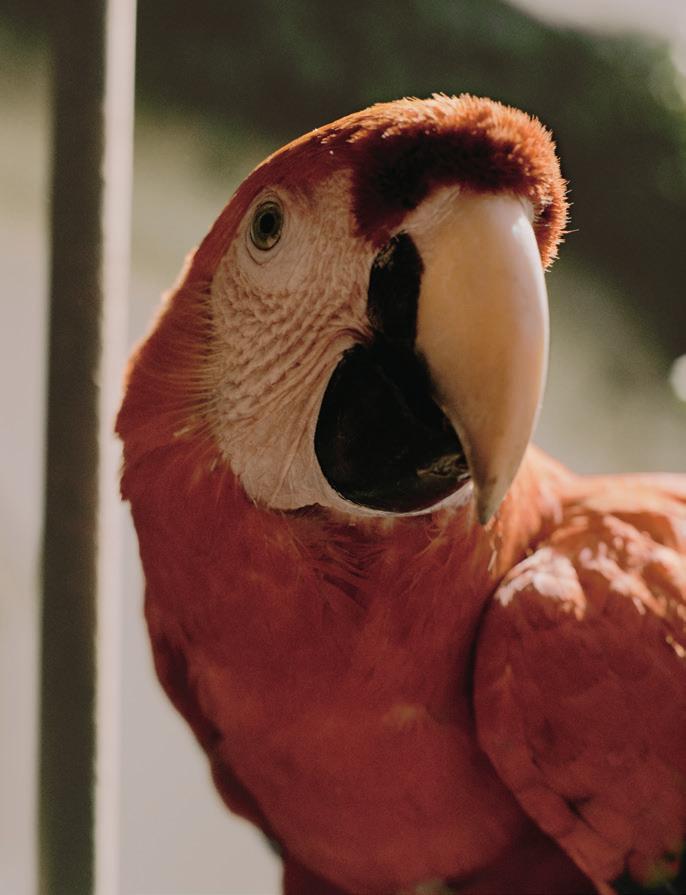
An illegally obtained guacamaya (an endangered native bird) adorns the corridors of a prominent hotel in Chichicastenango. It’s but one example of people going to dramatic lengths to prove their wealth and good taste, often at the expense of environmental ethics and conservation efforts.

To categorize is an evolutionary instinct developed to give the world order and meaning. It helps us navigate the unknown through past learnings, to determine the appropriate reaction for an unfamiliar moment. Yet to classify is also to flatten, transmuting technicolor into black and white. It perpetuates past narratives as present-day truths, blurring the line between delusion and dream.
Photographer Juan Brenner’s new monograph Genesis acutely documents these limitations. An open-ended yet unflinching portrait of the Western Highlands of Guatemala, it chronicles a concentric multiverse that, to much of the world and sometimes to itself, remains an enigmatic cipher of time, place, culture, and identity. It is too stratified, nuanced, and dynamic to be neatly ordered — just as Brenner’s own identity and trajectory as a self-taught artist who left a successful fashion photography career in New York to recover from its lifestyle demands and related drug addiction in his native Guatemala does not fit squarely into a conventional mold.
Upon his return to his home country, Brenner abandoned his craft for five years before embarking on a new photographic chapter — one that examines himself, his territory, and his place in it through work that explores hierarchical structures and cultural hybridization, globalization and gentrification. Genesis, then, as reflected in Brenner’s journey towards and while making it, could be extrapolated to hypothesize: To move towards an evolved world, we must return to its origins. We must unlearn. We must quiet the impulse to classify and, instead, surrender to the cacophony, allowing it to reshape our perceptions of progress, destruction, and potential.
Andrés owns a shoe store in Chimaltenango’s main city. A descendant of Kaqchikel, he stands out as a unique figure in one of the most dense and complex places in the territory, embodying a blend of tradition and modernity.

Totonicapán; 2022

Chichicastenango, Quiché, 2021 Dressed in expensive boots, a leather vest, and gold chains, this unidentified man likely holds significant power in his community. His blend of traditional cowboy style with narco-influenced symbols, including a prominent scorpion motif, nods to the cultural and economic influences shaping fashion in the Highlands.

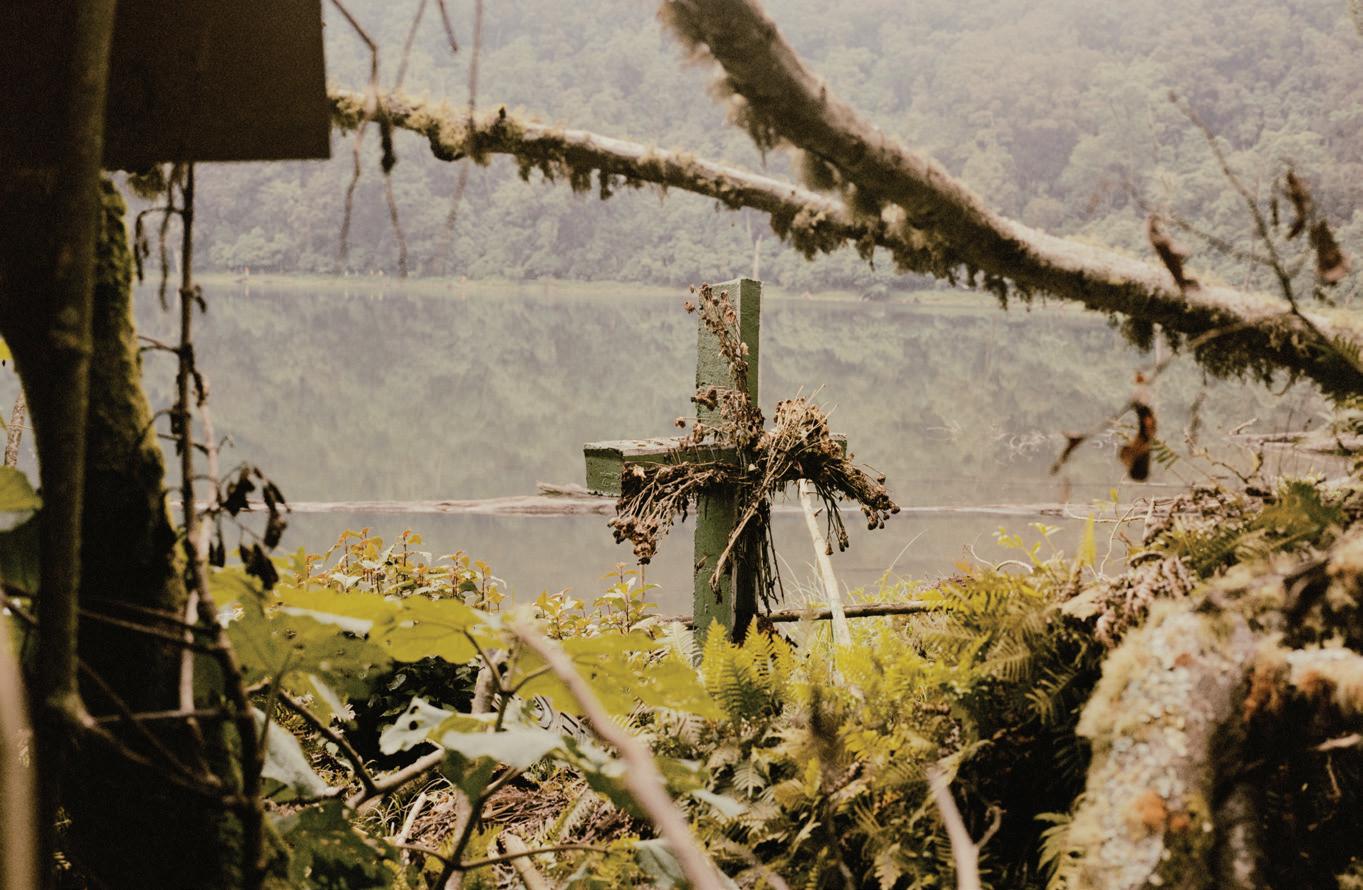
Almolonga, Quetzaltenango, 2019
Laguna Chicabal is one of the holiest sites in Mam culture, revered for its sacred portals to the underworld. The lake, situated in a volcanic crater, is a pilgrimage destination for traditional ceremonies and rituals that honor ancestral spirits and natural forces.

A group of teenage friends swim in a private
in
Such scenes are becoming rarer as the Highlands change due to modernization and safety issues.

Chichicastenango, Quiché, 2021 Evelyn, 17, with her extensions, red-dyed hair, long nails, and short dress, defies traditional norms for women in the Highlands. Influenced more by social media than traditional Highland culture, Gen Z’s fashion choices prioritize contemporary trends and personal expression over conventional expectations.
Chichicastenango, Quiché, 2021
Felipe, a store owner in Chichicastenango, wears elaborate cowboy attire, which is highly popular in the region. His clothes are adorned with intricate embroidery, which is expensive to produce, and feature agro images, like cows, that reflect a blend of Western style and narco-cultural influences.


Chimaltenango, 2018
Second-hand clothing is transforming Highlands fashion. Teenagers are embracing a new aesthetic as they integrate “hyped” sportswear brands, received through Goodwill donations, into their wardrobes.
Chichicastenango, Quiché, 2021
A lady carries a large hen she has just purchased. Buying the biggest animal showcases her power. Her clothing is handmade and of very high quality, likely costing over $1,000. In the Highlands, such attire allows observers to decode social standing, position, and, of course, taste.



Scents of Place
From an oil that recalls the blooming Damask roses of Turkey’s Isparta region to a limited-edition bottle with an ancestral design from France’s Cévennes region, these dimensional fragrances collapse locale and time.

Ffern

D.S. & Durga Big Sur Eucalyptus, a verdant, piquant eau de parfum.



Chanel’s N°5, a floal-aldehydic eau de parfum in a limited-edition bottle.






Molteni&C D.847.1, a console table that gives new life to Gio Ponti’s original vision, which was designed 70 years ago and is still Made in Italy.





Danny Kaplan Antonia 26, a deceptively simple lamp from a designer with both New York and Aix-en-Provence, France, roots.
From design touches that take inspiration from their origins to furniture with a destination-based legacy of make to Buenos Aires-scented incense, these treasures carry you around the globe in an instant.

pedigree and legacy dating back 1937.

Classic for a Reason
From a multifaceted scarf to handcrafted leather that only gets better with age, these enduring designs possess heritage and panache.






Converse x PLAY Comme des Garçons Chuck 70, a democratic sneaker that represents the best of a beloved collaboration that began in 2009.

DOSSIER // the poem read my lips and follow this line, this way, this wonder, this wandering eye, this every here — a home in motion, a world very wide, a very rich hour, a memory — the personal kind.

To celebrate Dossier ’s relaunch, we invited Thomas Dupal to create a poem inspired by the magazine. A poet, performer, astrologer and brand poet based in Paris, Dupal crafts tailored textual creations and brand manifestos — for the likes of Chanel, Celine, and now Dossier —
drawing on their astrological charts to �nd new, meaningful ways to tell their stories. Inspired by the troubadours of Europe’s Dark Ages, he also writes and performs solo acts about how technology is changing humankind, most recently at ASVOFF. @thomasdupal

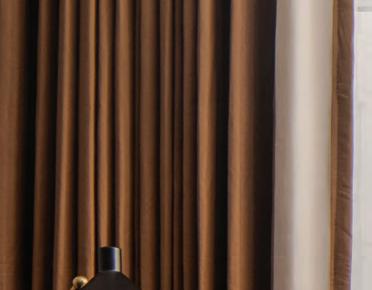
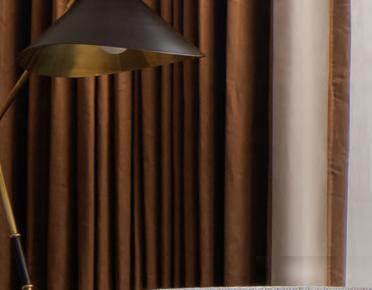

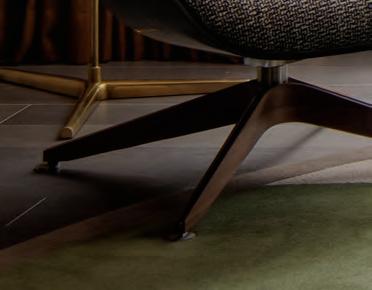
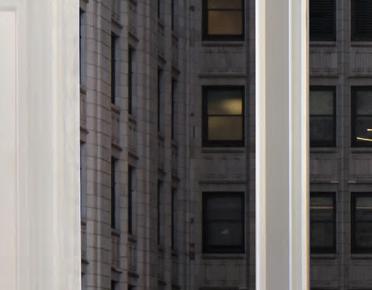
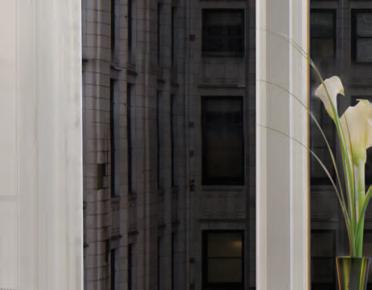

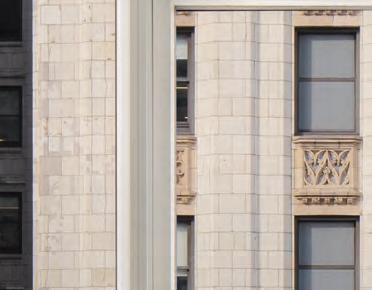

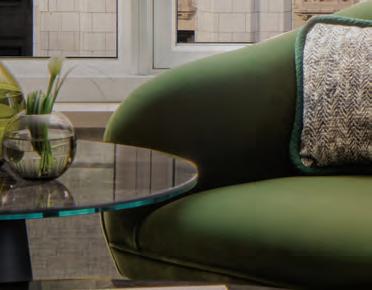
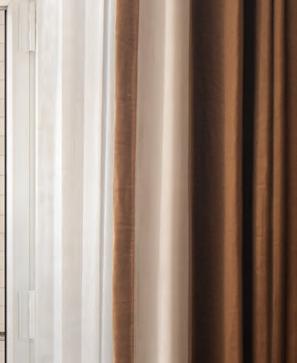


Step into a world of understated luxury, where each suite reflects the character of a Tribeca loft—curated, collected, and uniquely personal. Connect to the pulse of downtown—a place where discovery, authenticity and culture converge.




